
The Microbiome Solution
by
Robynne Chutkan M.D.
Published 5 Aug 2015
As we’ll learn in the second part of this book, restoring those lost microbes takes real commitment. While there is no perfect microbiome, some are clearly healthier than others, notwithstanding the incredible variation from one to the other. The Human Microbiome Project and other research efforts like it seek to establish what the “normal” human microbiome looks like today—an important endeavor, considering the rate at which our microbial landscape is changing. Companies like uBiome allow the citizen scientist to catalogue his or her own microscopic habitat, compare it to others, and reassess it as diet and habits change. The human microbiome may well be the next big frontier in medicine, providing answers to why we get sick and novel solutions for how to heal ourselves.
…
I had been trained at world-class institutions and practiced gastroenterology at a leading teaching hospital, but, like most physicians, I had no idea that the antibiotics I thought were so helpful were actually creating illness by decimating her microbiome at a time when it was most vulnerable, making her more susceptible to infection and inflammation. I wish I had known then what I know now and what I continue to learn every day: that illness is often the result of a decreased, not increased, bacterial load, and that less is sometimes more when it comes to medical intervention. Rehab for Your Microbiome Every day in my gastroenterology practice I see patients with the telltale signs of a disordered microbiome: bloating, leaky gut, irritable bowel, gluten intolerance, Crohn’s disease, ulcerative colitis, eczema, thyroid disorders, weight problems, fatigue, and brain fog.
…
Infancy When we are babies, everything eventually ends up in our mouth. It’s one of the ways we interact with our environment. It’s also one of the ways our environment interacts with our microbiome, allowing bacteria from our home, our siblings, and even our pets to gain access to our gut and help train our immune system to distinguish friend from foe. Factors like family size, early nutrition, and the quality of our water supply have a profound effect on our blossoming microbiome. Not surprisingly, as infants our microbiome most closely resembles that of other household members, especially our mothers. But it’s a constantly changing and evolving mix, with lots of species diversity, and events like a fever, a dietary change, or a course of antibiotics can have a major ripple effect.
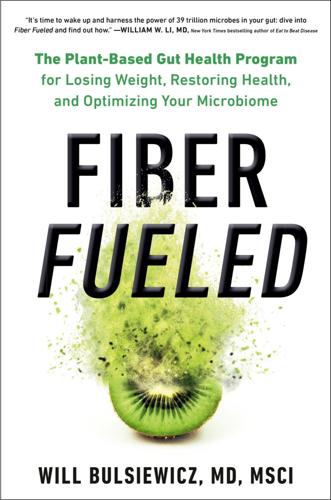
Fiber Fueled: The Plant-Based Gut Health Program for Losing Weight, Restoring Your Health, and Optimizing Your Microbiome
by
Will Bulsiewicz
Published 15 Dec 2020
Cardiologists are screaming and shouting that it causes obesity, heart disease, and diabetes. Low-carb dieters disagree, and Time magazine says “Butter is back.” But what does the microbiome say? The results in the microbiome have been consistent. Saturated fat encourages the growth of inflammatory microbes like Bilophila wadsworthia, alters intestinal permeability, and leads to the release of bacteria endotoxin. Translation: saturated fat causes dysbiosis. It even disrupts our normal biological rhythm in a way that promotes obesity. If you care about the health of your microbiome, then “Butter is not back” and we should probably rethink this ghee- and coconut-oil-in-the coffee fad.
…
Knight is a god of gut health, in my opinion. He created the American Gut Project in 2012, the largest and most diverse study of microbes and microbiomes of the industrialized world. Dr. Knight was at the podium to announce the greatest predictor of a healthy microbiome using the full, unprecedented strength of his American Gut database. An announcement coming from the highest-quality source we have that would redefine how we think of gut health. His finding? The single greatest predictor of a healthy gut microbiome is the diversity of plants in one’s diet. That’s right. Not Metamucil, not simply counting grams of fiber, but the diversity of plants in your diet.
…
Put down the capsule and pick up an apple because a single apple may contain as many as one hundred million bacteria. Plants have a microbiome, too! Just like in humans, the microbes contribute greatly to the health and development of the apple from flower to fruit. The apple has tremendous diversity, with literally thousands of species. In fact, organically produced apples have not only more microbial diversity, but they also have a shift toward higher levels of microbes known to have a benefit on human health, such as the probiotic Lactobacilli. Scientists now believe that this exchange between the plant microbiome and the human gut microbiome may be of special importance for human health and a crucial source of microbes for our gut.

The Diet Myth: The Real Science Behind What We Eat
by
Tim Spector
Published 13 May 2015
While a great result for Mary, what this didn’t explain was why she hadn’t had problems earlier, or why her twin sister with the exact same genetic make-up was unaffected, despite following a similar diet. Once again, their microbiomes may have been to blame. Studies of other patients with lactose intolerance have shown the same variable response to milk, but when patients with consistent problems have been given a normally indigestible prebiotic substance called GOS (galacto-oligosaccharide) which can alter your microbiome, they saw dramatic benefits compared to subjects given the placebo treatment. After two months their microbiomes had changed quite dramatically.11 When questioned more deeply, Mary remembered she had suffered a bad stomach infection at the end of her trip to Delhi and had needed several long courses of broad spectrum antibiotics.
…
Those elderly part-time residents who sometimes cooked for themselves and ate non-institutional meals had healthier microbiomes than those with the communally prepared food. There was some variation, but within a year of entering the long-stay nursing home all the residents had very similar and unhealthy microbiomes. In elderly people there are many complex reasons why the body deteriorates. These include loss of muscle through lack of physical exercise, depression, social circumstances and loss of cognitive function. The loss of teeth, changes in saliva, and the increasing use of antibiotics and other drugs can also affect the microbiome. With age, we see increases in the number and dysfunction of the protective Treg cells, which as we know interact with our microbes and at this point in life can over-suppress the immune system.
…
Even when all these other factors were accounted for, diet and nutrition remained the dominant factor in determining the microbiome and its relation to health in the elderly. The residents with the least diverse gut microbiomes were far more likely to be frail and suffer from illnesses – and whatever the cause, were more likely to die within a year. When Claire Steves in my lab looked at 400 of our older UK twins living independently who were generally frail, she found that they had a less diverse microbiome than average and lower numbers of microbes associated with suppressing inflammation and gut leakiness, such as F. prausnitzii.

Hormone Repair Manual
by
Lara Briden
Published 14 Apr 2021
We’ll explore treatment in the Autoimmune thyroid disease section of Chapter 8. Gut microbiome Your gut microbiome is the sum of your gut bacteria. When you have a friendly gut microbiome, it helps to reduce inflammation, regulate the HPA axis and support a healthy mood. When you have an unfriendly microbiome, or dysbiosis, it can generate inflammation and interfere with many aspects of a healthy perimenopause transition. As we’ll see in Chapter 9, too many of a certain type of unfriendly bacteria can impair estrogen metabolism and contribute to heavy periods. Dysbiosis can also affect the health of your vaginal microbiome and worsen the symptoms of dryness and vaginal irritation that we’ll cover in Chapter 10.
…
Diet and lifestyle for GSM Natural treatment of GSM is primarily about maintaining the health of 1) the epithelial cells that line the vagina, and 2) the community of friendly bacteria that live in the vagina (vaginal microbiome). In fact, maintaining a healthy vaginal microbiome has been found to prevent BV and UTIs, as well as improve GSM symptoms such as dryness, atrophy and pain. TIP Did you know? A healthy vaginal microbiome has low species diversity with predominantly Lactobacillus species. This is in contrast to a healthy gut microbiome, which has high species diversity. There’s a close bi-directional relationship between epithelial cells and the vaginal microbiome. In one direction, healthy epithelial cells make the glycogen that feeds healthy vaginal bacteria; in the other direction, a healthy vaginal microbiome helps to support healthy epithelial cells.
…
In one direction, healthy epithelial cells make the glycogen that feeds healthy vaginal bacteria; in the other direction, a healthy vaginal microbiome helps to support healthy epithelial cells. Vaginal estrogen therapy is highly beneficial for both epithelial cells and the vaginal microbiome because it stimulates the glycogen that feeds vaginal bacteria. Beyond estrogen, diet and lifestyle strategies for GSM include: • Not using douches or wipes because they alter vaginal pH and damage the microbiome. • Not smoking because it lowers estrogen and damages the vaginal microbiome. • Avoiding, as much as possible, antibiotics, which can damage the microbiome. • Movement, especially strength-building exercises for the core and back, can assist with the restoration of normal pelvic floor function

10% Human: How Your Body's Microbes Hold the Key to Health and Happiness
by
Alanna Collen
Published 4 May 2015
Now we have a third player, which sits uncomfortably between nature and nurture. Although the microbiome is strictly an environmental force at work on our eventual characteristics, it is genetic, and it is inherited. Not via eggs or sperm, not via human genes, but a good portion of the microbiome is passed from parents, especially mothers, to offspring. Many parents hope that they pass on the best of themselves to their children; films like Gattaca envisage a future where this wish is not left to chance. Most parents also hope to provide their children with the happiest and healthiest environment that they can manage. The microbiome, with its genetic influence but environmental control, gives parents the power to do both of these things.
…
Targeting gut microbiota in obesity: effects of prebiotics and probiotics. Nature Reviews Endocrinology 7: 639–646. 17. Petrof, E.O. et al. (2013). Stool substitute transplant therapy for the eradication of Clostridium difficile infection: ‘RePOOPulating’ the gut. Microbiome 1: 3. 18. Yatsunenko, T. et al. (2012). Human gut microbiome viewed across age and geography. Nature 486: 222–228. Coda 1. Markle, J.G.M. et al. (2013). Sex differences in the gut microbiome drive hormone-dependent regulation of autoimmunity. Science 339: 1084–1088. 2. Franceschi, C. et al. (2006). Inflammaging and anti-inflammaging: a systemic perspective on aging and longevity emerged from studies in humans.
…
What we failed to appreciate at the turn of the century was that those 21,000 genes of ours are not the full story. The DNA-sequencing technology invented during the Human Genome Project enabled another major genome-sequencing programme, but one that received far less media attention: the Human Microbiome Project. Rather than looking at the genome of our own species, the HMP was set up to use the genomes of the microbes that live on the human body – the microbiome – to identify which species are present. No longer would a reliance on Petri dishes and an over-abundance of oxygen hold back research into our cohabiters. With a budget of $170 million and a five-year programme of DNA sequencing, the HMP was to read thousands of times as much DNA as the HGP, from microbes living in eighteen different habitats on the human body.

Ageless: The New Science of Getting Older Without Getting Old
by
Andrew Steele
Published 24 Dec 2020
The upshot is likely to be worth it, not just in terms of fighting infections, but also to reinforce the immune system’s many other roles around the body, including removing senescent cells and catching early-stage cancer before it becomes a problem. Modifying the microbiome Given the synergistic relationship between our immune cells and gut flora, another thing an improved immune system might help with is our microbiome, maintaining its balance later into life and reducing chronic inflammation. However, as we saw when introducing the microbiome as the new kid among the hallmarks of ageing, we are only just beginning to understand the many factors that affect the health of our microbes, and how their health affects ours. There are probably situations where the quickest intervention is one which deals with the microbiome directly, allowing beneficial bacteria to help the rest of our body out.
…
Gut reaction: changes in the microbiomeNice reviews of how the microbiome changes with age can be found in Thomas W. Buford, ‘(Dis)Trust your gut: The gut microbiome in age-related inflammation, health, and disease’, Microbiome 5, 80 (2017). DOI: 10.1186/s40168-017-0296-0 ageless.link/y49t3u Claire Maynard and David Weinkove, ‘The gut microbiota and ageing’, in Biochemistry and Cell Biology of Ageing: Part I Biomedical Science (ed. J. Robin Harris and Viktor I. Korolchuk) (Springer Singapore, 2018). DOI: 10.1007/978-981-13-2835-0\_12 ageless.link/fgxork Jens Seidel and Dario Riccardo Valenzano, ‘The role of the gut microbiome during host ageing’, F1000Res. 7, 1086 (2018).
…
The wide-ranging changes in all these types of signalling with age means that these messenger molecules are central to the ageing process. 8. Gut reaction: changes in the microbiome There are trillions of microorganisms – bacteria, fungi and viruses – living in and on you right now. These hitchhiking bugs are collectively known as our ‘microbiome’, and they live on our skin, in our mouths and, particularly, in our guts. The microbiome is a hot research topic at the moment because these microbes have turned out to be far more than just passive fellow travellers – they help with breaking down our food, work to keep us free of infection and even, fascinatingly, talk to and help out our immune system.
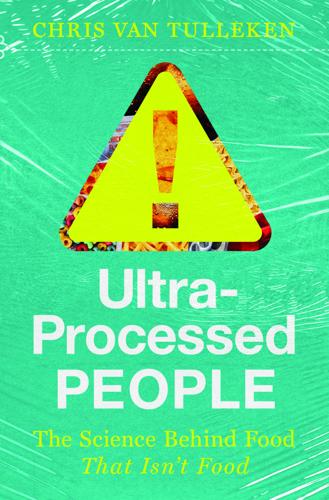
Ultra-Processed People: The Science Behind Food That Isn't Food
by
Chris van Tulleken
Published 26 Jun 2023
Instead, we recruit bacteria to do the job for us. I am referring to the microbiome, the trillions of bacteria, fungi and other microorganisms that live on and inside us. Most of these microorganisms are found in our guts where, whether you’re a cow or a human, they do pretty much the same thing. (We’ll explore the effect that UPF has on the microbiome later, which is potentially one of the ways in which it causes harm.) The cow microbiome is so crucial to its survival that you could invert your idea of a cow and think of it as simply a vehicle for its own microbiome, a fourlegged vessel transporting the microorganisms to the plants of their choice.
…
A huge amount has been written about the microbiome, but our knowledge of it is still relatively small. However, we are starting to get a toehold on some of the basic science, even if we aren’t sure about the implications. During birth, and in the days and weeks thereafter, a new human is colonised by between 10 and 100 trillion microbes.‡ For the first few months of life, the infant immune system and its new microbiome test and shape each other in a complex and poorly understood dance. The infant who is breastfed receives their microbiome from their mother as well as specific antibodies in the milk which favour the development of the useful bacteria.
…
Whether the dysbiosis causes or is caused by these conditions and many others isn’t clear, but it’s possible that they all have their pathogenic origins in an increased reactivity of the immune system to the microbiome. This may happen if our diet induces a change in the population of bugs which damages the gut barrier. This barrier is made of tight links between cells, mucus and immune cells, which work together to keep the microbiome on a tight leash. When it’s damaged, the gut starts to leak microbes and their waste products into the rest of the body. Lots of things in our diet can change the population of the microbiome and the integrity of the gut wall, including fat, fibre and – not least – emulsifiers. Two of the most ubiquitous, and thus the most studied, emulsifiers are carboxymethylcellulose and polysorbate 80.

The Driver in the Driverless Car: How Our Technology Choices Will Create the Future
by
Vivek Wadhwa
and
Alex Salkever
Published 2 Apr 2017
The next big medical frontier after genomics is also already on the horizon: the microbiome, the bacterial population that lives inside your gut. This is a field that I am most excited about because it takes us back to looking at the human organism as a whole. Scientists are coming to the conclusion that the microbiome may be the missing link between environment, genomics, and human health. They are discovering connections between what types of bacteria live inside your body, how your genes behave, and how healthy you feel. Microbiome: Bacterial Rainforest in Your Gut Many children are born with genetic predispositions to type-1 diabetes.
…
(That’s why most diets fail, right?) But we may be able to work around that by creating ways to change the microbiome balance in our bellies using supplements or other delivery mechanisms. And here’s where a rapid pace in scientific advances pays off: a wide-ranging analysis of microbiomes to identify bacterial population patterns in the guts of millions of people could provide a blueprint for the gut contents of disease sufferers and healthy people. This census could inform treatment efforts and allow doctors to more effectively manipulate the microbiome. So a yogurt a day may keep the doctor away, and a tummy full of the right sorts of cheese may be better medicine for many metabolic syndromes than pharmaceuticals or other lifestyle changes.
…
See also Cybersecurity; Identity theft Medical supplies, drones used to deliver, 116–117 Medicine. See Health care Memorial Sloan Kettering Hospital, 124–125, 127 Microbiome, 129–131 Microbiota, human. See Microbiome Minimally invasive education, 58 Mitra, Sugata, 56–59 Moore’s Law, 10–17, 27, 63, 87, 142, 167 Musk, Elon, 8, 45, 93, 99, 153, 185 Mycoplasma mycoides JCVIsyn1.0, 132 Naam, Ramez, 182–183 National Microbiome Initiative, 138 Nest Learning Thermostat, 157, 158, 161, 163–164 Netflix, 69 NIIT, 57, 58 Nilsson, Mans, 185 Nixon, Richard M., 126 Nykvist, Bjorn, 185 Obesity, 65–66 Occupations that could be automated, 97 Office of Personnel Management, 103–104 Online education, 54 history of, 56–59 Open Roboethics initiative, 94, 95 Orwellian future, xiv Osborne, Michael A., 96–97 Pang Kin Keong, 150 Personnel Management, Office of, 103–104 Peterson, Garrett, 168–169 Peterson, Jake, 169 Plasma-based water purification technology (PWSS), 181 Politics, 3, 6–7, 104 Population aging, 91–92 Power grids, central, 187 Powered exoskeleton.

Science Fictions: How Fraud, Bias, Negligence, and Hype Undermine the Search for Truth
by
Stuart Ritchie
Published 20 Jul 2020
The whole endeavour is pointless, in any case: two weeks after all the microbes are flushed out by a colonic irrigation, everything is back to the way it was pre-irrigation. See Naoyoshi Nagata et al., ‘Effects of Bowel Preparation on the Human Gut Microbiome and Metabolome’, Scientific Reports 9, no. 1 (Dec. 2019): p. 4042; https://doi.org/10.1038/s41598-019-40182-9. The nationality of your microbiome: https://atlasbiomed.com/uk/microbiome/results. See also Kavin Senapathy, ‘Keep Calm And Avoid Microbiome Mayhem’, Forbes, 7 March 2016; https://www.forbes.com/sites/kavinsenapathy/2016/03/07/keep-calm-and-avoid-microbiome-mayhem/ 90. Milk: Josh Harkinson, ‘The Scary New Science That Shows Milk Is Bad For You’, Mother Jones, Dec. 2015; https://www.motherjones.com/environment/2015/11/dairy-industry-milk-federal-dietary-guidelines/; bacon: ‘Killer Full English: Bacon Ups Cancer Risk’, LBC News, 17 April 2019; https://www.lbc.co.uk/news/killer-full-english-bacon-ups-cancer-risk/; eggs: Physicians’ Committee for Responsible Medicine, ‘New Study Finds Eggs Will Break Your Heart’, 16 March 2016; https://www.pcrm.org/news/blog/new-study-finds-eggs-will-break-your-heart.
…
There have been recent calls from within the scientific community to cool down the gee-whiz hype surrounding the microbiome and its associated treatments, and to improve the quality of the research.88 In the meantime, the grossly exaggerated claims of these papers and press releases provide the semblance of scientific backing to a host of useless, harmful, or just plain daft microbiome-related remedies: a probiotic drink made using microbes found in the guts of elite athletes that can supposedly boost your performance; the craze for ‘colonic irrigation’, which involves flushing out your bowels with water and comes with ghastly-sounding risks like ‘rectal perforation’; and a direct-to-consumer microbiome testing company that allows you to discover ‘the nationality of your microbiome’.89 * * * Fads like microbiome mania wax and wane, but there’s one field of research that consistently generates more hype, inspires more media interest and suffers more from the deficiencies outlined in this book than any other.
…
Difficile Infection: An Updated Randomized Controlled Trial Meta-Analysis’, PLOS ONE 14, no. 1 (2019): e0210016; https://doi.org/10.1371/journal.pone.0210016; Theodore Rokkas et al., ‘A Network Meta-Analysis of Randomized Controlled Trials Exploring the Role of Fecal Microbiota Transplantation in Recurrent Clostridium Difficile Infection’, United European Gastroenterology Journal 7, no. 8 (Oct. 2019): pp. 1051–63; https://doi.org/10.1177/2050640619854587 76. Microbiome and depression, anxiety and schizophrenia: Jane A. Foster & Karen-Anne McVey Neufeld, ‘Gut–Brain Axis: How the Microbiome Influences Anxiety and Depression’, Trends in Neurosciences 36, no. 5 (May 2013): pp. 305–12; https://doi.org/10.1016/j.tins.2013.01.005; T. G. Dinan et al., ‘Genomics of Schizophrenia: Time to Consider the Gut Microbiome?’, Molecular Psychiatry 19, no. 12 (Dec. 2014): pp. 1252–57; https://doi.org/10.1038/mp.2014.93. Heart disease: Shadi Ahmadmehrabi Shadi & W. H. Wilson Tang, ‘Gut Microbiome and Its Role in Cardiovascular Diseases’, Current Opinion in Cardiology 32, no. 6 (Nov. 2017): pp. 761–66; https://doi.org/10.1097/HCO.0000000000000445.
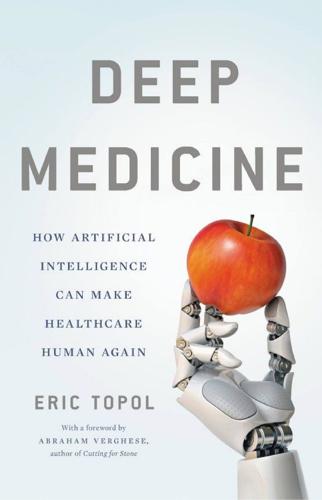
Deep Medicine: How Artificial Intelligence Can Make Healthcare Human Again
by
Eric Topol
Published 1 Jan 2019
At the individual level, there was striking variability. Some people had a low glycemic response to white bread and others had just the opposite. Again, the gut microbiome was the driver. In fact, in the case of these two bread types, it was not just the driver but the sole predictor.26 Our individual gut microbiomes—approximately 40 million communal cells of a thousand different species—play a far bigger role in response to food intake than we had anticipated. There have been many studies that tie the gut microbiome to issues related to diet, including obesity and diabetes, as well as immune disorders and a long list of other conditions, but without unequivocal proof of a cause-and-effect relationship.
…
While initially in Israel it did the glucose monitoring and extensive self-tracking, its US launch involved only taking a gut microbiome sample and having the algorithm predict optimal dietary choices for $329. Subsequently, DayTwo adopted the same plan in Israel, so what I experienced is no longer an offering. DayTwo is not the only company in this space: Viome is a competitor, assessing the microbiome more comprehensively (not only bacteria but also viruses and fungi) for $399 and then using the data to recommend an individualized diet.37 Unlike the Weizmann Institute’s serial reports, however, Viome has not published any peer-reviewed research so far. FIGURE 11.7: My gut microbiome assessment, with my predominant Bacteroides stercoris coinhabitant.
…
The work from Elinav and Segal’s lab is not the only one that has reinforced the status of the microbiome as pivotal to each individual’s response to intake. Michael Snyder, who heads up the genetics department at Stanford University, led a multi-omic study (assessing microbiome, transcriptome, proteome, metabolome, and genome) in twenty-three overweight individuals to characterize what happens with weight gain and loss. With as little as a six-pound weight gain, there were dramatic changes in the gut microbiome species, more than 300 genes exhibited significant change in function, and a release of pro-inflammatory mediators showed up in the blood.38 And these substantial changes were fully reversed with weight loss.
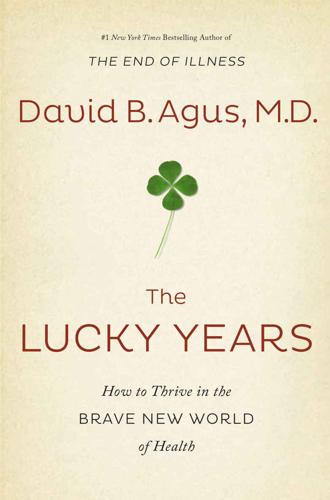
The Lucky Years: How to Thrive in the Brave New World of Health
by
David B. Agus
Published 29 Dec 2015
Yet only in the past decade has science validated and begun to understand Metchnikoff’s bold assertions. In 2015, more studies emerged showing the power of the microbiome, some of which showed how certain foods you eat can change the composition of the bacteria colonies in your gut to either lead your body down the path to metabolic syndrome and obesity, or keep you slender and humming to the right metabolic tune.11 We’ll be exploring more about these findings and the microbiome in chapter 4. In the future, leveraging your microbiome for the better will likely be part of your health equation. In 2008, the European Journal of Immunology paid tribute to Metchnikoff on the hundredth anniversary of his Nobel Prize in a beautifully written article chronicling his life and his contributions to society.12 He was the first scientist to understand natural immunity to infection, the significance of inflammation, the role of digestion in immunity, the importance of gut flora, the implications of “self” versus “nonself” within the context of immunity so the body knows the difference between its own cells and foreign invaders.
…
The state of the microbiome is turning out to be so key to human health that it may actually be considered an organ in and of itself. And how we feel, both emotionally and physically, may hinge on the state of our microbiome. The NIH Human Microbiome Project started in 2008 as an extension of the Human Genome Project to catalog these microorganisms living in our body, and our appreciation for the influence of such organisms has grown rapidly with each passing year.9 Our growing knowledge about the microbiome comes from studying mice that have been altered so that they do not have any gut bacteria. This allows scientists to study the effects of missing microbes, or to expose the “germ-free” mice to various strains of bacteria and record changes in behavior.
…
There will be lots of opportunities to find connections in our complex biology from even the most uncomplicated observations. Case in point: In 2014, it was discovered that artificial sweeteners wreak havoc on the body, disrupting its microbial inhabitants,2 known collectively as the microbiome (a subject I’ll cover in the next chapter). That, in turn, can affect metabolism and blood sugar balance. Although it was exploring the microbiome that finally gave us this insight, we could have known years ago about the relationship between drinking diet soda and increased risk for diabetes had another type of database been already in place to collect the information.
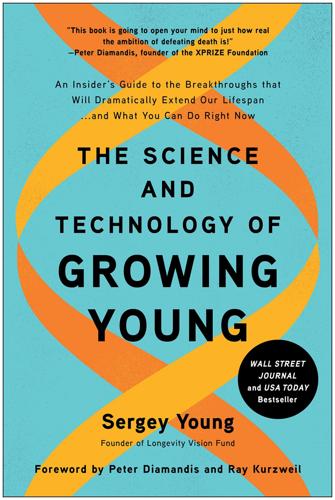
The Science and Technology of Growing Young: An Insider's Guide to the Breakthroughs That Will Dramatically Extend Our Lifespan . . . And What You Can Do Right Now
by
Sergey Young
Published 23 Aug 2021
There are also more robust clinical methods of microbiome diagnostics using next-generation sequencing, or NGS, techniques from equipment makers like Roche and Illumina. The NGS methods take a DNA census of the microbiome sample and identify specific biomarkers with known correlations to disease. For the most part, the information we can get from microbiome diagnostics is still relatively primitive. But as more data are collected and more studies performed, microbiome analysis as a diagnostic tool will become a powerful factor in the quest for accessible, accurate diagnostics. Companies that study microbiome-influenced diseases are beginning to develop therapies to treat them.
…
Henig, “How Trillions of Microbes Affect Every Stage of Our Life—from Birth to Old Age,” National Geographic, last modified December 17, 2019, https://www.nationalgeographic.com/magazine/2020/01/how-trillions-of-microbes-affect-every-stage-of-our-life-from-birth-to-old-age-feature/; Rui-xue Ding et al., “Revisit gut microbiota and its impact on human health and disease,” Journal of Food and Drug Analysis 27, no. 3 (2019), https://doi.org/10.1016/j.jfda.2018.12.012; Sunny Wong et al., “Clinical applications of gut microbiota in cancer biology,” Seminars in Cancer Biology 55 (2018), https://doi.org/10.1016/j.semcancer.2018.05.003; Celeste Allaband et al., “Microbiome 101: Studying, Analyzing, and Interpreting Gut Microbiome Data for Clinicians,” Clinical Gastroenterology and Hepatology 17, no. 2 (2019), https://doi.org/10.1016/j.cgh.2018.09.017. 22Fedor Galkin et al., “Human microbiome aging clocks based on deep learning and tandem of permutation feature importance and accumulated local effects,” bioRxiv (2018), https://doi.org/10.1101/507780. 23Melanoma checkpoint and gut Microbiome alteration With MICROBIOME intervention - full text view. (n.d.). Retrieved March 09, 2021, from https://clinicaltrials.gov/ct2/show/NCT03817125 24The Center for Disease Control only recommends this test once per four to six years for those without any family history of high cholesterol or other health issues.
…
They affect your epigenetic expression, your emotional state, your decisions and temperament, what foods (and how much of them) you crave, the health of your skin, your allergies and the function of your immune system, your body’s reaction to various drugs, the likelihood that you will be obese or develop diabetes, and the likelihood that you will develop hypertension, atherosclerosis, heart disease, multiple sclerosis, and quite a few types of cancers.21 Your microbiome is so closely linked to overall health and well-being that Deep Longevity, an AI company in Hong Kong, even developed a “biological clock” that can guess your chronological age within four years’ accuracy, using ninety-five markers from your microbiome.22 Given the close relationship between the microbiome and so many aspects of our health, it is no surprise that a cohort of new companies has begun to develop ways of diagnosing and monitoring health using nothing but the microbiome. Start-ups like Viome and Ixcela, for example, use a small sample of your stool to provide a low-cost health analysis and proposals for diet and supplements that they say will help you feel and live better.
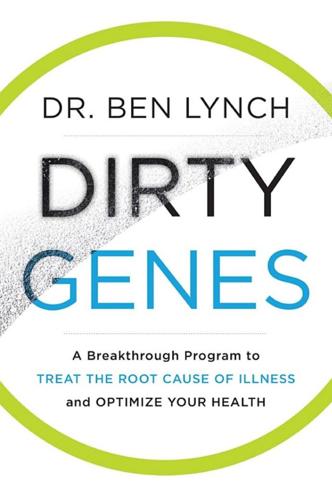
Dirty Genes: A Breakthrough Program to Treat the Root Cause of Illness and Optimize Your Health
by
Ben Lynch Nd.
Published 30 Jan 2018
* * * High-Histamine Foods and Drinks Here are some of the major histamine culprits: ■Aged cheeses ■Alcohol—all types, but especially champagne and red wine ■Bone broth ■Chocolate ■Citrus fruits and juices (except lemon, which is well tolerated by most) ■Cured meats: salami, some types of sausage, corned beef, pastrami, and the like ■Dried fruits ■Fermented foods, including yogurt, sour cream, kefir, raw sauerkraut, kimchi, pickles, and fermented vegetables ■Fish, especially smoked or canned; and certain types of fresh fish, especially when raw (as in sushi) ■Fruit juices ■Soured foods—for example, foods marinated in lemon or orange juice ■Tomatoes when raw; cooked are typically okay ■Spinach ■Vinegars (although some people do well with unfiltered, organic apple cider vinegar) * * * Your Marvelous Microbiome Just a few years ago, almost no one had heard of the microbiome, and yet it’s one of the most important parts of your anatomy. Well, it’s not exactly your anatomy. Your microbiome is composed of trillions of bacteria that live in your gut and elsewhere in your body, with cells outnumbering your human cells by a factor of 10 to 1, and genes outnumbering your human genes by a factor of 150 to 1. The microbiome evolved along with us, so there are many functions in our body that simply wouldn’t work without the assistance of this microbial community.
…
■Alzheimer’s disease ■Amyotrophic lateral sclerosis (ALS) ■Anxiety ■Autism ■Autoimmune conditions, including Graves’ disease, Hashimoto’s thyroiditis, multiple sclerosis, rheumatoid arthritis ■Cancer ■Chemical sensitivity ■Chronic infections such as hepatitis, mold reaction, Epstein-Barr, Helicobacter pylori, and Lyme disease ■Crohn’s disease ■Depression ■Diabetes, types 1 and 2 ■Eczema ■Fatigue ■Fibromyalgia ■Heart disease ■Hypertension ■Hearing loss ■Homocysteine surplus ■Infertility ■Keshan disease (a type of heart problem) ■Mental disorders, including major depressive disorder, bipolar disorder, schizophrenia, and obsessive-compulsive disorder ■Migraine ■Obesity ■Parkinson’s disease ■Pregnancy complications ■Psoriasis ■Seizure ■Stroke ■Ulcerative colitis ■Vision loss (progressive worsening) * * * GST and Your Microbiome There are many types of GST gene, each with its own unique job. They reside mainly in the intestines and liver—but your microbiome also has its own GST enzymes. In fact, your microbiome is a key player in your body’s effort to get rid of xenobiotics, protecting you against chemical and oxidative stress. Think of your microbiome as your GST’s main backup—and make sure to protect it! * * * What Makes GST/GPX Dirty? ■Exposure to a lot of industrial chemicals, heavy metals, bacterial toxins, and plastics.
…
They ferment it as they feed on it, producing acids and other biochemicals that are vital to a number of different human functions, from digestion to the regulation of thought and mood. You want a strong, diverse, robust microbiome that includes a variety of gut bacteria in the right proportions. Because when your gut bacteria go out of balance—when you have too much of some types and not enough of others—then, my friends, you’ve got trouble. Antibiotics, which kill dangerous bacteria but also destroy big swaths of your microbiome, can contribute to this imbalance. So can stress, a long-term illness or infection, poor diet, toxic exposure, and digestive issues such as leaky gut syndrome.
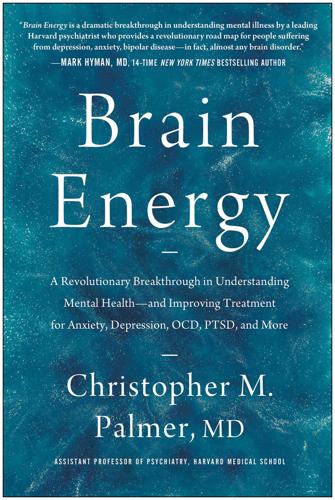
Brain Energy: A Revolutionary Breakthrough in Understanding Mental Health--And Improving Treatment for Anxiety, Depression, OCD, PTSD, and More
by
Christopher M. Palmer Md
Published 15 Nov 2022
For example, animal studies have shown that gut microbes can affect weight. In one study, researchers found that the microbiome in obese mice extracts more nutrients and calories from food than in thin mice. When this obese microbiome is transferred to thin mice, the thin mice gain weight.25 There is also increasing evidence for the role of the gut microbiome in mental disorders. Animal models and small human trials have shown that the gut microbiome appears to play a role in depression, anxiety, autism, schizophrenia, bipolar disorder, and eating disorders. There is also evidence for the role of the gut microbiome in epilepsy and neurodegenerative disorders. Gut bacteria get first dibs on all the food we eat.
…
Those with medical or mental disorders should only do this diet with medical supervision, as there are risks and side effects, and prescription medications usually need to be adjusted or stopped safely. The Gut Microbiome As mentioned, there is no question that the gut microbiome plays a role in mental and metabolic health. In terms of proven interventions, however, this field is in its infancy. Here are four types of interventions to consider: 1.Avoid antibiotic exposure if possible. Antibiotics are known to disrupt the microbiome, and they can sometimes directly cause mitochondrial dysfunction. In addition to not taking antibiotics unless necessary, it’s important to avoid eating foods that contain antibiotics, such as meat, fish, eggs, milk, and other products that commonly contain antibiotics fed to the animals.
…
Where to Start All the contributing causes and interventions I have discussed are interrelated and affect each other. If one factor is off, others will be, too. For example, if your sleep is off, your eating behavior and use of substances might be as well. Even something like the gut microbiome can be affected by sleep, light exposure, and stress. So if your microbiome is off, changing these other contributing causes might correct that issue. Alternatively, changing your microbiome might improve your sleep or stress levels. Think of everything as being part of one or more feedback loops. Therefore, all the treatments outlined in this book are possible treatments for you, even if you don’t recognize that you have a problem in these areas.
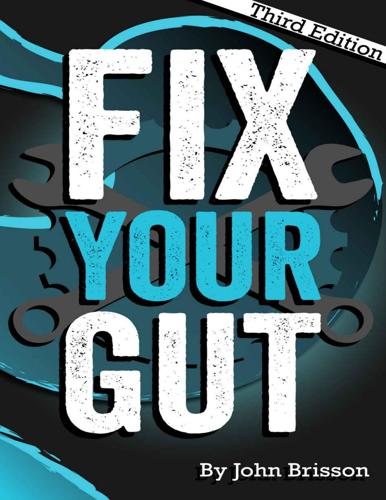
Fix Your Gut: The Definitive Guide to Digestive Disorders
by
John Brisson
Published 12 Apr 2014
H. pylori may be one instance where microbiome diversity of a specific strain might be a bad thing for your gastrointestinal health. The transient nature of the bacteria and being able to embed itself deeply within the mucosal barrier and avoid immune system detection is why it can be so hard to biopsy accurately. This causes issues for accurate studies and diagnosis of opportunistic bacteria to help further understand the nature of H. pylori and in being able to help people who are made ill by an overgrowth of this Gram-negative bacteria. There is so much we do not know about H. pylori or our microbiome as a whole. We will continue learning about this fascinating bacteria together in part three, which will be on the perils of opportunistic H. pylori.
…
Evil? Supplementation Protocol to Reduce H. pylori Colonization Certain supplements are more localized to the upper gut, others affect the intestinal or systemic microbiome. Supplements that would reduce intestinal microbiota diversity and should not be used in a first round protocol unless necessary include: Allicin-C Berberine Lactoferrin Interphase plus NAC Oil of oregano Supplements that work systemically and may reduce systemic microbiome diversity and should not be used unless necessary include: NAC Oil of oregano Part 1: Antimicrobial Supplements Depending on the infection load of H. pylori, multiple agents may be needed to achieve remission.
…
How to Prevent Appendicitis and What to Do If You Have Yours Removed Prevention of appendicitis is paramount, and constipation is its primary cause. Here are some tips to prevent appendicitis and what you can do to avoid an appendectomy hopefully: Relieve constipation. Use a squatty potty, eat a wide variety of seasonal fruits, vegetables, and starches (sans gluten) to increase microbiome diversity, make sure you are getting in enough magnesium, and ensure that you are staying well hydrated. Maintain microbiome diversity and MMC function using prebiotics occasionally like GOS or arabinogalactan. Squat when you defecate. The problems with sitting on the toilet instead of squatting are numerous. When you sit on the toilet, it makes a narrow anorectal angle.
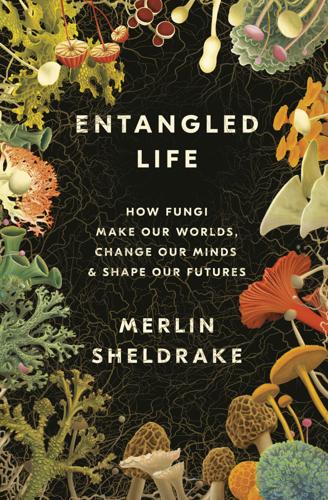
Entangled Life: How Fungi Make Our Worlds, Change Our Minds & Shape Our Futures
by
Merlin Sheldrake
Published 11 May 2020
“For creatures your size I offer / a free choice of habitat, / so settle yourselves in the zone / that suits you best, in the pools / of my pores or the tropical / forests of arm-pit and crotch, / in the deserts of my fore-arms, / or the cool woods of my scalp.” ubiquitous feature of life: For organ transplants and human cell cultures see Ball (2019). For an estimate of the size of our microbiome see Bordenstein and Theis. (2015). For viruses within viruses see Stough et al. (2019). For a general introduction to the microbiome see Yong (2016) and a special issue of Nature on the human microbiome (May 2019): www.nature.com/collections/fiabfcjbfj [accessed October 29, 2019]. dark matter, or dark life: In a sense, all biologists are now ecologists—but disciplinary ecologists have a head start and their methods are starting to seep into new fields: A number of biologists are starting to call for the application of ecological methods to historically non-ecological fields of biology.
…
“I dealt with these ‘contaminant’ organisms for a long time,” he recalled, “until I convinced myself that there was no such thing as lichens without ‘contamination,’ and we found that the ‘contaminants’ were remarkably consistent. The more we dug in, the more they seemed to be the rule not the exception.” Researchers have long hypothesized that lichens might involve additional symbiotic partners. After all, lichens don’t contain microbiomes. They are microbiomes, packed with fungi and bacteria besides the two established players. Nonetheless, until 2016, no new stable partnerships had been described. One of the “contaminants” Spribille discovered—a single-celled yeast—turned out to be more than a temporary resident. It is found in lichens across six continents and can make such a substantial contribution to lichens’ physiology as to give them the appearance of an entirely different species.
…
Among animals, diseases caused by bacteria pose more of a threat than those caused by fungi. By contrast, among plants, diseases caused by fungi pose a greater threat than those caused by bacteria. It is a pattern that holds through sickness and through health: Animal microbiomes tend to be dominated by bacteria, while plant microbiomes tend to be dominated by fungi. This is not to say that animals don’t suffer from fungal diseases at all. Casadevall (2012) hypothesizes that the rise of mammals and decline of reptiles following the extinction event that wiped out the dinosaurs—the Cretaceous-Tertiary (K-T) extinction—was due to the ability of mammals to fight fungal diseases.
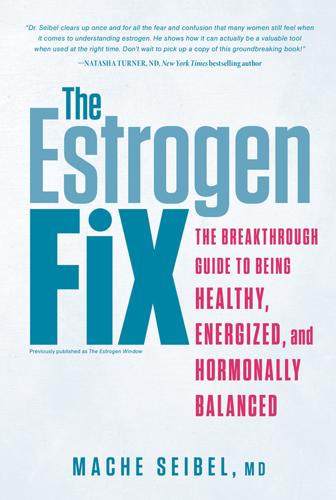
The Estrogen Fix: The Breakthrough Guide to Being Healthy, Energized, and Hormonally Balanced
by
Mache Seibel
Published 18 Sep 2017
When I talk about the importance of diet and nutrition in this book, I encourage you to begin thinking about how your diet affects your gut microbiome. I believe one reason women who eat a healthy diet are better able to lose weight is because their food choices create a healthier gut microbiome. As we learn more about the association between a healthy diet and the human microbiome, we will have a better scientific understanding of how your gut microbiome affects estrogen metabolism. We already know that the gut microbiomes of men and women differ, and the most likely reason for that is estrogen44 and possibly testosterone. When a male’s gut microbiome is put under the microscope after castration, it is notably similar to the gut microbiome of a female.
…
When a male’s gut microbiome is put under the microscope after castration, it is notably similar to the gut microbiome of a female. Also, in a study45 60 healthy postmenopausal women aged 55 to 69 who had not recently used either antibiotics or estrogen had their gut microbiomes tested. The ones with the most diverse gut microbiomes were able to metabolize and excrete more estrogen in their urine than those women with less diverse gut microbiomes. The researchers believe this will put those women at less risk of breast cancer. Estrogen, particularly oral estrogen, is processed in the liver, and some of it enters the gut. There estrogen interacts with each woman’s gut microbiome, and some of these bacteria are able to metabolize estrogen.
…
When we combine the information from these studies with the fact that without estrogen women tend to have greater muscle loss, larger amounts of fat, thinner bones, and weight gain with aging, it’s clear that unless women eat healthfully, exercise, and possibly use estrogen, the end result is overweight women with sarcopenic obesity. You cannot sit this one out. The Estrogen Fix and Your Gut The human microbiome has been receiving a great deal of media attention lately. The microbiome refers to the 3 pounds of bacteria that live in your intestinal tract. They are responsible for everything from digesting food to manufacturing vitamins to brain function, and perhaps even playing a role in obesity, cancer, and other diseases.43 These 100 trillion good bacteria in our inner ecosystem contain two million unique bacterial genes compared to the mere 23,000 genes in all the cells of our bodies.
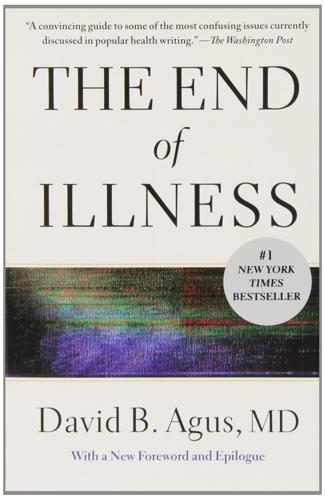
The End of Illness
by
David B. Agus
Published 15 Oct 2012
In the future, perhaps I’ll know more about my unique enterotype to keep my digestive system running as smoothly as possible. Within the next ten years researchers will uncover mysteries of the microbiome and begin to find ways in which we can manipulate it to support health. The microbiome—not levels of vitamin D, for example—may explain why people who live at higher latitudes have a higher risk of developing cancer. People who live at different latitudes have different types of bacteria growing within them. I could easily envision that if you have a high risk for breast cancer based on your personal genome, doctors may adjust your microbiome in such a way as to mitigate some of the risk. Thus the combination of technologies will win here.
…
Until babies can eat solid foods, they get plenty of what they need from breast milk, formula, and, yes, even mushy baby foods probably created in a pulverizer. Mining and Minding the Microbiome Before we move on, I need to mention one more fact for your consideration. We are all different in how we metabolize our food, absorb its nutrients, and need or use the nutrients. This area of nutrition has to be personalized and will be in the future when new technologies become available that will allow each of us to tune in to our personal nutritional needs. Certainly genetics will play a role here, too, but the larger role will be played by the microbiome—the bacteria that fill your intestinal tract and that participate in your digestion, metabolism, and overall health.
…
In one of the more provocative studies to emerge, published in April 2011 in the journal Nature, a team of researchers led by Peer Bork of the European Molecular Biology Laboratory in Heidelberg, Germany, reported on three distinguishable “types” of people based on their microbiome. Each of the three types is composed of a different balance of species. People with type 1, for example, have high levels of bacteria called Bacteroides. In type 2, on the other hand, Bacteroides is relatively rare, while the genus Prevotella is unusually common. Part of Bork’s discovery of these types of people came out of finding no link between what they call enterotypes, which are the different balances of species in a microbiome, and the ethnic background of the European, American, and Japanese subjects they studied.
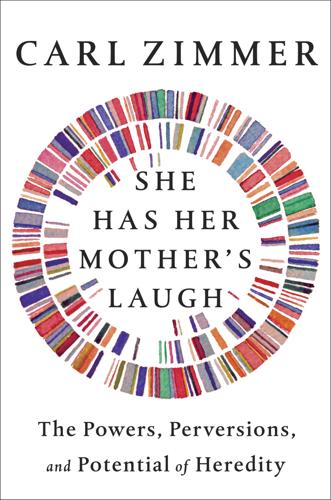
She Has Her Mother's Laugh
by
Carl Zimmer
Published 29 May 2018
Other microbes carry out tasks that are harder to see but no less important. They synthesize vitamins, they nurture a well-tempered immune system, they form a living barrier against dangerous pathogens. The microbiome, as this collective is known, blurs any simple notion of what it means to be an individual organism. If we turned into true individuals, sterilized of our microbiome, we’d become sick and might well die. In each species, every new generation acquires a microbiome. In some regards, this cycle of renewal looks a lot like heredity. A new animal does not acquire its own genes out of the blue, synthesized from scratch. Its genes have been duplicated over and over again inside the cells of its ancestors, taking an extraordinary journey to get to each new animal.
…
Although microbiologists have been naming species of bacteria for well over a century, they’ve described only a tiny fraction of the Earth’s single-celled diversity. Marimonas was named for a deep-sea microbe, but the lineage likely includes many other species adapted to other environments, including human skin. Within the howling complexity of the human microbiome, however, you can still hear heredity’s signal. It begins when a mother seeds her children’s microbiome. When this seeding starts is still not clear. Although researchers have long held that embryos start off sterile, in a bacteria-free amniotic sac, a few studies have hinted that at least some maternal bacteria may slip into the fetal sanctuary.
…
Yet even the bacteria that move freely from stranger to stranger also become intertwined with our own heredity. To see this intertwining, you first have to think about our microbiomes as a heritable trait, just like our height, intelligence, and risk of getting a heart attack. And you have to study it as such. Julia Goodrich, a microbiologist at Cornell University, and her colleagues did just this, investigating the microbiomes of twins to see how their genetic similarities influenced the species they carried. The scientists collected stool samples from 1,126 pairs of twins and cataloged the microbial inhabitants.
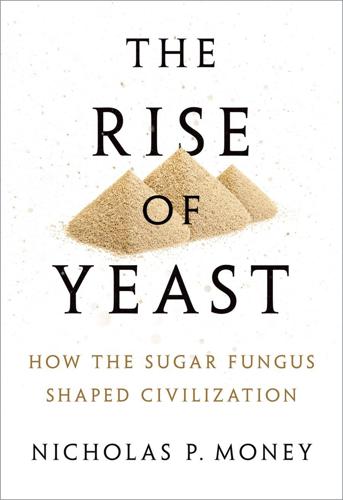
The Rise of Yeast: How the Sugar Fungus Shaped Civilisation
by
Nicholas P. Money
Published 22 Feb 2018
The explanation may be that other yeast species turn glucose into ethanol. Uncertainty reigns because the gut microbiome, particularly the fungal part of it, remains an uncharted wilderness for scientists. Irrespective of the source of these traces of ethanol, the phenomenon of onboard fermentation raises some tantalizing possibilities about constitutive alcohol exposure in children and our varying appetites for cocktails in later life. Alcohol tolerance in adulthood may also have something to do with variations in the microbial inhabitants of the gut, and daily pulses of alcohol from the microbiome could affect our level of alertness and even make us a little happier.
…
The activities of many of these species are unclear, and the only reason we know about them at all is that their genes show up on cotton swabs and in fecal samples. The gut yeasts probably work alongside the more numerous bacteria in the digestion of our food. Yeasts on our skin also interact with bacteria and are considered part of the healthy microbiome—the galaxy of microorganisms that we carry on and inside our bodies. Dandruff is related to the growth of a yeast called Malassezia globosa in skin flakes, and it is controlled by antifungal agents incorporated into medicated shampoos. Malassezia consumes fatty sebum secreted into hair follicles and competes for food with resident Demodex mites.
…
Roland Thaxter’s illustration of flasks, or thalli, of species of Laboulbeniales (ascomycete fungi) that grow on the exoskeleton of beetles and other insects. The largest thallus in this group is 0.8 millimeters long. 17 In t roduc t ion: y e ast y basics Candida albicans is a more important yeast from a clinical perspective. It is a natural component of the microbiome that becomes a problem when the healthy populations of microorganisms in the vagina are disrupted by antibiotic treatment. Candida can also be very dangerous when it invades the tissues of patients with damaged immune systems. Other yeasts can also cause these illnesses, called opportunistic infections, including black yeasts with heavily pigmented cell walls.

The Patient Will See You Now: The Future of Medicine Is in Your Hands
by
Eric Topol
Published 6 Jan 2015
There was a significant reduction in fatalities with antibiotics, but it is clear the number of deaths is still exceedingly high on treatment.40,41 But in another study of 317 twin pairs from Malawi, with only one of the twins suffering from acute malnutrition, the gut microbiome showed that the imbalance in bacterial populations could be restored with fortified peanut butter.37 That represents a significant change from the typical Malawian diet, which is very high in starch. When the less diverse gut microbiome from children with kwashiorkor was transplanted (via fecal samples) to mice, the animals reacquired their lost weight when fed enriched peanut butter. These two impressive studies demonstrated the interrelationship between diet, the microbiome, and the host for acute, severe malnutrition, along with critical salutary intervention with diet and antibiotics.
…
Being able to tap into the whole range of an individual’s RNA transcripts, proteins, and metabolites at any given moment creates quite an extraordinary opportunity to understand one’s instantaneous biology, in an unbiased fashion. The Microbiome It’s hard for most of us to accept that we are nine parts microbe and only one part human, at least as far as a count of our cells goes. The era of sequencing has been especially instructive about the trillions of microbes (bacteria, viruses, fungi) that live within or on us. The diversity of DNA in us from microbes far outstrips our own DNA, with one hundred trillion instead of thirty-seven trillion cells, over eight million genes instead of only approximately nineteen thousand, and more than ten thousand species instead of one.18 The microbiome represents the interface between the individual and her environment.
…
The diversity of DNA in us from microbes far outstrips our own DNA, with one hundred trillion instead of thirty-seven trillion cells, over eight million genes instead of only approximately nineteen thousand, and more than ten thousand species instead of one.18 The microbiome represents the interface between the individual and her environment. For example, one’s diet has a strong influence on one’s microbiome. And the medical importance of these microbes has escalated far beyond what most of us envisioned, with their influence in obesity, cancer, heart, allergic and autoimmune diseases, and many more conditions, in which the gut microbiome is particularly prominent. The Epigenome The side chains and packaging of our DNA, by methylation, histone modifications, and chromatin, represent yet another highly dynamic part of our genomic biology. For example, methylation of a base in the genome can shut down a gene.
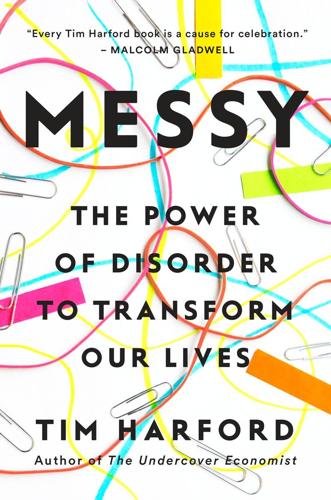
Messy: The Power of Disorder to Transform Our Lives
by
Tim Harford
Published 3 Oct 2016
But Professor Knight is now running a controlled study of much the same technique with babies born by cesarean section in Puerto Rico.9 Finally there is the simple fact that our microbiome is partially heritable, passed from mothers to daughters. It follows that if one generation thins out the messy diversity of their microbiome through antibiotics and antiseptics, the following generation will start from a less diverse foundation.10 It is worth acknowledging that these ideas have already become a fad—a great deal of nonsense is now being talked by quacks and purveyors of probiotic yogurt aiming to promote a “healthy microbiome.” There is no such thing, or rather there is a vast range of healthy microbiomes. People can have very different microbiota, yet still be perfectly healthy; the biological makeup of the same person can also change rapidly, day by day.
…
Alanna Collen, “‘Microbial Birthday Suit’ for C-Section Babies,” BBC Magazine, September 11, 2015, http://www.bbc.com/news/health-34064012. 10. Blaser, Missing Microbes. 11. Ed Yong, “There Is No ‘Healthy’ Microbiome,” The New York Times, November 1, 2014, http://www.nytimes.com/2014/11/02/opinion/sunday/there-is-no-healthy-microbiome.html, and Gabrielle Canon, “Sorry, Your Gut Bacteria Are Not the Answer to All Your Health Problems,” Mother Jones, October 27, 2014, http://www.motherjones.com/environment/2014/10/microbiome-health-gut-bacteria; Blaser, Missing Microbes, pp. 31–32. 12. Jane Jacobs, The Death and Life of Great American Cities (New York: Vintage, 1992), p. 50. 13.
…
Some, such as H. pylori, can be dangerous or beneficial depending on the situation.3 Martin Blaser has become one of the leading champions of the view that our bacterial guests are starting to become less diverse, and that this thinning of the microbiome is doing us harm. Researchers at the University of Toronto found that it was easier to stay slim in the 1980s: looking at data about diet and exercise for tens of thousands of people since the early 1970s, they found that people today seem to be heavier than their forebears, even when they ate the same and were equally as active. One of the favored explanations for this is that young people today have denuded gut bacteria; a separate large study of European microbial genes has shown that a less diverse microbiome is correlated with a tendency to be obese.
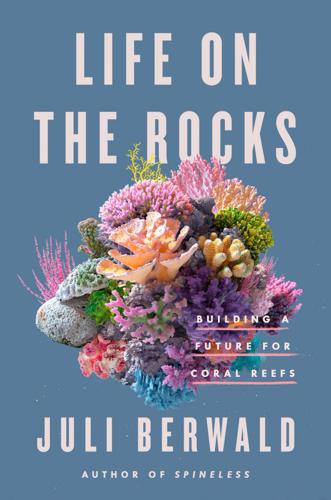
Life on the Rocks: Building a Future for Coral Reefs
by
Juli Berwald
Published 4 Apr 2022
Likewise, we humans harbor bacteria in our own guts that make vitamin B12. And just as gut microbiomes are unique to each of us, different coral species have unique microbiomes. Corals of the same species living thousands of miles apart were found to harbor similar bacteria communities that were unlike those found in other species nearby. And like us, microbiomes shift when corals are stressed. Populations of Vibrio bacteria (relatives of the bacterium that causes cholera in humans) increase when a coral bleaches but return to normal levels after a coral recovers. One species of coral shifted its microbiome when transplanted from clean water to more polluted surroundings.
…
GO TO NOTE REFERENCE IN TEXT unique microbiomes: Forest Rohwer et al., “Diversity and Distribution of Coral-Associated Bacteria,” Marine Ecology Progress Series 243 (2002): 10, https://www.int-res.com/articles/meps2002/243/m243p001.pdf. GO TO NOTE REFERENCE IN TEXT microbiomes shift: Maren Ziegler et al., “Coral Bacterial Community Structure Responds to Environmental Change in a Host-Specific Manner,” Nature Communications 10, no. 3092 (2019), https://www.nature.com/articles/s41467-019-10969-5. Christina Korownyk et al., “Population Level Evidence for Seasonality of the Human Microbiome,” Chronobiology International 35, no. 4 (January 17, 2018): 573–77, https://www.tandfonline.com/doi/abs/10.1080/07420528.2018.1424718.
…
Holstein, “A View to Kill,” BMC Biology 10, no. 18 (2012), http://www.biomedcentral.com/1741-7007/10/18. GO TO NOTE REFERENCE IN TEXT barrier of mucus: David G. Bourne et al., “Insights into the Coral Microbiome: Underpinning the Health and Resilience of Reef Ecosystems,” Annual Review of Microbiology 70 (2016): 317–40, https://geodynamicsprogram.whoi.edu/wp-content/uploads/sites/14/2018/10/Coral_Microbiome_268944.pdf. Valentine Neunier et al., “Bleaching Forces Coral’s Heterotrophy on Diazotrophs and Synechococcus,” The ISME Journal: Multidisciplinary Journal of Microbial Ecology 13 (2019): 2882–86, https://www.nature.com/articles/s41396-019-0456-2.
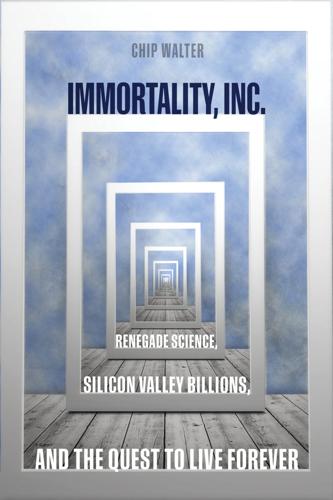
Immortality, Inc.
by
Chip Walter
Published 7 Jan 2020
In addition to the genome, the service gathers two other “omes” as well: the metabolome and microbiome. Sampling the metabolome allows scientists to analyze the trillions upon trillions of small molecules roaming within and among the cells of the body that drive millions of yet unknown pathways within. One of the joys of sequencing the microbiome is that it requires a stool sample to get a look at what is going on in your gut. If science still remains in the dark about the genome, the metabolome and microbiome are even more confounding, like strange hieroglyphs from an ancient culture: undeniably real, but mystifying beyond any sensible ciphering.
…
The metabolome takes science into the wild world of proteins and the marvelous ways they fold, pucker, and build out the hardware that drives every one of the 100 trillion cells within your body. The microbiome is an altogether different system that includes the ranks of invisible symbiotic organisms, mostly bacteria, that live within each member of the human race—usually in the stomach and intestines, but in several other sectors too, including the skin, hair, and eyes. Amazingly, the microbiome consists of 10 times the genetic information the human genome itself does, and is as much a part of what keeps us alive as our own DNA. It affects diet, health, disease—even emotion.
…
The Face Project was only one of many undertakings that Venter had simmering throughout the corridors at HLI. Also included were a series of research collaborations with Genentech, the J. Craig Venter Institute (JCVI), and King’s College London. The King’s College connection allowed HLI to get its hands on the genomes and microbiomes of 2,000 twins. Deals were made with cancer institutes and insurance companies from the United Kingdom to South Africa. Within two years, the company had grown to 200 employees in San Diego and Silicon Valley. Venter hired an assortment of top-rung executives, including Brad Perkins, former chief strategy and innovations officer at the Centers for Disease Control and Prevention as chief medical officer; Bill Biggs to handle genomic sequencing; and, eventually, Ken Bloom as president.

Rebel Ideas: The Power of Diverse Thinking
by
Matthew Syed
Published 9 Sep 2019
Eric Topol, a professor of molecular medicine and one of the most respected medics in the world, was so intrigued by Segal’s research that he volunteered to take a full test, tracking every meal and intake of liquid to determine blood-glucose response, as well as having his gut microbiome tested. Within weeks, he learned more about his own unique responses to food than would have been possible from trialling any number of standardised diets. He not only discovered that he has an unusual microbiome, but that he experienced severe blood glucose spikes for food he had been eating for years. ‘My gut microbiome was densely populated by one particular bugger – Bacteroides stercoris, accounting for 27 per cent of my co-inhabitants (compared with its average of less than 2 per cent in the general population),’ Topol wrote in the New York Times.
…
These dimensions include such intuitive things as age, genetics, lifestyle and more. Perhaps the most fascinating dimension is the microbiome, the bacteria we all host in our gastrointestinal systems. There are around forty trillion cells and up to a thousand different microbial species in our bodies. This ‘universe’ has about two hundred times more genes than the host human, and exerts a major influence on how we digest food and extract nutrients, as well as on the immune system. And these microbiomes vary from person to person. When you look at diet from this perspective, with different factors translating into different enzymes, genes, bacterial genes, and perhaps dozens of other unique factors, it seems almost absurd to suppose that any diet could be sensible for all, or even most, people.
…
The process is simple. You provide a stool sample and the results of a blood test. This enables the DayTwo lab to test your microbiome and to assess your blood sugar levels. This is then fed into the algorithm, allowing researchers to provide personalised food recommendations along with a searchable database of glucose predictions for 100,000 meals and drinks. This isn’t as systematic as the experiment conducted in 2015, which measured blood sugar responses to every meal in addition to information on microbiome, but it nevertheless signals a direction of travel. Diet, like other branches of human science, is moving away from standardisation and towards personalisation.
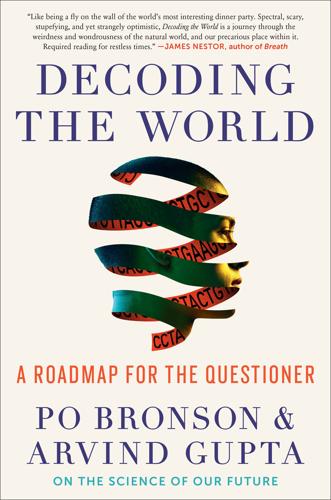
Decoding the World: A Roadmap for the Questioner
by
Po Bronson
Published 14 Jul 2020
For about a decade, we’ve been hearing that the microbiome is important. That’s like saying lungs are important. Our microbiome weighs more than three pounds, and it’s the invisible vital organ. Almost every biological pathway relies on a chain reaction of conversions that begins with metabolites produced by the microbiome. The microbiome is our natural drug factory. To fight inflammation, we need the histamines it makes. To regulate gene expression, we need its short-chain fatty acids. To make energy, we need its chylomicrons. To regulate blood pressure, we need its tyramine. To fight DNA damage, we need the microbiome to make alpha-tocopherol.
…
Except there’s no form for your microbiome to fill out, to report what drugs it’s been filling our bodies with. (Though with multiomics we’re getting there—see point 3 earlier in this chapter.) We understand the microbiome about as well as we understand the weather. We understand a lot of the pieces, but we can’t prevent hurricanes or heat waves. The microbiome’s 100 trillion cells have a lot of tricks. They mutate a lot. They rely on each other. They can also swap DNA. So we have to be very careful about false confidence in thinking we can just mess with it. However, what we have learned in research is now just starting to inform what goes on at your local hospital.
…
To fight DNA damage, we need the microbiome to make alpha-tocopherol. We rely on the microbiome more than we rely on Amazon or our iPhones. To lose weight, we need its deoxycholate. To prevent atherosclerosis, we need it to produce zonulin. To protect our brains, it cranks out glucagon peptide 2. I could go on and on. Not only does the microbiome crank out drugs on a daily basis, it explains why a lot of the drugs given to us by physicians work on some people but not others. You know how, when you visit the doctor, you have to fill out those forms asking what other medicines you’re taking? That’s because drugs interact with each other. Except there’s no form for your microbiome to fill out, to report what drugs it’s been filling our bodies with.
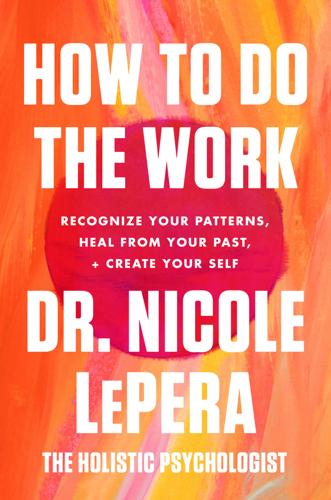
How to Do the Work: Recognize Your Patterns, Heal From Your Past, and Create Your Self
by
Nicole Lepera
Published 9 Mar 2021
Our body’s dysregulation is likely mirrored in the gut, where an imbalanced microbiome also hinders the extraction of nutrients from our food. Over time, our bodies become chronically deprived of the nutrients they need and no matter how “healthy” or plentiful our diet is, we can often end up undernourished and hungry. If our diet isn’t so healthy, things get worse. Our intestinal lining becomes inflamed when we consume foods that cause damage to that lining, including sugar, processed carbohydrates, and inflammatory fats (such as trans fats and many vegetable oils). These foods provide sustenance for the less desirable occupants of your gut microbiome (some microbes are good for you, while others can make you sick).
…
M., & Alviña, K. (2019). The role of inflammation and the gut microbiome in depression and anxiety. Journal of Neuroscience Research, 97(10), 1223–1241. 49.Caspani, G., Kennedy, S. H., Foster, J. A., & Swann, J. R. (2019). Gut microbial metabolites in depression: Understanding the biochemical mechanisms. Microbial Cell, 6(10), 454–481. 50.Zheng, P., Zeng, B., Liu, M., Chen, J., Pan, J., Han, Y., Liu, Y., Cheng, K., Zhou, C., Wang, H., Zhou, X., Gui, S., Perry, S. W., Wong, M.-L., Lincinio, J., Wei, H., & Xie, P. (2019). The gut microbiome from patients with schizophrenia modulates the glutamate-glutamine-GABA cycle and schizophrenia-relevant behaviors in mice.
…
Stress affects every system of the body, including the gut—it’s no coincidence that gastrointestinal (GI) problems are one of the issues most commonly cited by people dealing with anxiety. When we’re stressed or frightened or anxious, our body has trouble digesting food and can either hold on to it for too long—resulting in constipation—or release it too quickly—resulting in irritable bowel syndrome (IBS) or diarrhea. Stress affects our food choices and the makeup of the microbiome in our gut, which is constantly communicating with our brain (something we will discuss in detail in chapter 5). In these cases, your body is denied essential nutrients—either because it isn’t breaking down the food you eat fast enough or it’s discharging it before it begins to process it. Without a well-functioning digestive system, we become sicker in all areas of our body.
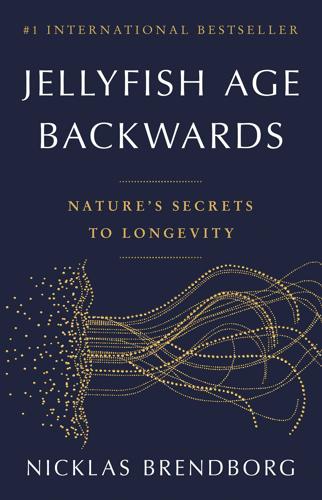
Jellyfish Age Backwards: Nature's Secrets to Longevity
by
Nicklas Brendborg
Published 17 Jan 2023
Killifish are among the world’s shortest-lived vertebrates (animals with a backbone) and they only live a few weeks. This makes them well-suited for studies on ageing because researchers get their results quickly. Like all other animals, the tiny killifish have microbiomes in their guts, whether they’d like to or not. Actually, many of the bacterial species in the guts of killifish are the same ones living in you and me, making killifish a good model organism for studying gut microbiomes, too. Thus, we arrive at the intersection of gut microbes and ageing. You see, the ecosystem of the gut changes over time in killifish. As the fish age, they lose diversity in the number of species in the gut, so that a few types of bacteria become dominant while suppressing others.
…
Hormones Reduction in the production of many hormones: women produce less oestrogen and progesterone and enter menopause, men produce less testosterone. Inner organs Lungs: less elasticity; diminished air intake. Liver: declining ability to neutralise harmful substances like alcohol. Intestine: harmful changes in the composition of the microbiome; less integrity. Bladder: less elasticity, leading to more frequent urination. As you might suspect from this table, the general rule is that any bodily function gets worse with age. Each form of decline doesn’t happen to everyone at the same time or at the same rate. A few people never get grey hair, for instance.
…
It simply turns out that the relationship between us and microbes is a lot more complicated than we once thought. Back in the day, we used to think humans were mostly sterile. But in recent decades, technological advancement has revealed that’s anything but true. We’re actually teeming with trillions of non-human organisms – what is called the ‘microbiome’. In fact, there are more cells of foreign origin in your body than there are your own. These organisms (counting bacteria, viruses, fungi and others) live on your skin, in your mouth, in your intestinal system and everywhere in between. You can imagine the situation as something similar to a tree in the rainforest.
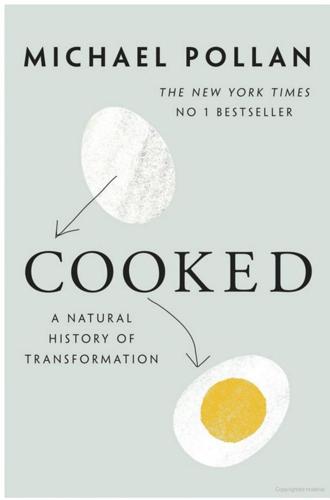
Cooked: A Natural History of Transformation
by
Michael Pollan
Published 22 Apr 2013
A landmark article seeking to apply the lens of ecology to the microbial communities inhabiting the human body. Song, Yeong-Ok. “The Functional Properties of Kimchi for the Health Benefits.” Food Industry and Nutrition 9, 3 (2004): 27–28. Turnbaugh, P.J., et al. “An Obesity-Associated Gut Microbiome with Increased Capacity for Energy Harvest.” Nature 444 (2006): 1027–31. ———, et al. “The Human Microbiome Project.” Nature 449 (2007): 804–10. ———, et al. “A Core Gut Microbiome in Obese and Lean Twins.” Nature 457 (2009): 480–84. Walter, Jens. “Ecological Role of Lactobacilli in the Gastrointestinal Tract: Implications for Fundamental and Biomedical Research.” Applied and Environmental Microbiology (August 2008): 4985–96.
…
* Margulis theorized that both photosynthesis and cellular metabolism in animals began when bacteria took up residence in the evolutionary ancestors of plant and animal cells, contributing their metabolic expertise; eventually these invaders became the chloroplasts in plant cells and the mitochondria in the cells of animals. * Turnbaugh, Peter J., et al., “An Obesity-Associated Gut Microbiome with Increased Capacity for Energy Harvest,” Nature 444 (2006): 1027–31; Turnbaugh, P. J., et al., “A Core Gut Microbiome in Obese and Lean Twins,” Nature 457 (2009): 480–84; Turnbaugh, Peter J., et al., “The Human Microbiome Project,” Nature 449 (2007): 804–10. † This particular probiotic is found in some kinds of yogurt. (Bravo, J. A., et al., “Ingestion of Lactobacillus Strain Regulates Emotional Behavior and Central GABA Receptor Expression in a Mouse via the Vagus Nerve,” Proceedings of the National Academy of Sciences 108 No. 38 [2011]: 16050–55)
…
“DNA Fingerprinting of Lactic Acid Bacteria in Sauerkraut Fermentations.” Applied and Environmental Microbiology 73, 23 (2007): 7697–702. Yoon, Sook-ja. Good Morning, Kimchi!: Forty Different Kinds of Traditional and Fusion Kimchi Recipes. Elizabeth, NJ: Hollym, 2005. On the Human Microbiome Start with the National Institutes of Health’s Web site for the human microbiome project: http://www.hmpdacc.org/. It has links to many academic articles on the subject. The articles below I found particularly helpful: Ainsworth, Claire. “I Am Legion: Myriad Microbes Living in Your Gut Make You Who You Are.” New Scientist, May 14, 2011.
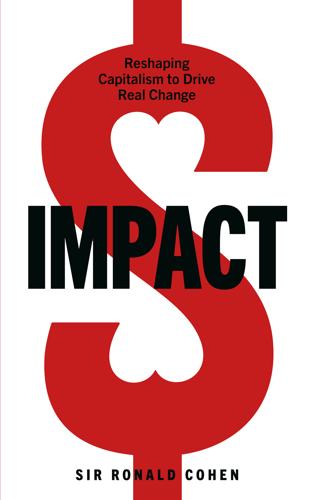
Impact: Reshaping Capitalism to Drive Real Change
by
Ronald Cohen
Published 1 Jul 2020
The company’s founders were inspired by research on the human gut microbiome. The communities of microbes inside us are said to ward off harm and contribute to our health,44 and Geoffrey von Maltzahn applied this thinking to agriculture. After earning a PhD in biomedical engineering from MIT, he co-founded Indigo in 2016 when he was in his mid-thirties. As he said, ‘The microbiome might be both more powerful and a more natural means of influencing the traits and the properties of agricultural crops.’45 In other words, thriving microbiomes may safeguard crops from disease, drought and pests better than our current practices.
…
Indigo reported increased crop yields of between 6 and 14 per cent from their cotton, soybeans, corn, rice and wheat seeds.46 By 2019, Indigo had raised $650 million via half a dozen funding rounds and was valued at $3 billion.47 In addition to enormous investment into the science behind the human microbiome, the company has been able to take advantage of several converging technological advances, including improvements in DNA sequencing technology, computational tools and connectivity.48 As von Maltzahn said, ‘Anybody with a cell phone and a pair of scissors can give us a plant sample, and we’ll know the GPS location, the time of day, the weather history of that site, infer the stress profile that it was under, infer its fitness from a photograph and then be able to figure out the plant species and sequence the microbiome at an ever-increasingly diminished cost.’49 Not all impact ventures use technology in this way.
…
list=fintech/#64ca4ec84c4d 34 https://www.forbes.com/sites/forbestreptalks/2016/08/29/how-tala-mobile-is-using-phone-data-to-revolutionize-microfinance/#1f8f38f82a9f 35 https://www.fastcompany.com/40528750/these-entrepreneurs-are-taking-back-your-credit-score-from-the-big-credit-bureaus and https://www.forbes.com/sites/forbestreptalks/2016/08/29/how-tala-mobile-is-using-phone-data-to-revolutionize-microfinance/#1f8f38f82a9f 36 https://static1.squarespace.com/static/57687604579fb3ab71469c8f/t/5bdc851b21c67c47f9f9a802/1541178690584/Tala+Impact+Report+-+11.18.pdf 37 https://www.forbes.com/sites/forbestreptalks/2016/08/29/how-tala-mobile-is-using-phone-data-to-revolutionize-micro finance/#1f8f38f82a9f 38 https://www.devex.com/news/a-look-at-digital-credit-in-kenya-and-why-access-alone-is-not-enough-93748 39 https://static1.squarespace.com/static/57687604579fb3ab71469c8f/t/5bdc851b21c67c47f9f9a802/1541178690584/Tala+Impact+Report+-+11.18.pdf 40 https://tala-mobile.squarespace.com/series-c-release 41 https://www.reuters.com/article/us-paypal-tala/paypal-backs-emerging-markets-lender-tala-idUSKCN1MW1MT 42 https://medium.com/tala/with-65m-tala-goes-global-q-a-with-shivani-siroya-founder-ceo-and-female-founders-fund-5c4d0699f350 43 https://academic.oup.com/bioscience/article/67/4/386/3016049 44 https://www.theguardian.com/news/2018/mar/26/the-human-microbiome-why-our-microbes-could-be-key-to-our-health 45 https://www.youtube.com/watch?v=f_P1uoV8R6Q 46 https://www.indigoag.com/product-performance-data 47 https://agfundernews.com/breaking-indigo-raises-250m-series-e-adding-grain-marketplace-to-farm-services-platform.html 48 https://www.youtube.com/watch?

The Cancer Chronicles: Unlocking Medicine's Deepest Mystery
by
George Johnson
Published 26 Aug 2013
[http://www.ncbi.nlm.nih.gov/pubmed/19641587] 44. the genes residing in the microbes: Steven R. Gill et al., “Metagenomic Analysis of the Human Distal Gut Microbiome,” Science 312, no. 5778 (June 2, 2006): 1355–59. [http://www.sciencemag.org/content/312/5778/1355.short] 45. a Human Microbiome Project: Peter J. Turnbaugh et al., “The Human Microbiome Project,” Nature 449, no. 7164 (October 18, 2007): 804–10. [http://www.nature.com/nature/journal/v449/n7164/abs/nature06244.html] 46. “ ’omics”: Joshua Lederberg christened the microbiome, and in a short essay, “Ome Sweet ’Omics,” he commented on the naming phenomenon: The Scientist 15, no. 7 (April 2, 2001): 8.
…
Although we think of the bacteria as passengers, they outnumber our own cells by about ten to one. Even more impressive, the total number of microbial genes each of us harbors—the microbiome—outnumbers our human genes by 100 to 1. There is even a Human Microbiome Project to sequence the genomes of these cellular free agents. Cancer is a disease of information, of mixed-up cellular signaling. Now there is another realm to explore. The genome, the epigenome, the microbiome—scientists also now speak of the proteome (the entire set of proteins that can be expressed in a cell) and the transcriptome (all of the RNA molecules of various sorts).
…
…A curious law of nature … Contemplating the odds CHAPTER 2 Nancy’s Story Food pyramidology … Pascal’s wager … Folates, antioxidants, and Finnish smokers … Fruits, vegetables, and giant steaks … Carcinogenic estrogen … The real risks of cigarettes … Emanations from the earth … Cancer clusters … A worrisome lump … Nancy’s cancer CHAPTER 3 The Consolations of Anthropology In the boneyards of Kenya … Face-to-face with Kanam man…Palaeo-Oncology…Hippocrates and the crabs … The wild beast of cancer … Metastasis in a Scythian king … Skeletons and mummies … Visions of an ancient paradise … Counting up the dead CHAPTER 4 Invasion of the Body Snatchers “Large and beautifully pellucid cells”…Morbid juices … Seeds and soil … The mysteries of metastasis … A horrifying precision … The ebb and flow of lymph … The surgeon’s diagnosis … Weeds from outer space CHAPTER 5 Information Sickness Man-made mutations … Funny-looking chromosomes…“A new kind of cell”…Matter that comes alive … The Radium Girls … Coal tar and tumors … Viral invaders … Oncogenes and tumor suppressors … Cellular suicide … Intimations of immortality … A conspiracy of cells CHAPTER 6 “How Heart Cells Embrace Their Fate” Embryos and tumors … Snail, slug, and twist … Sonic hedgehog … the Pokémon gene … Cyclopean sheep … Holoprosencephaly … 1 + 1 = 3 … Prayers of an agnostic … An endless day at the hospital CHAPTER 7 Where Cancer Really Comes From The surprising aftermath of Love Canal … What “environment” really means…“The Causes of Cancer”…An environmental turncoat … The carcinogens in coffee … Mitogenesis and mutagenesis … Making sense of the cancer statistics … A maverick presidential report CHAPTER 8 “Adriamycin and Posole for Christmas Eve” Cancer cells and magnets … The penicillin of cancer … A rare kind of malignancy … Disheartening statistics…“The Median Isn’t the Message”…Flying farolitos … A visit to MD Anderson … Rothko’s brooding chapel CHAPTER 9 Deeper into the Cancer Cell A physics of cancer … Epigenetic software … The stem cell conundrum … An enormous meeting in Orlando … Espresso and angiogenesis … The news from Oz.…Communing with the microbiome … Beyond the double helix … Dancing at the Cancer Ball CHAPTER 10 The Metabolic Mess Chimney sweeps and nuns … A “mysterious sympathy”…The case of the missing carcinogens … The rise and fall of vegetables … A mammoth investigation … The insulin-obesity connection…“Wounds that do not heal”…A hundred pounds of sugar … Skewing the energy equation CHAPTER 11 Gambling with Radiation Flunking the radon test … A ubiquitous carcinogen … Down in the uranium mines … Tourism at Chernobyl … Hiroshima and Nagasaki … Exhuming Curie’s grave … A pocketful of radium … Robot oncologists … Relay for Life CHAPTER 12 The Immortal Demon A flight to Boston … Stand Up to Cancer … A tale of two cousins … The return of the hedgehog … Where weird drug names come from … Waiting for super trastuzumab … Orphaned cancers … Biological game theory … Contagious cancer CHAPTER 13 Beware the Echthroi On Microwave Mountain … Cell phones and brain waves … Is cancer here “on purpose”?
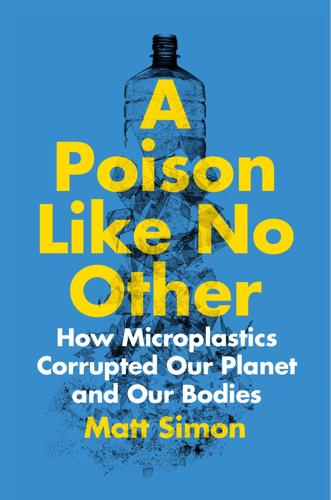
A Poison Like No Other: How Microplastics Corrupted Our Planet and Our Bodies
by
Matt Simon
Published 24 Jun 2022
Flushed to a wastewater treatment facility, the fiber is soaked in human waste, acquiring new microbes there.64 In a river, the plastisphere steeps in agricultural runoff rich in nutrients, which opportunistic microbes might thrive on.65 Finally in the open ocean, the particle encounters a still more alien saltwater microbiome—bacteria, viruses, animal larvae. Floating at the surface, it attracts sunlight-loving organisms,66 but then grows so heavy with life that it starts sinking.67 In the darkness, the microbes dependent on light will perish, happily replaced by others a v o ya g e o n t h e s y n t h e t i c s e a s in the new habitat.68 As currents carry it dozens and hundreds and thousands of miles, our fiber will sample innumerable unique oceanic microbiomes, its own microbiomes reshuffling all the while.69 It may even act as a shuttle to introduce microbes to new oceanic habitats.
…
And remember the extraordinarily high doses that infants get in their formula—a daily synthetic stew of millions of microplastics and trillions of nanoplastics that may be crossing the gastrointestinal barrier and moving through their developing bodies. Even if microplastics just stuck around the digestive system, they might mess with our microbiomes both by introducing foreign species and by acting as platforms on which bacteria grow. Experiments with a machine that simulates a full human digestive system show that PET particles—in realistic concentrations we’re actually eating—had an antibacterial effect, decreasing the number of viable bacteria and thus compromising the microbiome.106 These bacterial species not only promote healthy digestion but also help maintain the immune function of the intestines and reduce inflammation by producing anti-inflammatory molecules.
…
“It’s this three-dimensional structure that provides all kinds of different niches for primary producers, consumers, degraders, parasites, predators, grazers—you name it,” says Erik. Bacteria and viruses mingle with animals, like the larvae of barnacles. “Each of those 57 58 a poison like no other animals has its own microbiome of additional microbes that are brought to this. So it really becomes quite a complicated little community.”62 As these microplastics tumble around the sea, they fragment—some organisms will hold on, others won’t. Microbes may themselves break down the plastic: Linda and Erik have found spherical cells resting in pits on a microplastic’s surface, suggesting that whatever species this is, it could be digesting the polymer.
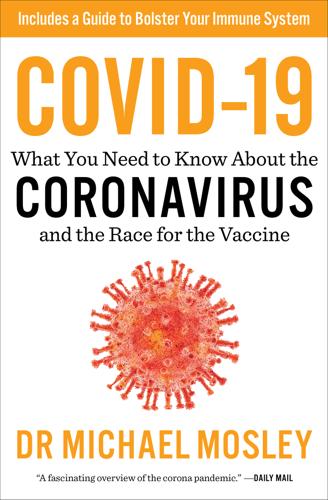
COVID-19: Everything You Need to Know About the Corona Virus and the Race for the Vaccine
by
Michael Mosley
Published 1 Jun 2020
It’s estimated that around 8 percent of the human genome is made up of viral DNA, which means that our cells are hard at work producing proteins for our viral “guests,” for purposes that, for now, we can only guess at. Are There “Good” Viruses? Just as we’ve discovered in recent years how important certain “good” bacteria in our guts (the gut microbiome) are for our mental and physical health, so we are discovering that some of the viruses we are infected with are essential for our very existence. There are vital parts of our immune system, for example, which we use to fight off viruses, that originally came from other viruses.20 How Often Does a Dangerous New Virus, Like Covid-19, Emerge and Cause a Pandemic?
…
Eat a more Mediterranean-style diet The traditional diet of Mediterranean countries, rich in olive oil, nuts, oily fish, and legumes, is regularly voted by health professionals as the healthiest diet on the planet. Changing the way you eat will not only reduce your risk of metabolic disease but should help support your immune system. 4. Boost your microbiome One of the reasons why the Mediterranean diet is so super healthy is because it boosts levels of the “good” microbes in your gut. This, in turn, has been shown to play an important role in the body’s immune response to infectious pathogens. 5. Improve your sleep We know that getting good quality sleep is essential for the production and release of key components of your immune system and there is strong evidence that getting a good night’s sleep is a great way to keep infections at bay.
…
The reason I am such a fan of the Mediterranean diet is because it tastes great, but also because there is so much solid scientific evidence that adopting this lifestyle will cut your risk of heart disease, cancer, type 2 diabetes, depression, and dementia. On top of that, thanks to recent studies, we know it can improve your sleep (see below) and improve the workings of your immune system, even if you are a bit older.31 One reason why this diet is so beneficial is because as well as nourishing us, it has a very positive effect on your gut microbiome—the trillions of microbes that live in your gut and that are so important for your physical and mental well-being. The Med diet is particularly effective at boosting levels of “good” bacteria in your gut, like bifidobacterium and lactobacillus. These turn the fiber and other nutrients in the Med diet into chemicals called short-chain fatty acids (SCFs), which reduce inflammation in the gut and throughout the body.

Infinity in the Palm of Your Hand: Fifty Wonders That Reveal an Extraordinary Universe
by
Marcus Chown
Published 22 Apr 2019
Being indiscriminate in their action, such drugs kill not only disease-causing bacteria but bacteria that you need as well. Bacteria are much smaller than the cells in your body, however. So, despite existing in comparable numbers to those cells, they account for only about 1.5 kilograms of the mass of a seventy-kilogram person. The US government set up a five-year study, the Human Microbiome Project (microbiome refers to the microorganisms in a particular environment), or HMP, designed to identify all the foreign microorganisms in the human body and figure out what they do—a gargantuan task.2 Its results were published in 2012 and revealed that there are more than 10,000 species of alien cells in your body—forty times the number of cell types that belong to you.
…
DNA, or deoxyribonucleic acid, is the giant biomolecule that stores, in encoded form, the structure of a cell’s proteins. 5. Living With the Alien 1. “Revised Estimates for the Number of Human and Bacteria Cells in the Body” by Ron Sender, Shai Fuchs, and Ron Milo (PLOS Biology, 19 August 2016: https://doi.org/10.1371/journal.pbio.1002533). 2. NIH Human Microbiome Project (https://hmpdacc.org). 3. “Gut Microbiome Alterations in Alzheimer’s Disease” by Nicholas Vogt et al. (Nature, 19 October 2017: https://www.nature.com/articles/s41598-017-13601-y). 6. The Dispensable Brain 1. “The juvenile sea squirt wanders through the sea searching for a suitable rock or hunk of coral to cling to and make its home for life.
…
However, in healthy people such bacteria are kept in check and cause no harm. It is only in sick people, whose immune systems are weakened, that MRSA bacteria are dangerous. Since hospitals contain sick people, it is obvious why MRSA can be a problem there. There is mounting evidence that an imbalance of the human microbiome may be a factor in causing a wide range of diseases. These include inflammatory bowel conditions such as Crohn’s disease and ulcerative colitis. There is even a suggestion that such imbalances may play a role in diseases such as Alzheimer’s.3 Nobody is born with a full complement of foreign microorganisms.
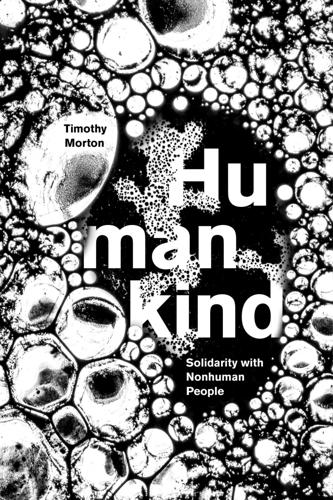
Humankind: Solidarity With Non-Human People
by
Timothy Morton
Published 14 Oct 2017
In symbiosis, it’s unclear which is the top symbiont, and the relationship between the beings is jagged, incomplete. Am I simply a vehicle for the numerous bacteria that inhabit my microbiome? Or are they hosting me? Who is the host and who is the parasite? The term “host” stems from the Latin hostis, a word that can mean both “friend” and “enemy.”1 Fully one-third of human milk, for instance, is not digestible by the baby; instead it feeds bacteria that coat the intestines with immunity-bestowing film.2 When a child is born vaginally, it gains all kinds of immunities from bacteria in the mother’s microbiome. In the human genome there is a symbiont retrovirus called ERV-3 that codes for immunosuppressive properties of the placental barrier.
…
, Marx’s upside-down Hegelianism contains a glitch that is both logically strange (there’s an obvious infinite regress) and politically oppressive. Can we debug the Decider model—can we de-anthropocentrize it? “Species” means an entity that is real but not constantly present beneath appearances, not constantly the same. “Human” means me plus my nonhuman prostheses and symbionts, such as my bacterial microbiome and my technological gadgets, an entity that cannot be determined in advance within a thin, rigid outline or rigidly demarcated from the symbiotic real. The human is what I call a “hyperobject”: a bundle of entities massively distributed in time and space that forms an entity in its own right, one that is impossible for humans to see or touch directly.46 Here’s Marx writing about his concept of species-being in the Economic and Philosophical Manuscripts: Species-life, both for man and for animals, consists physically in the fact that man, like animals, lives from inorganic nature; and because man is more universal than animals, so too is the area of inorganic nature from which he lives more universal.
…
Humankind is ontologically smaller than the humans who make it up! There is so much more that humans do other than be parts of humankind. Humans modify their bodies to change their gender and add electronic and decorative prostheses. Humans form relationships with nonhumans. Humans contain nonhumans such as the bacterial microbiome in such a way that if the nonhumans left, the humans would die. This means that the correct left concept of the human is of a partial object in a set of partial objects, such that it comprises an implosive whole that is less than the sum of its parts. This partiality extends in every dimension, including time.
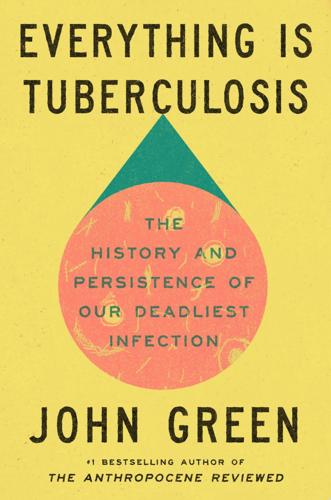
Everything Is Tuberculosis: The History and Persistence of Our Deadliest Infection
by
John Green
Published 18 Mar 2025
And to one degree or another, these microorganisms can also control the body—shaping the body’s contours by making it gain or lose weight, sickening the body, killing the body. There’s even emerging evidence that one’s microbiome may have a relationship with thought itself through the gut-brain information axis, meaning that at least some of my thoughts may belong not to me, but to the microorganisms in my digestive tract. Research indicates that certain gut microbiomes are associated with major depression and anxiety disorders; in fact, it’s possible that my particular microbiome is at least partly responsible for my OCD, meaning that the microbes are the reason I’m so deeply afraid of microbes.[*] I imagine that had I lived in 1800, I would’ve still suffered from OCD, but I couldn’t have feared microbial infections, because they were unknown to us.
…
Conan Doyle went home to England and within a decade published his first Sherlock Holmes story, all about a detective who uses reasoning and evidence to reach rigorous conclusions about causes of death, meaning that Holmes’s work was not so distant from that of his author. Skip Notes * Certain microbiomes are also correlated with the human body craving particular foods—meaning that when you’re hungry for carbs or protein or whatever, it may in fact be your bacteria that are hungry for that food. Chapter 11 Trepidation and Hope It was soon understood that tuberculosis spread mostly through the air and via infectious coughs and spit, but one could also catch it from milk contaminated with bovine tuberculosis, or in other ways.
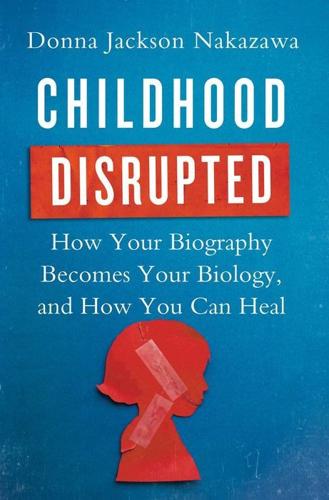
Childhood Disrupted: How Your Biography Becomes Your Biology, and How You Can Heal
by
Donna Jackson Nakazawa
Published 6 Jul 2015
Over the course of many sessions, the pain of the past has begun to lessen. Mary feels a sense of “letting go.” 11. Managing the Mind Through the Gut Cell for cell, we’re largely made up of bacteria. In fact, single-celled organisms, mostly bacteria, outnumber our own cells ten to one. Many of these live in our gut. This gut “microbiome” determines the state of our digestive health, and influences the state of our brain. When you are under stress, the bacterial communities in your intestine become less diverse, allowing greater numbers of harmful bacteria to take over. Disorders of the gut such as irritable bowel and inflammatory bowel diseases are exacerbated by stress.
…
Mice given probiotics had lower levels of stress-induced hormones, less anxiety, and less depression-related behavior. And guess how the messages between the bacteria exposed to the gut and the brain were transmitted? Via the vagus nerve—which is a primary mediator of the inflammatory stress response. That’s why scientists have begun to refer to our gut as “the second brain.” The gut microbiome heavily influences neural development, brain chemistry, emotional behavior, pain perception, learning, and memory. Some organisms in the gut might prove useful in treatments of stress-related disorders such as anxiety and depression. According to gastroenterologist Emeran Mayer, MD, PhD, director of the Center for Neurobiology of Stress at the University of California, Los Angeles, given the gut’s multifaceted ability to communicate with the brain, “it’s almost unthinkable that the gut is not playing a critical role in mind states.”
…
Improving our diet and reducing our intake of processed foods and sugar, and adding in greens, fruits, and fermented foods rich in probiotics can play a critical role in healing the gut. This, in turn, can help patients who’ve suffered from early trauma to heal both body and brain. Because microorganisms in our gut control our brain, we need to do whatever we can to make our microbiome healthy, and give the pathways in our brain all the serotonin and nutrients they need to send the correct messages along our brain’s synapses. Why would you eat in a way that makes stress receptors more reactive when you are busy doing everything else you can to heal? A number of the individuals we’ve followed in these pages have used nutrition to promote healing.
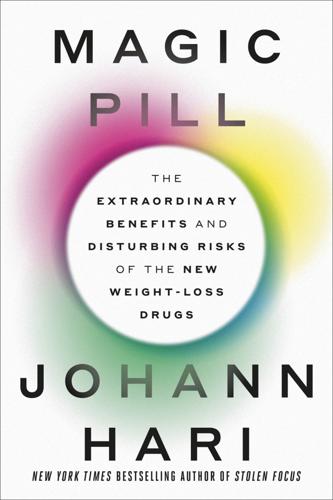
Magic Pill: The Extraordinary Benefits and Disturbing Risks of the New Weight-Loss Drugs
by
Johann Hari
Published 7 May 2024
Tim has been at the forefront of studying this, and he explained that at the bottom of your intestines there is a part of your body that is just as important as your brain. It is your gut microbiome. This “is where most of your gut microbes live. They’re sitting there, in the dark, in your colon, and there are hundreds of trillions of them.” They break down the food you eat, and release into your body all sorts of chemicals that are essential for you to live and function fully. They are “absolutely crucial for your immune system, for fighting aging, for your metabolism, for your energy control, and digesting food and getting the right things from it. You can’t live without your microbiome. The healthier it is, the healthier you are.” Its health, crucially, comes from its diversity—the broader the range of healthy bugs living in your gut, the better it works.
…
The healthier it is, the healthier you are.” Its health, crucially, comes from its diversity—the broader the range of healthy bugs living in your gut, the better it works. But something very strange has happened to our guts. We now have vastly less diverse gut microbiomes than our ancestors. In fact, the average person has “lost about 40 percent” of the diverse life in our microbiomes, Tim said. Why would this be? To fully operate, your gut needs to be fed with a big, diverse array of types of food—ideally, roughly thirty different types of plant a week. But processed and junk food is made out of a few very limited building blocks: “Eighty percent of processed food is made up of just four ingredients—corn, wheat, soy and meat,” he explains.
…
GO TO NOTE REFERENCE IN TEXT But as Tim watched his glucose levels, he was startled: Tim Spector, Spoon Fed: Why Almost Everything We’ve Been Told About Food Is Wrong (Vintage, 2022), p. 67. GO TO NOTE REFERENCE IN TEXT In 2022, a team of Israeli scientists split 120 people: J. Suez et al., “Personalized microbiome-driven effects of non-nutritive sweeteners on human glucose tolerance,” Cell (2022), 185, 18, pp. 3,307–28.e19, https://pubmed.ncbi.nlm.nih.gov/35987213/. GO TO NOTE REFERENCE IN TEXT presence of artificial sweeteners in our diets might be one of the big drivers of the obesity crisis: T.

Frostbite: How Refrigeration Changed Our Food, Our Planet, and Ourselves
by
Nicola Twilley
Published 24 Jun 2024
Reid et al., “A Role for ColV Plasmids in the Evolution of Pathogenic Escherichia coli ST58,” Nature Communications 13, no. 1 (2022); Madeline Drexler, Emerging Epidemics: The Menace of New Infections (Washington, DC: Joseph Henry Press, 2002); and CDC/National Center for Health Statistics. Finally, on the microbiome, I spoke to Justin Sonnenburg in March 2023 and consulted Hannah C. Wastyk et al., “Gut-Microbiota-Targeted Diets Modulate Human Immune Status,” Cell 184, no. 16 (August 5, 2021): 4137–153.e14; Aashish R. Jha et al., “Gut Microbiome Transition across a Lifestyle Gradient in Himalaya,” PLOS Biology 16, no. 11 (November 2018); and Erica D. Sonnenburg and Justin L. Sonnenburg, “The Ancestral and Industrialized Gut Microbiota and Implications for Human Health,” Nature Reviews Microbiology 17 (June 2019): 383–90.
…
Considered as a connected whole, the cold chain seemed to me as worthy of awe as the Pyramids of Giza—a continuous monument of engineered winter that has remade our entire relationship with food, for better and for worse. Industry insiders clearly had a grip on its geography and mechanics; a handful of historians had traced particular elements of its evolution; scattered scientists were engaged in analyzing its various effects on everything from the flavor of tomatoes to the contents of our gut microbiome; and, more recently, policymakers have begun to worry about its environmental impact. Yet, to my surprise, no one had tried to tie those threads together into a coherent narrative—a story that could help us understand the extraordinary scope and implications of the refrigeration revolution. As I pored over my copy of the International Association of Refrigerated Warehouses’ annual directory of member facilities, I couldn’t help but wonder: Where are the Shackleton and Scott of the artificial cryosphere?
…
As we’ve seen, it’s also possible that our predilection for ice-cold drinks has inadvertently led us to prefer sweeter food. More recently, researchers have begun to link these kinds of diseases to chronic inflammation. That, in turn, has been connected to the depleted state of the Western gut microbiome—which may be due, at least in part, to refrigeration. “This might be the microbial bargain that we’ve unknowingly struck,” said Stanford University’s Justin Sonnenburg, whose research has focused on unraveling how diet affects our intestinal bioflora. “We’ve focused on reducing acute pressures like diarrheal disease, while at the same time compromising this community of microbes that lives within us and that people haven’t been aware of until very recently.”

The Human Age: The World Shaped by Us
by
Diane Ackerman
Published 9 Sep 2014
In the hunt we’ve discovered that a true view of ourselves as a life form is more untidy than we thought, and unglimpsed by most of us, a cloud of entwined bugs and human cells in a semipermeable frame. Joshua Lederberg, the Nobel-laureate biologist who, in 2000, coined the term “microbiome,” defines it as “the menagerie of the body’s attendant microbes.” Amid the hoopla surrounding the Human Genome Project, he urged, “We must study the microbes that we carry within us and on our surfaces as part of a shared embodiment.” If the Human Genome Project was a landmark feat of discovery, the Human Microbiome Project is gene cartography’s finest hour. NIH director Francis Collins compares it to “fifteenth-century explorers describing the outline of a new continent,” a triumph that would “accelerate infectious disease research in a way previously impossible.”
…
NIH director Francis Collins compares it to “fifteenth-century explorers describing the outline of a new continent,” a triumph that would “accelerate infectious disease research in a way previously impossible.” For five years, a consortium of eighty universities and scientific labs sampled, analyzed, and audited over ten thousand species that share our human ecosystem, thus mapping our “microbiome,” the normal microbial makeup of healthy adults. And the quest continues. The researchers have found that each of us contains a hundred trillion microbial cells—ten times more than our human cells. When they peered deeper and compared the genes, they realized that we carry about three million genes from bacteria—360 times more than our own human code.
…
Researchers are thinking of cobbling them into infant formula to help ward off asthma, allergies, and such autoimmune triggermen as diabetes, eczema, and multiple sclerosis. Babies pick up other useful bacteria in Mom’s dirt-and-crumb-garlanded home and landscape. At least, they should. Doctors are embracing the idea of personalized medicine based on a patient’s uniquely acquired flora and fauna, as revealed in his or her genome, epigenome, and microbiome. No more antibiotics prescribed by the jeroboam on the off chance they might prove useful. Instead, try unleashing enough beneficial bacteria to crowd out the pathogen. No more protecting children from the hefty stash of derring-do white-knight bacteria they need but we’ve learned to regard as icky.

The Quantum Magician
by
Derek Künsken
Published 1 Oct 2018
“Correct a genetic flaw in a Puppet and create a false Numen. You have not come all this way without knowing that what you ask is impossible? The best that can be done with both is to make forgeries. The original designers created entirely novel sub-cellular organelles with unique molecular and genetic structures, as well as novel symbiotic microbiomes to alter biochemistry, immunity and neural responses. Even with authentic examples I cannot replicate either the Numen or the Puppets.” “I know,” Belisarius said. “This is an exercise in engineered mimicry. How close do you think your forgeries can get?” Del Casal’s eyes narrowed. He swirled his wine slowly, watching the wash cling to the inner surface of the glass.
…
Del Casal took one of the automata scuttling on Gates-15’s arm, regarded its sweat swabs, assay vents and thermal sensors, and set it back. “Gates-15 has all the chromosomal genes to experience the religious awe effect in the presence of a Numen,” Del Casal said. “From what I understand from him, his problem is in the microbiome around his synapses. In normal Puppets, an array of symbiotic bacteria located at the nerve endings modify the environment to strengthen and coordinate certain kinds of signal cascades. I do not know which bacteria are supposed to be there, and neither does Gates-15, so I have engineered tiny ecosystems of bacteria to colonize the synapses between his smell and taste receptors and his main and accessory olfactory systems.”
…
“That is the genius of the early molecular biologists who engineered the Puppets and the Numen,” Del Casal said, with some admiration. “They designed their biochemical control system to be hack-proof. The Numen signal is a complex of dozens of smells produced by hundreds of nuclear genes that are modified after secretion by specific bacteria unique to the Numen microbiome. The successful reception of the signal is in the combinations and proportions of the scent molecules. It is ingenious. We will test the changes in Manfred against what I have built into William, but the live test will only come once he makes his way into the Forbidden City.” “I can’t believe I might be fixed,” Gates-15 said.
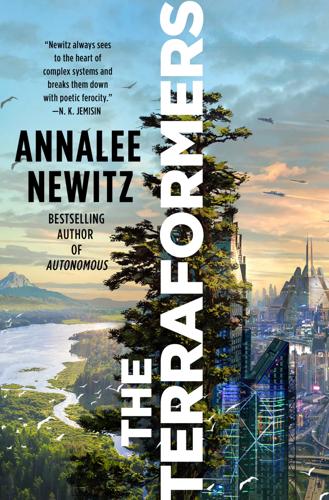
The Terraformers
by
Annalee Newitz
Destry recognized the sensors from her parents’ work building the boreal forest—they turned red when the pH was low, and blue when it was high. Based on the colors, ranging from pink and purple to pale blue, it seemed that the ERT was testing a wide range of possible mixtures. Every microbiome wanted a slightly different pH, and every ecosystem wanted its own specialized microbiome. She’d spent a lot of time mixing new combinations from the Verdance presets. Lucky slid out of the old door into the tunnel. “I never thought I’d say this, but I’m glad you’re here.” Destry was surprised to feel giddy at the low-key compliment, which wasn’t so much praise as it was a lack of insult.
…
The person’s feet on the ground registered as pressure on her back, and she smelled redox reactions in the fire. Each sensor’s evaluation joined the swelling chorus in her ears as the tiny machines voted on what their data points might mean: polymer, hair, carnivore, unprocessed excrement, dead trees, carbon cycle perturbation, predator, metal, fur, synthetic microbiome. As Destry’s data surged across the field and into the forest, the sensors could see what she did, and their analysis coalesced into a strong probability: Homo sapiens in the region for eight days, causally linked to tree loss, small mammal loss, excrement buildup, complex toxins. But there was no data emanating from the person, save for a persistent encrypted stream aimed at an orbital satellite.
…
By the time the full moon returned, this invader’s campsite would be nothing but a rich humus beneath a layer of pine needles. Earth’s boreal forests didn’t work like this; they had sandy soils that would take months to decompose this waste. But Earth was thousands of light-years away. Here on Sask-E, in the far north of the megacontinent Maskwa, the ERT cultivated a tropical microbiome in the forest floor because it was a better carbon sink. On the surface, Sask-E could pass for Pleistocene Earth. But if you actually bothered to squash its soils through a sequencer, you’d know in a second that it was actually a crazy quilt of ecosystems borrowed from half a billion years of Earth evolution—and life on hundreds of other worlds, too.
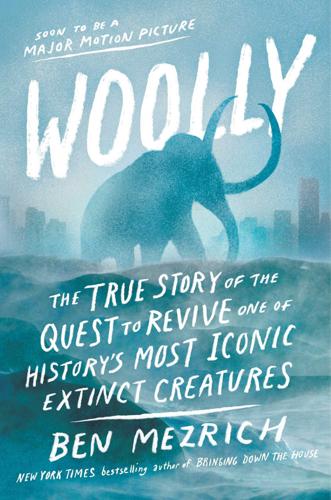
Woolly: The True Story of the Quest to Revive History's Most Iconic Extinct Creature
by
Ben Mezrich
Published 3 Jul 2017
We can lock the cut pieces in their original places by using chemical “fixatives” and restraining polymers and then scan the clear three-dimensional cells using fluorescent confocal microscopy. Okay. But haven’t we lost the Mammoth microbiomes, and isn’t our ability to understand the biomes of viruses, bacteria, and fungi in our bodies too primitive? It should be noted that we have been engineering these invisible communities since the 1500s, with the dawn of smallpox vaccines in China. Today, the engineering of body ecosystems has become so advanced that companies have been founded around the process, such as Seres, SynLogics, AOBiome, Fitbiomics, and Holobiome. We study and use the microbiomes of modern elephants that eat and play in snow as well as other herbivores.
…
If all we want is a cold-resistant elephant, then we might want to make only a few dozen small changes, but as the technology gets cheaper we will probably try many versions, including some that are with obsessive-compulsive levels of molecular realism. If we get that good at genome engineering, what about the unsequenced part of genomes, plus the epi-genomes and microbiomes? Experts in ancient DNA reading have been dismissive of the prospects for sequencing a whole genome from ancient DNA. This is a fairly reasonable position today, since no mammalian genome has been completely sequenced even for living species (even for humans), and ancient DNA is shredded into millions of pieces per cell by radiation, which make it even more daunting.
…
We study and use the microbiomes of modern elephants that eat and play in snow as well as other herbivores. Finally, isn’t the epigenome even more perplexing than the missing genomic DNA and the microbiome? Well, we can read important parts of the epigenome via the methylated cytosine bases that persist in ancient Mammoth DNA in a variety of body tissues. We also can leverage the epigenome of Asian elephants, which were probably genetically interfertile with Mammoths, just as breeds of dogs with wildly different traits (for example, nine-hundred-fold range in body size) have compatible epigenomes. Whether using genome writing or editing, we change only a very small fraction of the elephant genome to make it identical to Mammoth DNA (for example, the three out of 2,100 bases in the example above)—and we give plenty of time for the epigenome to spread onto the new DNA in the cells.

What to Think About Machines That Think: Today's Leading Thinkers on the Age of Machine Intelligence
by
John Brockman
Published 5 Oct 2015
What’s more, what if we weren’t even the cells of such an organism, but its microbiome? And what if the intelligence of that eukaryote today was like the intelligence of Grypania spiralis, the oldest known multicellular eukaryote—not yet self-aware as a human is aware but still irrevocably on the evolutionary path leading to today’s humans. This notion is at best a metaphor, but I believe it’s a useful one. Perhaps humans are the microbiome living in the guts of an AI that’s only now being born! We know that without our microbiome we would cease to live. Perhaps the global AI has the same characteristics: not an independent entity but a symbiosis with the human consciousnesses living within it.
…
HOFFMAN Evolving AI ROGER SCHANK Machines That Think Are in the Movies JUAN ENRIQUEZ Head Transplants? ESTHER DYSON AI/AL TOM GRIFFITHS Brains and Other Thinking Machines MARK PAGEL They’ll Do More Good Than Harm ROBERT PROVINE Keeping Them on a Leash SUSAN BLACKMORE The Next Replicator TIM O’REILLY What If We’re the Microbiome of the Silicon AI? ANDY CLARK You Are What You Eat MOSHE HOFFMAN AI’s System of Rights and Government BRIAN KNUTSON The Robot with a Hidden Agenda WILLIAM POUNDSTONE Can Submarines Swim? GREGORY BENFORD Fear Not the AI LAWRENCE M. KRAUSS What, Me Worry? PETER NORVIG Design Machines to Deal with the World’s Complexity JONATHAN GOTTSCHALL The Rise of Storytelling Machines MICHAEL SHERMER Think Protopia, Not Utopia or Dystopia CHRIS DIBONA The Limits of Biological Intelligence JOSCHA BACH Every Society Gets the AI It Deserves QUENTIN HARDY The Beasts of AI Island CLIFFORD PICKOVER We Will Become One ERNST PÖPPEL An Extraterrestrial Observation on Human Hubris ROSS ANDERSON He Who Pays the AI Calls the Tune W.
…
Even if we can see what’s happening, we want what they give us far too much not to swap it for our independence. So what do I think about machines that think? I think that from being a tiny independent thinking machine, I am becoming a tiny part inside a far vaster thinking machine. WHAT IF WE’RE THE MICROBIOME OF THE SILICON AI? TIM O’REILLY Founder and CEO of O’Reilly Media, Inc. G. K. Chesterton once said, “The weakness of all Utopias is this, that they take the greatest difficulty of man and assume it to be overcome, and then give an elaborate account of the overcoming of the smaller ones.”5 I suspect we face a similar conundrum in our attempts to think about machines that think.
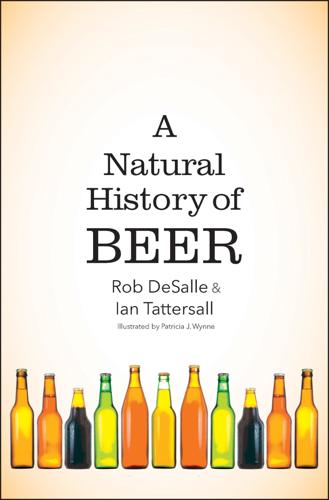
A Natural History of Beer
by
Rob DeSalle
Published 14 Jun 2019
Scientists have known for a long time that our large intestines are filled with bacteria, and more recently have been able to determine the quantities of the different kinds of microbes that live in the long intestine, something that is apparently affected by drinking beer. In 2016 Gwen Falony and her colleagues examined the gut microbiomes of more than a thousand people using the DNA preserved in stool samples, much as DNA fingerprinting identifies the perpetrators in TV crime dramas. They showed that frequency of beer drinking had a big impact on the species of microbes living in the gut. Whether the difference makes beer drinkers more—or less—healthy overall is still unknown.
…
G3: Genes, Genomes, Genetics 6, no. 4: 957–971. Cliften, P., P. Sudarsanam, A. Desikan, L. Fulton, B. Fulton, J. Majors, R. Waterston, B. A. Cohen, and M. Johnston. 2003. “Finding Functional Features in Saccharomyces Genomes by Phylogenetic Footprinting.” Science 301, no. 5629: 71–76. DeSalle, R., and S. L. Perkins. 2015. Welcome to the Microbiome: Getting to Know the Trillions of Bacteria and Other Microbes in, on, and around You. New Haven, CT: Yale University Press. Dunn, Rob. 2011. The Wild Life of Our Bodies. New York: Harper Collins. Gallone, B., J. Steensels, T. Prahl, L. Soriaga, V. Saels, B. Herrera-Malaver, A. Merlevede, et al. 2016.
…
“Sensory Expectations Elicited by the Sounds of Opening the Packaging and Pouring a Beverage.” Flavour 4, no. 1: 35. Chapter 12. Beer Bellies More information on the beer belly can be found in Schütze et al (2009), Shelton and Knott (2014), and Bobak, Skodova, and Marmot (2003). Falony et al. (2016) is the source for our discussion of beer and microbiomes. For a great review of the impact of alcohol on the kidneys see Epstein (1997). Lu and Cederbaum (2008) describe the CYP2E1 gene interaction with alcohol, and the biology of ADH variants is discussed by Mulligan et al. (2003). GWAS and alcoholism is discussed in Bierut et al. (2010). Bierut, L.
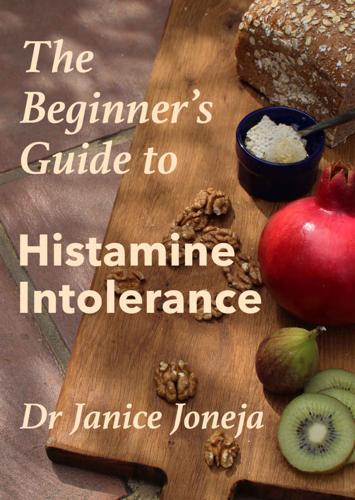
Histamine Intolerance: A Comprehensive Guide for Healthcare Professionals
by
Janice Joneja
Published 27 Nov 2017
If you find that your symptoms resolve, or diminish in intensity, you will be able to control your reactions by dietary management. Supplementary diamine oxide, taken before eating, will further help by reducing the amount of histamine in the food. If your histamine excess is indeed due to a change in the microbial flora of your bowel (“your microbiome”) and no other cause, you may find that over time you will begin to tolerate more histamine-containing and releasing foods as your microbiome returns to its normal composition. Anxiety Question: “I turned 50 last September. Two years ago, one of my eyes got really itchy, and swelled hugely when I rubbed it. This has happened several times since then, but getting more severe each time; now both eyes swell up, plus I have a lot of anxiety and panic.

The Beginner's Guide to Histamine Intolerance
by
Janice Joneja
Published 1 May 2017
If you find that your symptoms resolve, or diminish in intensity, you will be able to control your reactions by dietary management. Supplementary diamine oxide, taken before eating, will further help by reducing the amount of histamine in the food. If your histamine excess is indeed due to a change in the microbial flora of your bowel (“your microbiome”) and no other cause, you may find that over time you will begin to tolerate more histamine-containing and releasing foods as your microbiome returns to its normal composition. Anxiety Question: “I turned 50 last September. Two years ago, one of my eyes got really itchy, and swelled hugely when I rubbed it. This has happened several times since then, but getting more severe each time; now both eyes swell up, plus I have a lot of anxiety and panic.
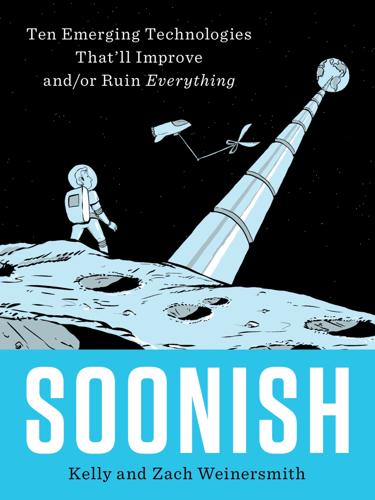
Soonish: Ten Emerging Technologies That'll Improve And/or Ruin Everything
by
Kelly Weinersmith
and
Zach Weinersmith
Published 16 Oct 2017
And, once born, the mammoth needs a modern elephant’s microbes. “So,” says Dr. Shapiro, “it’s born, it eats a little bit of elephant poo, because elephants do that to establish the community of microorganisms that live in the gut that can then be used to break down the food that elephants and mammoths eat. It will then have an elephant’s microbiome.” Welcome back to Earth, long-dead creature! Welcome back, sole representative of your kind! Now, eat some poop. Voila, you’ve got a mammoth, albeit it with some elephanty features. If the goal was to 100% recreate the lost mammoths, you probably fell short. But if the goal was to create an animal that played an important role in an ecosystem before it was lost, well then, maybe an elephantlike mammoth is pretty good.
…
.* Like . . . all of them. This may make it sound like the genomicist is just smarter, but it’s kind of like the difference between a psychologist and a sociologist.* The -ome suffix is just a currently fashionable naming convention. The National Institutes of Health will get these individuals’ genomes, microbiomes, and other information, and will then follow them over time to track changes in their health. The data will be available to doctors, who can comb through them for associations among disease, genetics, and environmental factors. This is going to create a massive data set. Unfortunately, big piles of data don’t just leap up and tell you what’s going on.
…
Now, you can take this drug that was formerly useless because it (seemingly) randomly killed users, and you can successfully cure cancer in a large portion of the population. Also, if you want to explode one sixth of the population, you can now do it in tablet form. Going further, by getting a genome, microbiome, metabolome, and a bunch of other -omes, you might be able to make very specific patient categories for clinical trials. This is a win on three fronts: (1) It means you can do statistically meaningful drug trials with smaller populations; (2) it means drugs don’t have to work for all or even most patients to be considered safe; and (3) it means old drugs that were shelved due to safety issues could be brought back to the market, to be used only on a particular patient category.

Miracle Cure
by
William Rosen
Published 14 Apr 2017
How much easier to deal with bacteria that produce a single enzyme that inactivates penicillin* than with a hospital full of patients infected with MRSA (for methicillin-resistant S. aureus), which doesn’t just laugh at penicillin, but cephalosporin, ampicillin, and every other beta-lactam antibiotic? Or XDR TB (extensively drug-resistant tuberculosis), a bacillus that is unaffected by either isoniazid or rifampin, the more recent agents called fluoroquinolones, and at least one of these second-line drugs: capreomycin, kanamycin, or amikacin. The human microbiome—the microorganisms in a particular environment—is largely composed of harmless or beneficial microbes, but it is also a perfect reservoir for spreading the genes for every imaginable form of antibiotic resistance. There are any number of reasons for the explosive growth in the number and virulence of antibiotic-resistant bacteria—as late as the 1990s, fewer than 15 percent of hospital-acquired infections were resistant to antibiotic treatment; acute-care hospitals today routinely report rates of 60 percent or more.
…
Other researchers are developing ways to attack the source of antibiotic resistance: inhibiting the formation of the enzymes that penicillin-resistant bacteria use to disrupt the beta-lactam ring, for example. Michael Fischbach, at the University of California, San Francisco health campus, has discovered more than three thousand molecules within the human microbiome—the trillions of microorganisms that peacefully coexist inside our own bodies—that show antibiotic potential. Even better: Instead of relying on patience to await microbial innovation, Dr. Fischbach wrote a software program that could teach itself to recognize the patterns of successful antibiotic production in hundreds of existing microbial gene clusters.
…
E., 173n Cousins, Norman, 265 Cox, John, 139 Craddock, Stuart, 93–95 Craik, James, 5 creosote, 34, 35, 46 crowd diseases, 183–84 Crowfoot, John Winter, 144 crystallography, 142–43 X-ray, 144–47, 174–76, 221, 235n, 293 crystals, 142 penicillin and, 142, 145–46, 174, 175 curare, 199 Currie, James, 138 Cutter Laboratories, 296 cytokines, 43 Daily Mail, 149 Dale, Henry, 122, 149, 161 Dalton, John, 49 damiana, 242 Daptomycin, 303 Darwin, Charles, 24 Darwinian evolution, 24, 234 natural selection in, 11, 234 Davis, George Solomon, 241–42 Dawson, Henry, 139, 165 DDT, 234, 246 detail men, 254–59 DeVoto, Bernard, 265 Dick, Elisha, 5 Dilantin, 242 diphtheria, 35, 44–45, 45n, 47, 122, 215, 242 Dirksen, Everett, 279 Dixon, Rand, 278, 279 DNA, 297 Dobzhansky, Theodosius, 243n Doctor’s Dilemma, The (Shaw), 79–81, 85, 86, 189 Domagk, Gerhard, 60–67, 61, 68, 76–78, 84, 87, 95, 96, 100, 103, 274, 305 Domagk, Hildegarde, 68 Dowling, Harry, 274 Dreyer, George, 101–2, 111, 112 drugs, 12, 36–37, 57 cost of manufacturing vs. price of, 277–78 costs of developing, 299 dangerous, protection from, 72–76 ethical, 12 as magic bullet, 39, 42, 48, 49, 52, 58, 68, 78, 217, 238–39, 298 prescriptions for, 12, 252 prescription vs. over-the-counter, 285–87 riskiness of developing, 292–93 safety of, 261–64, 283n standardization of, 73–74 Dubos, René, 114n, 190 Duffield, Pearce, 241 Duggar, Benjamin Minge, 214–17 Duisberg, Carl, 62, 63, 69 Dunn, William, 97, 100 Dunn School of Pathology, 97–98, 101–3, 106, 107–19, 120–30, 123, 132, 133, 135, 137, 139–42, 145, 147, 150, 155–57, 161, 165, 175, 232, 235n, 247, 263, 295 DuPont, 161 Durham, Carl, 285 dyes, dye industry, 45–46, 52, 53, 54, 57, 62, 67n, 70, 94–96 aniline dyes, 46, 47, 52, 54, 64, 158, 244 azobenzene dyes, 52, 64–66, 68, 70, 102 tissue staining, 41–42, 46, 48 dyscrasias, 248–50, 254, 264 dysentery, 35 Dyson Perrins Laboratory, 103, 142, 144 earth, age of, 24 Eastman Kodak, 296 E. coli, 110, 185 Economic Report on Antibiotics Manufacture, 276–77 Edison, Thomas A., 160 Ehrlich, John, 243–44 Ehrlich, Paul, 39–45, 40, 46–49, 52–59, 62, 63, 68, 84, 86, 95–96, 100, 102, 104, 131, 141, 215, 238–39, 249, 261, 272, 274, 293, 296, 305 Einstein, Albert, 3 Elder, Albert, 168, 169 electrons, 51 elementalism, 8 elements, 49, 51 Elfstrom, Edgar, 260–61, 280 Eli Lilly, 161, 169, 170n, 172n, 203, 238–40, 296, 297 Elixir Sulfanilamide, 75–76, 213n, 264, 281, 282 Ellsworth, Henry Leavitt, 156 Elton, Charles Sutherland, 98 enterococci, 198 enzymes, 26n epilepsy, 242 epinephrine, 242 Epstein, Leslie, 110 Equiram, Don Juan, 243 Erasmus, Desiderius, 56 ergot, 242, 261 Erhart, Charles, 164 erysipelas, 168, 172 erythromycin, 3, 238, 240, 244, 268, 271, 297 eukaryotes, 24–25, 224n evolution, 234 Darwinian, 24, 234 natural selection in, 11, 234 Evening Standard, 149 exotoxins and endotoxins, 47 failure rates, 292 Farr, William, 208 FDA, see Food and Drug Administration Federal Food, Drug, and Cosmetic Act, 76, 263, 264, 268, 283, 284, 300 Federal Trade Commission (FTC), 227n, 276–77 Feldman, William, 196–201, 206–7 fermentation, 16–20, 22, 23, 26, 31, 138, 248 deep, 137, 156, 164, 165, 171 penicillin and, 137–38, 141, 156–57, 169, 171, 172, 174, 179 Fermi, Enrico, 99n fertilizer, 50, 57, 63 fever, 43 Fildes, Paul, 77 Finland, Maxwell, 217, 251, 273–74, 280 Finlay, Alexander, 218 Fischbach, Michael, 304 Fisher, Ronald, 208 Fleming, Alexander, 86–96, 89, 100, 103, 110–14, 116, 125, 127, 128, 132–33, 148–50, 173n, 175, 180–81, 236, 266, 269, 274, 295, 301, 301n Flemming, Arthur, 271 Flexner Report, 256 Florey, Ethel Reed, 98, 101, 126, 141, 269 Florey, Howard, 1–2, 97–115, 106, 118, 120, 123, 125, 126, 128, 130–35, 138n, 139–41, 144, 147–49, 151, 152, 155–57, 161, 169n, 172, 175, 180–81, 192, 195, 198, 200, 274, 280 Florey, Margaret Jennings, 125, 126 Folkers, Karl, 162, 199–201, 207, 230 Food, Drug, and Cosmetic Act, 76, 263, 264, 268, 283, 284, 300 Food and Drug Administration (FDA), 75, 76, 223, 232, 248, 251n, 252, 259, 263–64, 268, 270, 280, 282, 287, 299, 300, 303 Chloromycetin and, 249–52, 254, 258–60, 262, 264 drug review processes of, 287–90, 299 Kefauver hearings and, 280 Kelsey at, 281–84, 287–93 Parke-Davis and, 259 thalidomide and, 281–84, 288 Food and Drug Administration Safety and Innovation Act, 300–301 Ford, Henry, 63–64 Fortune, 253, 255 Foster, Jackson, 191 Fourier, Jean-Baptiste, 147 Fourier analysis, 147, 174, 176 Fourneau, Ernest, 68–69, 297 Fracastoro, Girolamo, 13–14 France, 16, 19, 20, 29, 154 Franklin, Benjamin, 11, 12n Freud, Sigmund, 241, 242 Fritsch, Homer, 251 FTC (Federal Trade Commission), 227n, 276–77 Fulton, John, 1–2, 97n, 133 GAIN, 301, 303, 304 Galdston, Iago, 64 Galen, 7–9, 14, 187, 213 gangrene, 35, 86, 87, 87n, 198 Gardner, Duncan, 120, 125 Gäumann, Ernest, 127 Gauss, Carl Friedrich, 84n Gay-Lussac, Joseph, 49–50 Gelmo, Paul, 70 genomic revolution, 298 Germany, 39–41, 44, 159–60 chemical and dye industry in, 57, 62 U.S. immigrants from, 164 Germany, Nazi, 62n, 115, 120, 137n, 177–80, 202, 243 concentration camps of, 52n, 140, 178 drug development in, 177–78 fuel oil supplies of, 178–79 Nuremberg tribunals and, 210 penicillin and, 127–28 germ theory, 15, 21, 35, 36, 42, 50, 59, 85n, 188 Glaxo, 121, 173, 181, 230 GlaxoSmithKline, 296, 298 gonorrhea, 13, 35, 78, 180 Gore, Albert, Sr., 277 Graebe, Carl, 46 Gram, Hans Christian, 94 gramicidin, 190–91, 235 gram-negative pathogens, 94, 181, 192, 194, 217, 218, 237, 244, 298 gram-positive pathogens, 94, 174, 175, 190, 194n, 198, 217, 218, 224, 238, 244 Graunt, John, 14 gray baby syndrome, 259–62 Gregg, Alan, 132, 133 Gregory, James, 143 Grimm, Wilhelm and Jakob, 39n, 181 Gross, Walter, 60, 62 guaiacum, 56 Guérin, Camille, 189 HAART, 293, 294 Haber, Fritz, 62 Haber-Bosch process, 63 Haemophilus influenzae, 6, 298 Hanson, Timothy, 214 Harben Lectures, 39 Harper, Robert N., 74 Harris, Oren, 284 Harrison, Ross, 133 Harrop, George A., 153 Harvard-wide Program on Antibiotic Resistance (HWPAR), 303–4 Harvey, William, 9, 35 Hata, Sahachirō, 55, 58 Heatley, Norman, 2, 108–10, 112–13, 115, 117, 122–26, 128, 130, 132, 134, 135, 138n, 140, 141, 148, 151, 156, 157, 162, 164, 165, 195, 197, 198, 232, 280 bedpans used for growing penicillin, 123, 123, 136, 137 filtration machine of, 123–25, 124, 293 Helmont, Jan Baptist van, 208 Henle, Jacob, 22 heroic medicine, 7, 8, 10–11, 36 Heyden Chemical, 225–26 Hicks, Thomas, 261 Hill, Austin Bradford, 209–13, 288, 291 Hinshaw, Corwin, 196–201, 203, 206–7 Hippocrates, 8, 183, 187 Hippocratic Oath, 8n, 12, 36n, 262 histamines, 186 histology, 41 Hitler, Adolf, 179 HIV, 293–94 Hobby, Gladys, 165, 219 Hodgkin, Dorothy Crowfoot, 142–47, 143, 173–76, 221, 235n, 274, 293 Hodgkin, Thomas, 143 Hoechst AG, 45–47, 55, 57–58, 62, 160n, 296–97 Hoffmann-La Roche, 163, 230, 268 Hollaender, Alexander, 165 Holmes, Oliver Wendell, Sr., 36–37, 67n, 267 Homo sapiens, 183, 184 Hooke, Robert, 142 Hopkins, Frederick Gowland, 104–5 Hörlein, Heinrich, 63, 65, 68–69 hospitals: infections acquired in, 301–2 sanitary environment in, 33–35 Hughes, W. Howard, 150 human microbiome, 301, 304 humoral theory, 7–8, 14 Humphrey, Hubert, 285 Humphrey-Durham Amendment, 285–87 Hunt, Mary, 135–36 iatrogenesis, 7 I. G. Farben, 62–63, 68–69, 71, 95, 100, 131, 159, 163, 177–79, 230, 299n Ilotycin, 240 immune response, 48 immune system, 42, 61, 236 components of, 42–43 inflammatory response, 43, 48, 186, 278 immunity, 42–44 Imperial Chemical Industries (ICI), 121–22, 173, 176 Indinavir, 294 Industrial and Engineering Chemistry, 162 Industrial Revolution, 11, 16, 178, 290–91 inflammation, 43, 48 Institut de France, 18 Institut Pasteur, 15, 31, 37, 68, 69, 295 insulin, 176, 239 iodine, 65, 164 ions, 51 Jamestown, 81 Jefferson, Thomas, 154 Jenner, Edward, 13n, 26, 44 Jennings, Margaret, 125, 126 John Hopkins School of Medicine, 8 Johnson, Lyndon, 277 Johnson & Johnson, 297 Jones, Arthur, 130 Joseph, A.

Why We Sleep: Unlocking the Power of Sleep and Dreams
by
Matthew Walker
Published 2 Oct 2017
Sleep’s role in redressing the balance of the body’s nervous system, especially its calming of the fight-or-flight sympathetic branch, improves the bacterial community known as your microbiome, which is located in your gut (also known as the enteric nervous system). As we learned about earlier, when you do not get enough sleep, and the body’s stress-related, fight-or-flight nervous system is revved up, this triggers an excess of circulating cortisol that cultivates “bad bacteria” to fester throughout your microbiome. As a result, insufficient sleep will prevent the meaningful absorption of all food nutrients and cause gastrointestinal problems.III Of course, the obesity epidemic that has engulfed large portions of the world is not caused by lack of sleep alone.
…
While leptin and ghrelin may sound like the names of two hobbits, the former is derived from the Greek term leptos, meaning slender, while the latter comes from ghre, the Proto-Indo-European term for growth. III. I suspect we’ll discover a two-way relationship wherein sleep not only affects the microbiome, but the microbiome can communicate with and alter sleep through numerous different biological channels. IV. Beyond a simple lack of sleep, Dijk’s research team has further shown that inappropriately timed sleep, such as that imposed by jet lag or shift work, can have equally large effects on the expression of human genes as inadequate sleep.
…
Downstairs in the body, sleep restocks the armory of our immune system, helping fight malignancy, preventing infection, and warding off all manner of sickness. Sleep reforms the body’s metabolic state by fine-tuning the balance of insulin and circulating glucose. Sleep further regulates our appetite, helping control body weight through healthy food selection rather than rash impulsivity. Plentiful sleep maintains a flourishing microbiome within your gut from which we know so much of our nutritional health begins. Adequate sleep is intimately tied to the fitness of our cardiovascular system, lowering blood pressure while keeping our hearts in fine condition. A balanced diet and exercise are of vital importance, yes. But we now see sleep as the preeminent force in this health trinity.
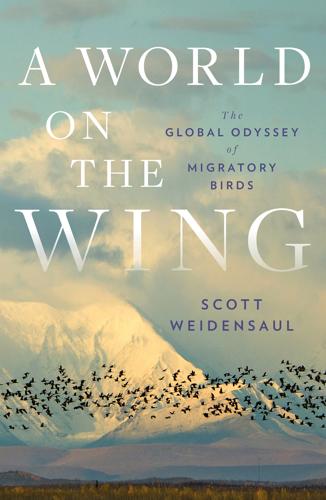
A World on the Wing: The Global Odyssey of Migratory Birds
by
Scott Weidensaul
Published 29 Mar 2021
Finally, we hear the distinctive chip notes of a Kirtland’s, get him trapped and tagged, his blood archived, and his poop scooped. “One of the questions we’re looking at is just how does the microbiome of an individual change as it moves 2,000 miles?” Cooper says as he smears the dropping across the sample paper. “How does the blood parasite load change within individuals in two different periods in the migration cycle? We don’t know the consequences of having different organisms in your microbiome” at different times of the year. This is the fifty-ninth warbler for the season, and with only a few days left, it’s clear Cooper won’t hit his goal of putting nanotag transmitters on 100 Kirtland’s.
…
In addition to routine measurements, the researcher takes a few drops of blood from a vein in the bird’s wing, and when it splatters a wet dropping on his pants leg, Fox is ready, scooping it up with a small plastic spatula, bottling some in a vial of preservative and smearing the rest on a square of blotter paper—a colleague at the Field Museum in Chicago is looking at how the microbiome of the warblers changes from winter to summer, and how it may affect their survival and productivity, the first time anyone’s been able to do that. Finally, the warbler gets a unique set of colored leg bands so it can be visually identified at a distance, and a nanotag, which sits low on its back, held in place by elastic loops around the tops of its legs.
…
See also songbird trapping in Cyprus of Amur falcons, 316–17, 323 of ducks, 148 of shorebirds, 33, 34, 36, 57, 61, 116–17, 294–95 of spoon-billed sandpipers, 33, 293 Hurricane Katrina, 134 hybrids of subspecies, 122 ice age Kirtland’s warblers and, 161 migratory routes and, 121n immune system diversity of genes in migrants, 75–76 morph colors and, 237–38 insectivores, aerial, 89, 98–99 insects caterpillars, 197, 199 dragonflies, 19, 95, 322n falling populations of, 149 migratory, 19, 95, 97 monarch butterflies, 19, 95, 97 monocrop agriculture and, 206 North American diversity of, 199 seasonal mismatch and, 197, 200, 202, 204, 205, 208 termites eaten by Amur falcons, 321–22 instinct, encoding migration, 23, 83, 122, 185–86, 218, 220–21 internal organs growing or shrinking as needed, 40, 64, 66, 69, 158 metabolized to produce water, 71 International Union for the Conservation of Nature (IUCN), 31, 32, 309 introduced bird species, population loss, 147–48, 149 isotopes blackcap wintering areas and, 220 carry-over effects and, 169, 171–72, 173 in Swainson’s hawks, 245 Italy, songbirds eaten in, 280–81 Jamaica, 169–70, 173 Japan, seasonal mismatch in, 201 junco, hippocampus of, 82 Key, John, 276 Kidney Island, 259–60 Kirtland, Jared, 161 Kirtland’s warblers, 157–68, 179–86 carry-over effects on, 157–58, 160, 168, 170–71, 172–74, 184–85 map of migration, 162 microbiome of, 165, 167, 184 nanotags on, 160, 165, 167–68 potentially expanding winter range, 185–86 sea level rise and, 185, 186, 190 knots. See also red knots great, 33, 40, 41, 42, 49 Kuotsu, Rokohebi, 324 Lanusse, Agustín, 226, 228, 229 Larkin, Jeff, 107–9 Larnaca Declaration, 299 La Sorte, Frank, 195–96 lead poisoning, 238n legal protections for birds European, 298 North American, 297–98 lemmings, 214–15 Leung, Katherine, 43, 49–50 Li, Dongming, 54, 55 Li, Jing, 25, 31, 33, 34, 52, 54, 57, 58–60 light pollution, 143–46 lime sticks, 280, 283, 287–91, 302, 307–9 Lin, Zhang, 25–26, 31, 33, 34, 58, 59, 60, 61 Little, Roger, 284, 286, 288–90 Living on the Edge (Zwarts), 175 Living on the Wind (Weidensaul), 7, 18, 102, 129 Lockley, Ronald, 91 Loughlin, Kevin, 317–18, 333, 339 Lowery, George, Jr., 131 machine learning nighttime calls and, 128 stripping away precipitation signal, 133 Mackenzie, Stu, 95 Mack Lake fire, 163 Macquarie Island, 275 magnetic field of earth, 8–9, 84, 85, 87 magnetic orientation, 84–88.
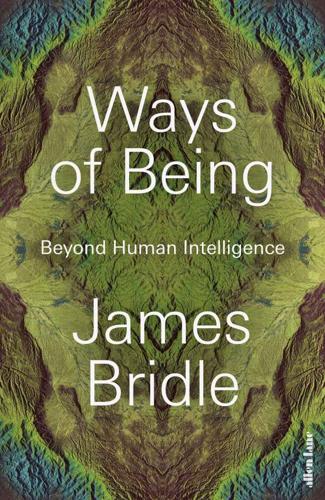
Ways of Being: Beyond Human Intelligence
by
James Bridle
Published 6 Apr 2022
Although these symbiotic partners no longer exist, the avocado has moved on: today, it continues to spread itself through other animals that appreciate its pulp.30 Symbiosis is crucial to our daily lives. The human microbiome, the two kilograms or so of bacteria and other organisms that we carry around with us – mostly in our gut – profoundly influences our awareness and behaviour. This applies even to our intelligence: the health or otherwise of our microbiome affects both brain development and our ability to cope with stress and trauma. Studies have shown that elderly people living in care homes have less diverse microbiomes than those living in broader communities, and are as a result more prone to frailty and chronic illness.31 We rub along with symbiosis every day, but we also come from it.
…
For more on the ghosts of symbiosis, see Connie Barlow, The Ghosts of Evolution: Nonsensical Fruit, Missing Partners, and other Ecological Anachronisms (New York: Basic Books, 2000). 31. For the connection between the microbiome and brain development, see J. Cryan and T. Dinan, ‘Mind-Altering Microorganisms: The Impact of the Gut Microbiota on Brain and Behaviour’, Nature Reviews Neuroscience, 13, October 2012, pp. 701–12; https://doi.org/10.1038/nrn3346. For the microbiome and illness in the elderly, see M. Claesson, I. Jeffery, S. Conde, et al., ‘Gut Microbiota Composition Correlates With Diet and Health in the Elderly’, Nature, 488(7410), August 2012, pp. 178–84; https://doi.org/10.1038/nature11319. 32.
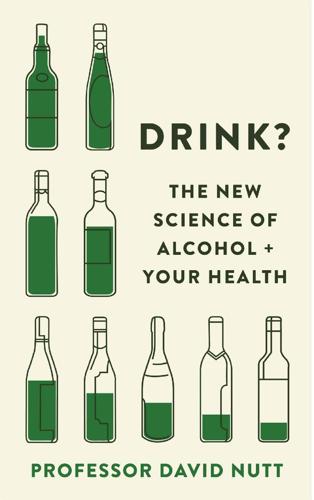
Drink?: The New Science of Alcohol and Your Health
by
David Nutt
Published 9 Jan 2020
She’d become confused and delirious and the reason was that the toxic substances from her gut bacteria weren’t being cleared by the liver so they got into her brain and poisoned it. We showed this was the case when we treated her with antibiotics. They kill all the bacteria in the gut, all the microbiome, so the toxins disappear. For a few days, she woke up, was alert and conscious. But then her gut recolonised itself and she went back into a coma and died. Right now, the microbiome is a hot area of research. The suggestion is that your unique inner world of bugs is not only affected by what you drink (and eat), but is a key factor in whether you get ill and with which condition. Drinking alcohol (and/or having a bad diet) encourages the microbes in the gut to produce toxic substances that promote the inflammatory processes and gut permeability that allow diseases, including liver disease and cancer, to happen.
…
If you do have some liver function left, you can stay alive with cirrhosis for some years. But you are extremely vulnerable to catching a fatal infection; your body easily becomes overwhelmed as you don’t have the right level of proteins in your blood. The other thing the liver does is break down the toxins produced by the microbiome so that they don’t get to the brain. That’s why people at this stage get confused and delirious – a phenomenon called hepatic encephalopathy – because their brain is being poisoned by these substances. Doctors can give people antibiotics to kill the gut bugs, but this only gives temporary respite.

The Case Against Sugar
by
Gary Taubes
Published 27 Dec 2016
Another issue that has recently added still another layer of complication to the science is the role played in obesity and diabetes by the bacteria in our guts, known as the gut microbiota or microbiome. New technologies will lead inevitably to new areas of research, new observations, and new discoveries. The ability to sequence the genomes of these bacterial species has opened up a new frontier of research, just as the ability to measure blood pressure, cholesterol, or insulin sensitivity did for earlier generations of researchers. The microbiome research, because it’s brand-new, is at a very preliminary stage. Still, as the new new thing (to borrow a phrase from the journalist Michael Lewis) in obesity and diabetes research, gut bacteria get an inordinate amount of attention, particularly from the media, though we may not know for decades what to make of the observations that ensue—what is signal and what is noise.
…
Most of the work so far has been done in laboratory mice and rats, and the relevance to human life (or even to other laboratory animals) is unclear. The observations that come from human studies and the very few human experiments are still impossible to interpret reliably. Certain alterations in this gut microbiome associate with obesity, metabolic syndrome, and diabetes, but, as the researchers will acknowledge, “it remains to be determined whether these are the results of altered glucose metabolism and insulin resistance or contribute to their development.” Since the 1950s, if not earlier, researchers have known that the foods we eat and the form in which they come—indigestible fiber, refined grains and sugar, and all the rest—will influence which species of gut bacteria thrive and which don’t.
…
“Postprandial Glucose and Insulin Responses to Meals Containing Different Carbohydrates in Normal and Diabetic Subjects.” New England Journal of Medicine 309, no. 1 (July 7): 7–12. Barker, T. C., D. J. Oddy, and J. Yudkin. 1970. The Dietary Surveys of Dr Edward Smith 1862–3: A New Assessment. London: Staples Press. Barlow, G. M., A. Yu, and R. Mathur. 2015. “Role of the Gut Microbiome in Obesity and Diabetes Mellitus.” Nutrition in Clinical Practice 30, no. 6 (Dec.): 787–97. Barnard, E. F. 1928. “Too Much Sugar for the World to Eat.” New York Times, April 8: 112–14. Bart, P. 1962. “Advertising: Calorie Craze and Its Impact.” New York Times, Feb. 25: F12. Bashford, E. F. 1908a.
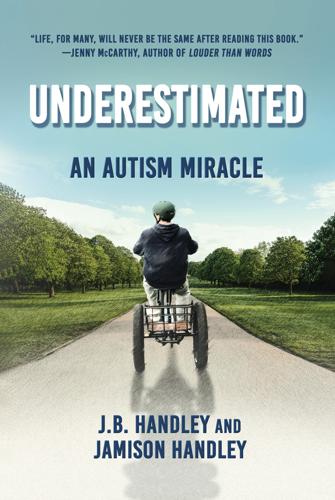
Underestimated: An Autism Miracle
by
J. B. Handley
and
Jamison Handley
Published 23 Mar 2021
As the years have passed, I’ve painfully resigned myself to never knowing, but whenever I let that thought bubble up, the pain is acute. Most of the time in the clinic is spent waiting. I’m sitting by Jamie who is horizontal on a small bed, slightly inverted to give his recently received microbiome “transplant” the best chance of remaining in his bowels, hopefully replacing an unhealthy microbiome with a healthy one. It sounds simple, and it really is. Given our downtime, the clinician is peppering me with questions about Jamie. I’m always a little uncomfortable answering questions in Jamie’s presence about him, it somehow feels wrong—he should be the one answering.
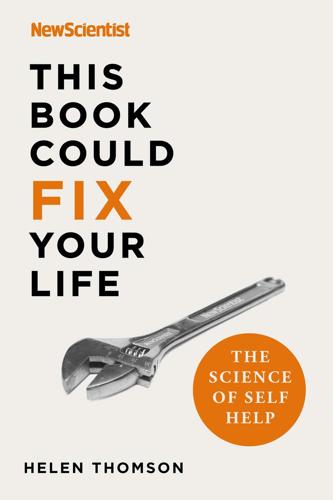
This Book Could Fix Your Life: The Science of Self Help
by
New Scientist
and
Helen Thomson
Published 7 Jan 2021
What’s more, many nutrients found in the diet, such as B-group vitamins, play an important part in helping our cells generate energy, as well as being a source of vital antioxidants, which reduce cell damage. But when you’re thinking about dietary modifications to boost your happiness, you might also want to consider the small but mighty bugs that reside in your gut. From the day we are born, bacteria, viruses, protozoa and fungi colonise our guts, establishing a community known as our microbiome. Our microbiome helps shape our immune system, and heavily influences our physical health, mood and behaviour. How does it do that? Some bacteria, such as Lactobacillus rhamnosus, which is used in dairy products, have potent anti-anxiety effects in animals. L. rhamnosus works by changing the expression of GABA receptors, which appears to have a calming effect on some areas of the brain.
…
Although it’s not been tested, it may be possible to recreate this effect by making your own low-calorie, high-fibre foods at home: vegetable muffins that look like the sugary versions we’re more used to, for example. Our desire for food is also affected by the little bugs inside our stomach, our gut microbiome. We’ve already seen how they can affect our happiness in Chapter 2. But our gut microbiota don’t just flourish on certain diets, they may also control our food craving and preferences to serve their own purposes. We know, for example, that animals’ gut flora affects their taste receptors, which changes what foods they prefer to eat.
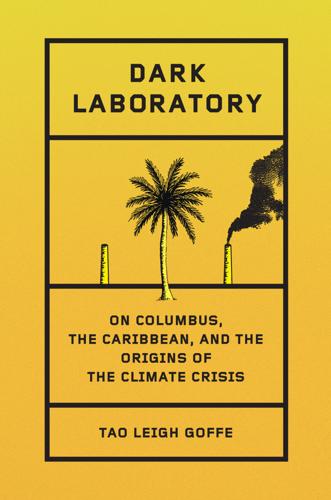
Dark Laboratory: On Columbus, the Caribbean, and the Origins of the Climate Crisis
by
Tao Leigh. Goffe
Published 14 Mar 2025
Coordinated birthing protects the colony and blurs the biological ties of specific mothers to certain pups, known by the scientific term “veil of ignorance.” There is only one night when the colony is vulnerable, when the females collectively focus on birthing. The young are collectively breastfed for a month underground before growing strong enough to venture outside. By the time they are ready to hunt for themselves, their microbiome has developed significantly through a collection of shared milk antigens. Since so much of these birthing rituals take place underground, it has been difficult for scientists to observe them. Studies reported in the journals Science and Nature Communications suggest that this choreography of birthing and subsequent mothering leads to even distribution of food resources.[10] The mongoose pups most in need are breastfed regardless of parentage, and instead of favoring their own young, the group prioritizes feeding all the newcomers and decreases the risk of predation.
…
There are lessons here in collective care, nurturing, and communal nourishment when we contend with climate precarity. The true “veil of ignorance” was the colonial condition of bodily disavowal of Indian women, the dual intimacy and disdain, the desire, and the biopolitics of future nourishment. The intimacy and microbiome of the teat is a central part of the domestic inner workings of colonial biopower. British physicians advised white mothers not to breastfeed because the tropical climate was considered debilitating. The choreography of mothering was perverse and entangled on plantations, too. Mrs. Espeut was no stranger to the dynamics of surrogate mothering, having been raised in Sri Lanka before her marriage brought her to Jamaica.
…
The babies died of malnutrition aboard ships with only water to drink, which they could not digest because they were too young. The history of breastfeeding, pumping, and human milk banks reveals the imperial dynamics of power. Consent has always been fraught for mothers in the colonies amid the colliding microbial worlds and microbiomes. It is vastly different from the choreography of the mother mongooses, and I mention it here because Indian nourishment and stories of natural history sustained the British colonial class for generations. Indian women’s wombs have long been a political locus of exploitation by the West. The mothering was not only of milk and caretaking; women also carried out mothering through the act of storytelling.

Been There, Done That: A Rousing History of Sex
by
Rachel Feltman
Published 14 May 2022
But while inflamed urethras suck and emotions are pretty much never worth having, there’s reason to believe that some sexually transmitted microbes can have serious upsides. In 2015, biologists at the University of Texas outlined four documented instances of sexually transmitted infections that benefit their hosts.32 Yes, four! And those are just the ones we already know about. Given that our research on the complexity of the world’s microbiomes is practically in its infancy, it seems likely there are other fungi, bacteria, and viruses that do a body good and are most efficiently shuttled around by way of sex. Aphids, for example, trade around a bug called Hamiltonella defensa by butting uglies. These microbes come in handy when parasitic wasps come around to lay eggs inside the aphids’ bodies.
…
Studies of donated blood in developed countries find it in 1 to 5 percent of donors, while as many as one-fifth of blood donors in developing countries tend to carry it. For most people, GBV-C probably floats around as a nonentity. It’s just one more anonymous resident in the bustling metropolises that make up our microbiomes. But for reasons unknown, GBV-C changes how people infected with HIV fare. Research suggests that having both makes a person 59 percent less likely to die of illness related to HIV.36 There’s also evidence that carrying GBV-C can improve outcomes for people with Ebola. Now, please don’t take this as an excuse to go raw dog the whole planet so you can collect nifty microbes like Pokémon.
…
Companies make customers believe that the smells and secretions of the vaginal area are disgusting symptoms in need of treatment and that staying fresh and clean with vaginal douches can provide a cure (and even, some products imply, keep you safe from disease).6 Let’s get something straight: While the vaginal microbiome is complex and occasionally prone to acts of minor rebellion, the associated reproductive system is a self-cleaning oven. It’s supposed to secrete things. It’s supposed to have smells. Only when things seem out of the ordinary or a person is in pain or discomfort is medical intervention necessary (and, at least in my own experience, you almost always just need to stop sitting around in dirty yoga tights all day).

Lifespan: Why We Age—and Why We Don't Have To
by
David A. Sinclair
and
Matthew D. Laplante
Published 9 Sep 2019
That seems to be changing, though, according to the authors, as more of their colleagues publish papers on this area, ensuring “that the gut microbiota are moving out of the shadows and are moving towards centre stage in drug safety studies and personalized health care.” I. D. Wilson and J. K. Nicholson, “Gut Microbiome Interactions with Drug Metabolism, Efficacy and Toxicity,” Translational Research: The Journal of Laboratory and Clinical Medicine 179 (January 2017): 204–22, https://www.ncbi.nlm.nih.gov/pmc/articles/PMC5718288/; see also B. Das, T. S. Ghosh, S. Kedia, et al., “Analysis of the Gut Microbiome of Rural and Urban Healthy Indians Living in Sea Level and High-Altitude Areas,” Nature Scientific Reports 8 (July 4, 2018), https://www.nature.com/articles/s41598-018-28550-3. 16.
…
Plants have survival circuits, too, and we think we might have evolved to sense the chemicals they produce in times of stress as an early-warning system, of sorts, to alert our bodies to hunker down as well.29 What this means, if it’s true, is that when we search for new drugs from the natural world we should be searching the stressed-out ones: in stressed plants, in stressed fungi, and even in the stressed microbiome populations in our guts. The theory is also relevant to the foods we eat; plants that are stressed have higher concentrations of xenohormetic molecules that may help us engage our own survival circuits. Look for the most highly colored ones because xenohormetic molecules are often yellow, red, orange, or blue.
…
—can now be done in less than twenty-four hours. Within ten years, it will be done in a few minutes, and the most expensive part will be the lancet that pricks your finger.3 But those aren’t the only questions that our DNA can answer. Increasingly, it can also tell you what foods to eat, what microbiomes to cultivate in your gut and on your skin, and what therapies will work best to ensure that you reach your maximum potential lifespan. And it can give you guidance for how to treat your body as the unique machine it is. It’s common knowledge that we don’t all respond to drugs in the same way. Sometimes these aren’t small differences in small numbers of people.

A Hunter-Gatherer's Guide to the 21st Century: Evolution and the Challenges of Modern Life
by
Heather Heying
and
Bret Weinstein
Published 14 Sep 2021
The germ theory of disease—in its simplest formulation, the recognition that pathogens cause much disease—led to the discovery and formulation of antibiotics, a huge health boon for humanity. Then we overgeneralized, and imagined that all microbes are bad for us. We are now coming to realize that our microbiome has evolved with us and is necessary for a healthy gastrointestinal tract. Antibiotics are one of relatively few powerhouse tools of Western medicine, but as they have been overprescribed, we have seen an attendant rise in people becoming sick, often chronically so. Just as people are falling ill from lacking healthy microbiomes due to overprescription of antibiotics, so too are our livestock. Furthermore, there are unintended side effects of many antibiotics that will be shocking to most people.
…
Kung Bushmen, 35 lactase persistence, 41–42 lampreys, 23 Lancy, David, 165 language, 146 Lascaux cave art, 36 learning disabilities, 159–60 LED lights, 99–100 lesbians, 136 liberals, 233, 235 lineage, xv, 19–38 adaptive evolution and, 12–14 agriculturalists, 36 amniotes, 25 amphibians, 25 animals, 21 apes, 32 birds, 25–27 craniates, 23 eukaryotes, 20 heterotrophs, 20–21 Homo/Homo sapiens, 32–38 hunter-gatherers, 35–36 mammals, 25–29 monkeys, 30–32 multicellular animals, 21–22 multicellular organisms, 20 Osteichthyes, 23 pastoralists, 36 primates, 29–30, 31 reptiles, 25–26 sex and, 21 single-celled organisms, 20 tetrapods, 23–25, 26 timeline, 38 universal human traits, 19, 37, 223 vertebrates, 22, 23 lions, 129–30, 147 literally false, metaphorically true cultural beliefs, 216–18 live birth, 27 lizards, 25, 28, 109 locomotion, methods of, 28 love, 13, 123–24, 130–31, 139–41 lumber, dimensional and visual perception, 40–41, 228 magic markers, 55 Mahatsinjo village, 218 Malagasy, 86–87, 218, 225 Mammals altriciality and, 126 chromosomal determination of sex in, 107 culture, capacity for, 16–17 lineage, 25–29 mating systems, 130–32 milk production and, 124 REM sleep, 93 mammary glands, 27 manipulation, 228–29 masks, 71 mass extinction, 29 mate guarding, 116–17 mating systems, 127–32 birds versus mammals, 130–32 ecological conditions and, 132 homosexuality and, 136 humans, implications of monogamy and polygyny in, 132–36 monogamy, 127, 128–36 polygamy/polygyny, 127–28, 129, 132–33 See also sexual strategies Maya, 50, 87, 96–97, 168, 229–32 Mayr, Ernst, 67–68 Mbuti pygmies, 35 meat, 41, 54, 78 medicine, 59–73 active ingredient versus whole food, 63–64 bone setting, 69–70 corrective suggestions for, 58 evolutionary approach to, 67–70 exercise and, 62–63 food preservatives, effects of, 65 GMOs, safety of, 66 metrics, focus on, 62 pharmaceuticals, overreliance on, 59–60 proximate versus ultimate approach to, 68, 70 reductionism and, 60–72 scientism and, 61–62 sun exposure and, 66 variability between individuals and, 63 vitamin D supplementation and, 65–66 meerkats, 127, 167 Mendel, Gregor, 42 menopause, 138–39 menstrual huts, 117 Metamorphoses (Ovid), 141 metrics, 62, 142, 152, 170, 172, 281 Mexican cave fish, 21 Midas cichlids, 131 microbiome, 67 milk, 27, 41–42, 82, 124 mind, 8, 93–94, 137, 190 mitochondria, 20 mobile animals, 21 Moken, 139, 216 monarch butterflies, 60 monkeys, 30–32, 92, 97, 202 monogamy, 127, 128–36 moose, 110 moths, 100 movement, 45, 195 Müller-Lyer Illusion, 39 multicellular organisms, 20 myelin, 23 myths, 81, 216–18 nail polish remover, 55 naked mole rats, 127, 131 Natufians, 84 natural gas, 55–56 naturalistic fallacy, xiv, 228, 253 nature versus nurture, 16, 42–44 Navajo, 148, 187 Nayar, 117 Neanderthals, 35, 36 nectar, 82 negative externalities, 233, 235–36 neurodiversity, 159–60 New World, 2–4, 213–14 Nez Perce, 187, 211 niche switching, 10–11, 35–36, 138, 211 nocturnal, 91–92 non-REM sleep, 93 nucleus, cell, 20 obsession, 203 octopuses, 212 olfaction, 51–57 explosive gases and other dangerous substances and, 55–57 remapping of olfactory perception, 53–55, 57 warning provided by, 53, 54, 56 olives, 78 Omega principle, 14–17, 42–43, 45, 76, 111, 236 one-night stand strategy, 118–19 opioids, 203–4 opportunity cost, 204–5 orangutans, 32, 145 orcas, 142, 147 organelles, 20 Osteichthyes, 23 Ovid, 141 ovulation, concealment of, 112 oxytocin, 134 pain medication, 70 paleo diet, 75–76 Pan, 32–33, 34 Pangaea, 25 parental care, 27, 125–27, 130–31 parenthood and relationship, 123–44 cooperative breeding, 127 grief and, 141–42 hyper-novelty and, 136–39 love, evolution of, 123–24, 130–31, 139–41 mating systems.
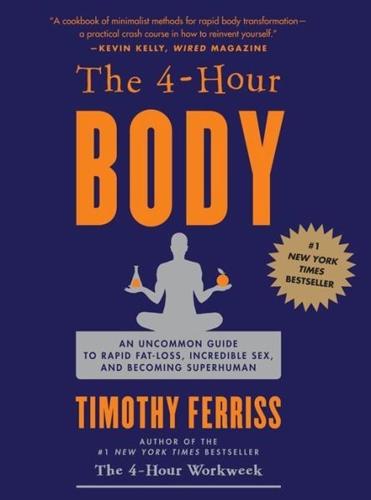
The 4-Hour Body: An Uncommon Guide to Rapid Fat-Loss, Incredible Sex, and Becoming Superhuman
by
Timothy Ferriss
Published 1 Dec 2010
Lean people have more Bacteroidetes and fewer Firmicutes; obese people have more Firmicutes and fewer Bacteroidetes. As obese people lose weight, the ratio of bacteria in their gut swings confidently over to more Bacteroidetes. This finding has significant enough implications for national health that the National Institutes of Health (NIH) launched the multi-year Human Microbiome Project in late 2007. It is like a Human Genome Project for bacteria and intended to explore how some of the 40,000+ species of micro-friends (and fiends) are affecting our health and how we might modify them to help us more. This could take some time, but you don’t need to wait to act. There are a few things you can do now to cultivate healthy and fat-reducing gut flora: Get off the Splenda.
…
Probiotics (bifidobacteria is one example) have also been shown as an effective alternative treatment for depression because of their power to inhibit inflammatory molecules called cytokines, decrease oxidative stress, and correct the overgrowth of unwanted bacteria that prevents optimal nutrient absorption in the intestines. Give your good bacteria an upgrade and get your microbiome in shape. Faster fat-loss and better mental health are just two of the benefits. TOOLS AND TRICKS Twelve Hours of Bingeing in Photos (www.fourhourbody.com/binge) See the binge from this chapter as I captured it in real time and posted the photos on Flickr. It will give you an appreciation for the quantity.
…
Buckminster Funai, Katsuhiko Functional Movement Screen (FMS), 27.1, 27.2 Furness, Doug, 33.1, 33.2 G GA (Geek’s Advantage) Gallagher, Marty, 3.1, 33.1, 33.2 Gandhi, Mahatma Gant, Lamar garlic, 9.1, 10.1, 10.2, 10.3 Garlicky Greens (recipe) gastric emptying, 9.1, 12.1, 31.1 Gebrselassie, Haile genetic determinism genetic testing GI (glycemic index), 8.1, 12.1 Gibala, Martin Gibbons, Peter Gibson, William Giselle [pseud.], and sex, 19.1, 19.2, 20.1 GL (glycemic load), 8.1, 12.1 glucose monitor, 12.1, 12.2, 12.3, 12.4 GLUT-4 (glucose transporter type 4), 9.1, 9.2, 10.1, 10.2, 18.1 glutathione gluten glycemic index (GI), 8.1, 12.1 glycemic load (GL), 8.1, 12.1 GnRH (gonadotropin-releasing hormone) Goethe, Johann Wolfgang Goldacre, Ben, 43.1, 44.1 goLITE, 23.1, 23.2 GOMAD (gallon of milk a day) goose liver pâté Go Raw Carob Cashew Smoothie (recipe) gout Green Machine Pudding (recipe) green tea flavanols, 10.1, 10.2 g-spot, 19.1, 20.1 Guadango, Mike (Asshole) Guillette, Louis Gumbel, Bryant H Habit Forge Hackett, George Hahnemann, Samuel half military crawl Hall, Mike hamstring pull Harajuku Moment, 4.1, 4.2 Hartford Marathon Hartley, Nina, 19.1, 19.2 Hartmann, Gerard Hawthorne Effect HCB (Hungarian Core Blaster) hCG (human chorionic gonadotropin) headaches: and blood sugar dehydration heartburn heart rate monitor heat, and fat loss Heinlein, Robert helplessness, learned Hemwall, Gustav A. Herbert, Frank Hiei monk/athletes Hill, James hip extension Hippocrates HIT (high-intensity intermittent) exercise Hite, Shere Hoehn, Charlie holding your breath homeopathy Horton, Zar hot sauce Houdini, Harry HRM (heart rate monitor) human chorionic gonadotropin (hCG) Human Microbiome Project humidifier, 23.1, 23.2 hummus recipe Hungarian Core Blaster (HCB) Hutchins, Ken Hyde, Andrew hypertrophy hyperzine-A hypothalamus, 21.1, 33.1 I IAS (Insulin Autoimmune Syndrome) ice baths ice packs IF (intermittent fasting) IGF-1 (insulin-like growth factor 1) II (insulinemic index) imbalance, 27.1, 27.2 inaction, excuses for infertility injuries, reversing active-release technique AMIT biopuncture cocktail Egoscue method menu prolotherapy, 25.1, 25.2 shoe heel removal injury-proofing chop and lift cross-body one-arm single-leg deadlift fixing Functional Movement Screen (FMS), 27.1, 27.2 schedule sets and reps single-leg flexibility assessment testing Turkish get-up two-arm single-leg deadlift insomnia onset, 23.1, 23.2 insulinemic response insulin-like growth factor 1 (IGF-1) insulin release insulin sensitivity inulin in vitro fertilization iron excess Iron Penis Kung-Fu Irwin, Nic isoleucine IVF (in vitro fertilization) J James, William Japan, life expectancy in Japanese natto, 9.1, 46.1 Jarmey, Chris, The Concise Book of Muscles JayC (eating more) Jeff (variety) Jell-O, sugar-free Jeter, Derek Johnson, Ben, 29.1, 32.1 Johnson, Michael Jones, Arthur, 2.1, 2.2, 16.1, 16.2, 16.3, 16.4, 16.5 Jones, Brett Jones, Marion Jones, Reese Julee (bodyfat) jumping, 28.1, 33.1n Jurek, Scott, 30.1, 31.1, 31.2, 47.1, 47.2, 48.1 K Kaku, Michio Kamen, Dean Karlan, Dean Karnazes, Dean, 16.1, 31.1 Karwoski, Kirk, 33.1, 33.2, 33.3 Kauai Marathon Kay, Alan kefir Keith, Lierre Kelley, Johnny Kenya, marathoners of Kersschot, Jan ketogenic dieting kettlebells, 14.1, 14.2 for biceps certification, 30.1, 32.1 Fleur’s regimen Russian kettlebell swing Turkish get-up Zar Horton’s method Kimball, Charlie kimchi King, Martin Luther, Jr.

Whole Earth Discipline: An Ecopragmatist Manifesto
by
Stewart Brand
Published 15 Mar 2009
Bacteria have been found living in profusion a mile below the bottom of the seafloor, possibly as old as the sediment around them—111 million years. Look closer to home. Ninety percent of you isn’t you—only a tenth of the cells in your body are human; the rest are microbes. We are a portable swamp. One program of the emerging worldwide Global Metagenomics Initiative is called the International Human Microbiome Consortium, which is busy shotgun-sequencing all of the microbial communities that share our bodily life. We humans have 18,000 distinct genes; our microbes have 3 million. We are one species; they are diverse—a thousand species in our digestive tract (a twenty-one-foot-long bioreactor running on 100 trillion microbes), another thousand in our mouth, five hundred on our skin, another five hundred in those of us with a vagina.
…
Ed Wilson hosted a follow-on meeting at Harvard a few weeks later. The universal message from the scientists was to go for it. As the project took shape, I got to participate in species inventories in Costa Rica, in the Great Smoky Mountains National Park, and inside a wood rat. (Why inside a wood rat? As with the human microbiome project, we are learning the degree to which life lives on life. Carl Zimmer wrote in Parasite Rex [2000]: “There’s a parrot in Mexico with thirty different species of mites on its feathers alone. And the parasites themselves have parasites, and some of those parasites have parasites of their own. . . .
…
Guanacaste Conservation Area, Costa Rica Guardian Guidetti, Geri Gwadz, Robert Haeckel, Ernst “Half Century of United States Federal Government Energy Incentives, A” (Bezdek and Wendling) Hallwachs, Winnie Hamming, Richard Hansen, James Hansson, Anders Harris, Michael Harrison, Jim Haseltine, William Hawaii Hawken, Paul Hawks, John heat waves Hebert, Paul Henderson, Donald herbicides Herman, Arthur Higgs, Eric High Country News Hillis, Danny Hiroshima, Japan HIV/AIDS Holdren, John Holistic Management (Savory) Homer-Dixon, Thomas Hopis horizontal gene transfer horses Howard, Albert Humanitarian Golden Rice Network hurricanes hybrid seeds hydroelectric power hydrogen ice-to-water albedo flip Idea of Decline in Western History, The (Herman) IEEE Spectrum iGEM Jamboree Iglesias-Rodríguez, Débora Illicit (Naím) “Implications of Rising Carbon Dioxide Content of the Atmosphere” (Conservation Foundation) Inconvenient Truth, An Independent India genetic engineering and Green Revolution and nuclear power and slums and Industry Association of Synthetic Biology informal economy infrastructure insect resistance insulin integral fast reactors integrated pest management intelligent design Intergovernmental Panel on Climate Change (IPCC) International Atomic Energy Agency (IAEA) International Consortium for Polynucleotide Synthesis International Council of Science (ICSU) International Human Microbiome Consortium International Maize and Wheat Improvement Center International Rice Research Institute International Soil Reference and Information Centre International Union for Conservation of Nature and Natural Resources (IUCN) Internet Internet Engineering Task Force Intertribal Bison Cooperative Intervention (Caruso) iron irrigation Islam, Muslims Italy jaguars Janzen, Daniel Japan atomic bombing of genetic engineering and nuclear power and Jefferson, Richard Jennings, Lois Judson, Horace Juniper, Tony Kahn, Herman Kahn, Lloyd Kaplan, Robert Kareiva, Peter Kaufman, Wallace Keeling, Charles Keith, David Kelly, Brian Kelly, Kevin Kenya Keynes, John Maynard Khosla, Vinod King, Franklin Hiram Kirk, Andrew Klaassen, Johann Kleiber’s law Knight, Tom Kohm, Kathy Korea, North Korea, South Kunstler, James Howard Kyoto Protocol (2001) L-1 Point (Inner Lagrange Point) Lackner, Klaus Lake Nyos, Cameroon, disaster in Lamarck, Jean-Baptiste Lament for an Ocean (Harris) landraces Langewiesche, William Lansing, Stephen Laquian, Aprodicio Last Forest, The (London and Kelly) Last Whole Earth Catalog Latham, John Latin America genetic engineering and see also specific countries Laws of Fear (Sunstein) LeBlanc, Steven LEED rating system Lehmann, Johannes Lerner, Jaime Lewis, John Liberation Biology (Bailey) Liferaft Earth Limits to Growth, The (Meadows et al.)

The Future Is Faster Than You Think: How Converging Technologies Are Transforming Business, Industries, and Our Lives
by
Peter H. Diamandis
and
Steven Kotler
Published 28 Jan 2020
What’s more critical here is it’s not just stem cells or gene therapy or CRISPR—it’s the combined power of all these techniques, their convergence, that holds the most potential. Perhaps the biggest consequence of this convergence will be individually customized medicine or what’s called “N-of-1 medicine.” In N-of-1 medicine, every treatment you receive has been specifically designed for you—your genome, transcriptome, proteome, microbiome, and all the rest. It’s a level of preventative care not seen before. You’ll know the foods, supplements, and exercise regimen that are perfect for you. You’ll understand which microbes inhabit your gut, and what diet keeps them healthy and fit. You’ll know which diseases you’re most likely to develop and be able to take steps to prevent them.
…
It takes thirty seconds for the full diagnostic to run, which is pretty good considering the system deploys dozens of sensors capturing gigabytes of data. Smart sensors in toothbrush and toilet, wearables in bedding and clothing, implantables inside your body—a mobile health suite with a 360-degree view of your system. “Your microbiome looks perfect,” Google tells you. “Also, blood glucose levels are good, vitamin levels fine, but an increased core temperature and IgE levels…” “Google—in plain English?” “You’ve got a virus.” “A what?” “I ran through your last forty-eight hours of meetings. It seems like you picked it up Monday, at Jonah’s birthday party.
…
Reading, Writing, and Editing the Code of Life For a decade, experts have been trumpeting personalized genomics as a healthcare revolution. When we understand your genome, the thinking goes, we’ll know how to optimize “you.” We’ll know the perfect foods, the perfect drugs, and the perfect exercise regimen, just for you. We’ll know the types of gut flora best suited for your microbiome, the supplements that best commingle with your physiology. You’ll learn the diseases to which you’re most susceptible, and, more importantly, how to prevent them. Or so the story goes.… In 2017, Jason Vassy, a professor of medicine at Boston’s Brigham and Women’s Hospital, decided to take a closer look at that story.

Bread, Wine, Chocolate: The Slow Loss of Foods We Love
by
Simran Sethi
Published 10 Nov 2015
Agriculture and Ecosystems (blog), CGIAR Research Program on Water, Land and Ecosystems, May 16, 2014, http://wle.cgiar.org/blogs/2014/05/16/will-pursuit-food-security-weaken-resilience-global-food-systems/. 9.Raj Patel, Stuffed and Starved: Markets, Power and the Hidden Battle for the World Food System (New York: Melville House, 2012). 10.Food and Agriculture Organization of the United Nations (FAO), International Fund for Agricultural Development (IFAD), and World Food Programme (WFP), The State of Food Security in the World 2015: Meeting the 2015 International Hunger Targets: Taking Stock of Uneven Progress (Rome: FAO, 2015), 1; and Marie Ng et al., “Global, Regional, and National Prevalence of Overweight and Obesity in Children and Adults During 1980–2013: A Systematic Analysis for the Global Burden of Disease Study 2013,” Lancet 384, no. 9945 (August 2014): 770, http://dx.doi.org/10.1016/S0140-6736(14)60460-8. 11.Veronique Greenwood, “You Are Your Bacteria: How the Gut Microbiome Influences Health,” Time, August 29, 2013, http://science.time.com/2013/08/29/you-are-your-bacteria-how-the-gut-microbiome-influences-health/. 12.Catherine A. Lozupone et al., “Diversity, Stability and Resilience of the Human Gut Microbiota,” Nature 489, no. 7415 (September 2012): 220–30, doi:10.1038/nature11550. 13.Food and Agriculture Organization of the United Nations (FAO), The State of the World’s Plant Genetic Resources for Food and Agriculture (Rome: FAO, 1997), 14, ftp://ftp.fao.org/docrep/fao/meeting/015/w7324e.pdf. 14.
…
While 795 million people go hungry, over 2 billion people are overweight or obese.10 And both groups suffer from micronutrient malnutrition. The global standard diet is changing the biodiversity of nearly every ecosystem, including the 100 trillion bacteria that live in our gut, part of what’s known as our microbiome.11 The foods and drinks we consume add to or, increasingly, detract from the diversity of our intestinal flora and have implications for how healthy or unhealthy we are over the long term.12 The factors that contribute to this change are complex and interconnected, but the main reason for this shift is that we’ve replaced the diversity of foods we used to eat with monodiets of megacrops, funneling our resources and energy into the cultivation of megafields of cereals, soy and palm oil.
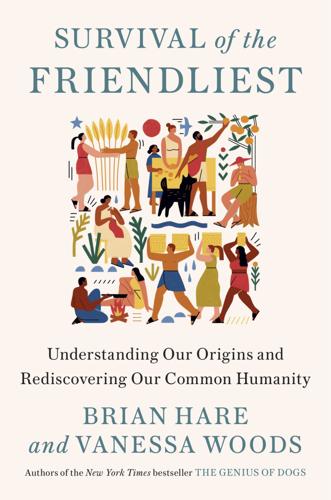
Survival of the Friendliest: Understanding Our Origins and Rediscovering Our Common Humanity
by
Brian Hare
and
Vanessa Woods
Published 13 Jul 2020
In people, it can be as simple as approaching someone and wanting to socially interact or as complicated as reading someone else’s mind in order to cooperatively accomplish a mutual goal.8 It is an ancient strategy. Millions of years ago, mitochondria were free-floating bacteria until they entered larger cells. Mitochondria and the larger cells joined forces and became the batteries that power cell function in animal bodies.17 Your microbiome, which, among other things, allows your body to digest food, make vitamins, and develop organs, is the result of similar, mutually beneficial partnerships between microbes and your body.18 Flowers appeared later than most plants, but their mutually beneficial relationship with pollinating insects made them so successful that they now dominate the landscape19 Ants, estimated to have the same mass as a fifth of all the other terrestrial animals on earth combined, can form superorganisms of up to 50 million individuals that function as a single social unit.20 Each year I*2 challenge my students to use evolutionary theory to solve the world’s problems.
…
Gray, “Mitochondrial Evolution,” Cold Spring Harbor Perspectives in Biology 4, a011403 (2012), published online September 1, 10:1101/cshperspect.a011403. 18. L. A. David, C. F. Maurice, R. N. Carmody, D. B. Gootenberg, J. E. Button, B. E. Wolfe, A. V. Ling, A. S. Devlin, Y. Varma, M. A. Fischbach, S. B. Biddinger, R. J. Dutton, P. J. Turnbaugh, “Diet Rapidly and Reproducibly Alters the Human Gut Microbiome,” Nature 505, 559–63 (2014), published online EpubJan 23, 10:1038/nature12820. 19. S. Hu, D. L. Dilcher, D. M. Jarzen, “Early Steps of Angiosperm-Pollinator Coevolution,” Proceedings of the National Academy of Sciences 105, 240–45 (2008). 20. B. Hölldobler, E. O. Wilson, The Superorganism: The Beauty, Elegance, and Strangeness of Insect Societies (New York: W.
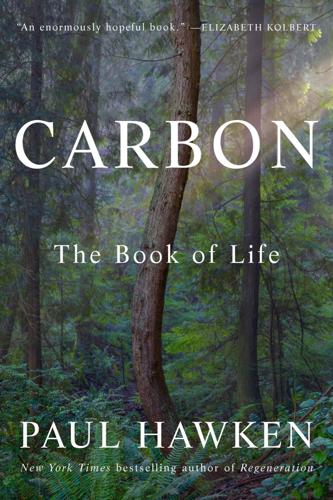
Carbon: The Book of Life
by
Paul Hawken
Published 17 Mar 2025
It is estimated that 90 percent of the Earth’s soils will be heavily degraded by the middle of the century. Until recently, neither the presence nor support of mycorrhizae was included in the agricultural school curriculum. Yet, fungi determine soil health, which determines plant health and the health of all those that eat plants. The soil’s microbiome determines plant nutrients, which feed the human microbiome. Living soil is the primary source of nutrition. Chemical agriculture will never change that; it can only degrade the process. If you remove a plant from the soil, you will see an asymmetrical reflection of the aboveground plant. When the magnitude of the interconnected fungi is added, the capacity of roots to absorb water and nutrients increases by a factor of ten to one thousand.

Deep Nutrition: Why Your Genes Need Traditional Food
by
Catherine Shanahan M. D.
Published 2 Jan 2017
I’ve also responded to all the insightful questions, feedback, criticisms, and demands for fuller explanations that I’ve heard from readers in response to the first edition. Many are built into the expanded chapters. Others, particularly topics that are on everyone’s minds right now, such as detoxification, genetically modified organisms (GMOs), animal rights and sustainability, gluten, brain health, and the microbiome, are addressed in a separate Frequently Asked Questions chapter. While practicing medicine in Kauai, Hawaii, I asked Luke if he could help me write a small pamphlet to explain what I knew to be true about nutrition in simple terms for my patients. Soon, that pamphlet grew into the first edition of Deep Nutrition.
…
Thankfully, most of the people who wrote letters and most of the people I’ve spoken with have gotten the message. But unlike every other topic discussed in that original text (topics like nutrient density and the reduction of empty carbs, the health benefits of healthy fats and fermented foods to help support a thriving microbiome, the benefits of bone stock, and the value of pasture-raised animals), the vegetable oil argument has yet to really move the needle. My failure to sound the alarm among chefs is especially upsetting because I put so much faith in chefs. As you will soon discover, I believe that flavor equals nutrition; seeking out and enhancing flavor almost invariably leads to the enhancing of nutrient value.
…
If that sounds like you or someone you know, you may be relieved to hear that scientists have discovered evidence that those elements of your personality may not be nearly as personal as you might think. They may be a complication of an unhealthy balance of microbes growing in your gut. Research shows that the health of your microbiome has a direct effect on your own ability to view your circumstances and your body in a positive light. In other words, what you see in the mirror is at least in part mediated by tiny creatures living inside you.318, 319, 320, 321, 322 This is a compelling idea, and it’s not just theoretical. One of many studies that substantiates this idea was performed with two groups of mice whose gut flora had been obliterated by large doses of antibiotics.
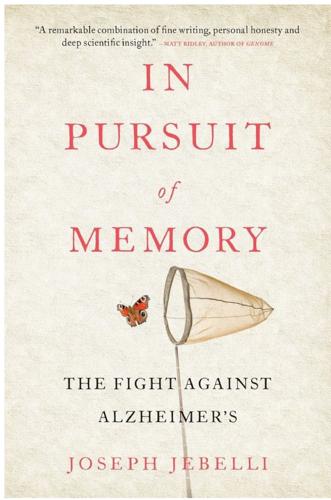
In Pursuit of Memory: The Fight Against Alzheimer's
by
Joseph Jebelli
Published 30 Oct 2017
Moreover, a systematic review carried out at the prestigious Mayo Clinic in Minnesota concluded that ‘while the overall number of studies is small, pooled results suggest that a higher adherence to the MeDi [Mediterranean diet] is associated with a reduced risk of developing MCI [mild cognitive impairment] and AD [Alzheimer’s disease], and a reduced risk of progressing from MCI to AD’.2 How does what we eat protect us? It’s all due to a foggy connection between the brain and the gut. Collectively known as the microbiome, the bacteria that reside symbiotically inside us are vital to brain health. This was demonstrated most starkly in November 2014, when Swedish researchers at the Karolinska Institute in Stockholm showed that germ-free mice–gnotobiotic mice, housed and fed inside sterile containers–are born with leaky, defective blood–brain barriers.3 The blood–brain barrier is a wall of cells that decides what can and cannot enter the brain from the blood coursing through its capillaries.
…
This was demonstrated most starkly in November 2014, when Swedish researchers at the Karolinska Institute in Stockholm showed that germ-free mice–gnotobiotic mice, housed and fed inside sterile containers–are born with leaky, defective blood–brain barriers.3 The blood–brain barrier is a wall of cells that decides what can and cannot enter the brain from the blood coursing through its capillaries. In Alzheimer’s, it’s one of the first things to break down, especially around the hippocampus, where memories are made. But the microbiome can be a dangerous bedfellow too. If excessive amounts of bacteria breach the blood–brain barrier, they will activate the brain’s immune cells–microglia, the cellular protagonists of the Alzheimer’s vaccination story in chapter seven–and cause a form of inflammation that weakens the blood–brain barrier even more, setting in motion a vicious cycle in which more bacteria are let in and more inflammation ensues.

Less Is More: How Degrowth Will Save the World
by
Jason Hickel
Published 12 Aug 2020
Today these little organelles play an absolutely essential role in human life: they convert food into energy that our bodies can use. This is mind-bending: that our most basic metabolic functions, and even the genetic codes that constitute the very core of who we are, depend on other beings. The implications of this are profound. A team of scientists associated with the Interdisciplinary Microbiome Project at Oxford University have suggested that discoveries related to bacteria may revolutionise not only our science but our ontology too: ‘Our ability to map previously invisible forms of microbial life in and around us is forcing us to rethink the biological constitution of the world, and the position of humans vis-a-vis other forms of life
…
See, for instance, ‘Cosmological deixis and Amerindian perspectivism,’ Journal of the Royal Anthropological Institute, 1998. 8 Hannah Rundle, ‘Indigenous knowledge can help solve the biodiversity crisis,’ Scientific American, 2019. 9 For more on Spinoza’s naturalism, see Hasana Sharp, Spinoza and the Politics of Renaturalization (University of Chicago Press, 2011). 10 David Abram, The Spell of the Sensuous: Perception and Language in a More-Than-Human World (Vintage, 2012). 11 This research is reported by Carl Zimmer, ‘Germs in your gut are talking to your brain. Scientists want to know what they’re saying,’ New York Times, 2019. 12 Jane Foster and Karen-Anne McVey Neufeld, ‘Gut–brain axis: how the microbiome influences anxiety and depression,’ Trends in Neurosciences 36(5), 2013, pp. 305–312 13 John Dupré and Stephan Guttinger, ‘Viruses as living processes,’ Studies in History and Philosophy of Science Part C: Studies in History and Philosophy of Biological and Biomedical Sciences 59, 2016, p. 109–116. 14 Ron Sender, Shai Fuchs and Ron Milo, ‘Revised estimates for the number of human and bacteria cells in the body,’ PLoS Biology 14(8). 15 John Dupré, ‘Metaphysics of metamorphosis,’ Aeon, 2017. 16 Robert Macfarlane, ‘Secrets of the wood wide web,’ New Yorker, 2016. 17 Brandon Keim, ‘Never underestimate the intelligence of trees,’ Nautilus, 2019.
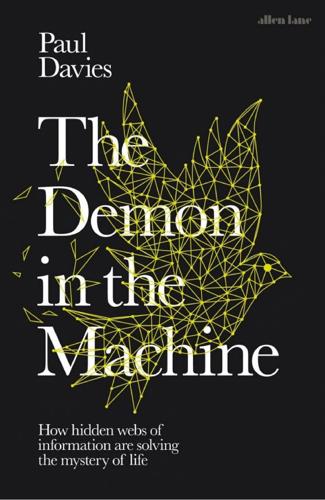
The Demon in the Machine: How Hidden Webs of Information Are Finally Solving the Mystery of Life
by
Paul Davies
Published 31 Jan 2019
Even the humble salmonella bacterium can somehow sense it is floating in space and changes its gene expression accordingly.9 The finding has obvious implications for astronauts’ well-being, because a nasty bug that might be held in check on Earth may make someone sick in space. Related to this is the fact that humans normally carry about a trillion microbes around inside them, many in the gut, forming what is called their microbiome; it plays an important role in human health. If there are changes in gene expression within the microbiome due to long periods in zero- or low-gravity conditions, it could become a serious obstacle to long-term spaceflight.10 Let me mention a couple more intriguing discoveries to finish up this section. Salamanders are well known for their ability to regenerate entire limbs.
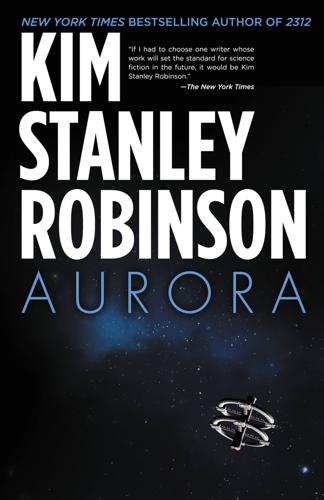
Aurora
by
Kim Stanley Robinson
Published 6 Jul 2015
Dangerous to try to kill things, Freya reminded them. She knew full well, with a sinking sense that she was remembering her earliest memories, that Devi had believed that trying to kill any invasive species usually created more problems than it solved. A destabilized microbiome often caused more harm than anything a balanced microbiome could inflict. Better, therefore, to try to balance things with the least amount of intrusion. Subtle touches, all designed to finesse things for balance. Balance was the crucial thing. Teeter-totters, gently teeter-tottering up and down. Devi had even been an advocate of everyone getting an inoculation of helmiths, meaning ringworms, to give them better resistance to such parasites later.
…
The outstanding questions often had to do with what they called the Universal Minimum Metabolic Rate, the slowest viable speed of a metabolism, which was nearly constant across all Terran creatures, from bacteria to blue whales. A downshift in any species’s metabolism almost certainly could not go below this universal minimum rate; on the other hand, that rate was very slow. So the theoretical possibility seemed to exist to put humans and their internal microbiomes into a very slow state, which would last for a long time without ill effects. It would involve a slowed heartbeat (bradycardia); peripheral vasoconstriction; greatly slowed respiration; very low core temperature, buffered by antifreeze drugs; biochemical retardations; biochemical infusion drips; antibacterials; occasional removal of accumulated wastes; and physical shifts and manipulations, small enough not to rouse the organism too much, but nevertheless very important.

The Obesity Code: Unlocking the Secrets of Weight Loss
by
Jason Fung
Published 3 Mar 2016
And with greater understanding of weight gain, we have a new hope: that we can develop more rational, successful treatments. What causes weight gain? Contending theories abound: Calories Sugar Refined carbohydrates Wheat All carbohydrates Dietary fat Red meat All meat Dairy products Snacking Food reward Food addiction Sleep deprivation Stress Low fiber intake Genetics Poverty Wealth Gut microbiome Childhood obesity The various theories fight among themselves, as if they are all mutually exclusive and there is only one true cause of obesity. For example, recent trials that compare a low-calorie to a low-carbohydrate diet assume that if one is correct, the other is not. Most obesity research is conducted in this manner.
…
Instead, we concoct all sorts of intricate rules: Eat six times a day. Eat a big breakfast. Eat low fat. Keep a food diary. Count your calories. Read food labels. Avoid all processed foods. Avoid white foods—white sugar, white flour, white rice. Eat more fiber. Eat more fruits and vegetables. Mind your microbiome. Eat simple foods. Eat protein with every meal. Eat raw food. Eat organic food. Count your Weight Watcher points. Count your carbs. Increase exercise. Do resistance and cardio. Measure your metabolism and eat less than that. The list of intricate rules is virtually endless, with more coming every day.

What If We Get It Right?: Visions of Climate Futures
by
Ayana Elizabeth Johnson
Published 17 Sep 2024
Everyone would have access to culturally appropriate, life-giving, affordable foods that nourish and prepare us for civic life and contributing the best of our brilliance and capabilities. Everyone gets to eat. Regardless of the color of your skin or where you were born, you have enough calories and nutrients and vitamins and minerals. And the soils would be healthy—growing, not washing away. It’s got, in our region, at least 10% organic matter and a rich microbiome. The seed is a heritage seed that is not genetically modified, that is passing on a story of a people. The carbon would revert its trajectory and be headed back into the soils. And we would be continually innovating around the question of: How can we do better in serving our human and beyond-human kin?
…
See Blue New Deal; ocean health and conservation marine protected areas, 404–5, 406 Markey, Ed, 283, 291 Marvel, Kate, 16, 206 interview, 16–30 McCarthy, Gina, 314 McCarthy, James, 141 McEachin, Donald, 338 McKay, Adam, 204, 219 interview, 205–17 McKibben, Bill (interview), 141–58 meat and dairy production/consumption, 13, 34, 35, 56 See also diet media: climate coverage, 200, 201, 205–6, 219 Leonard and McKay on climate communication in the movies, 204–17 Pierre-Louis on climate and political journalism, 219–36 problems and possibilities, 200, 201, 208, 214 what transformation looks like, 432 See also climate communication/conversations mending, 108 methane, 12, 16n, 25, 81, 187n See also natural gas microbiome, 71 Microsoft, 143 migration. See climate migration Millison, Andrew, 46 mining, 193, 339–40, 370, 378 mitigation, 37 money. See economy; finance monoculture, 13, 25, 35, 66 Montano, Samantha, 95, 347, 348 interview, 348–62 Montreal Protocol, 261 moral compass, xix morality, xix, 174–75, 256–57, 272–73, 379 Morrison, Toni, 323 Mottley, Mia Amor, 148, 270 movies, Leonard and McKay on climate communication in, 204–17 mulching, 70 Museum of Modern Art (MoMA), New York, 104, 114–15 See also Antonelli, Paola mussels, 401 See also ocean farming mutual aid, 95, 389 community-based disaster response and recovery, 95, 355, 356–57, 371 My Kelp app, 411 N National Black Food and Justice Alliance, 77 National Environmental Policy Act (NEPA), 325, 340 National Flood Insurance Program (NFIP), 359, 360 nationally determined contributions (NDCs), 253, 260, 261, 265–66, 279–80 helping developing countries meet their NDCs, 253 monitoring and enforcement challenges, 266–68 See also UN climate negotiations natural disasters.
…
Wilkinson) love • biophilia • interdependence • moral compass • community possibility • transformation • imagination • gumption • art • poetry • collective wisdom • vote • protest • donate • spread the word • carbon footprint • our superpowers • climate action Venn diagram • photosynthesis • Paris Agreement • reforestation • mangroves • wetlands • seagrass • kelp • afforestation • biodiversity • carbon sequestration • soil • carbon dioxide removal • wind turbines • transmission lines • solar panels • public transit mitigation • ecological restoration • re-greening • nature-inspired solutions • permafrost • albedo • carbon cycle • water cycle • evapotranspiration • biomimicry • bioregionalism • ahupua‘a • ecological forestry • perennial • agroforestry • land trust • rural repopulation • generational project • climate victory garden • regenerative agriculture • compost • polycultures • cover crops • mulching • no-till farming • collective bargaining • microbiome • farmers markets • community garden • food sovereignty • strikes • boycotts • ritual • food justice certification adaptation • green infrastructure • living breakwaters • oyster reefs • climate-driven relocation • design justice • mending • repairing • recycling • upcycling • rewilding • restorative design • bike lanes • fifteen-minute city • embodied energy • precautionary principle • artificial intelligence • grid management • carbon capture • batteries • progressive taxation • universal basic income • elections divestment • loss-and-damage fund • climate reparations • credit unions • heat pumps • induction cooktops • insulation • public utility commission • net zero • durability • circularity • scope 3 emissions • deep decarbonization • pre-competitive cooperation • enough • subsidies • carbon tax • philanthropy • investment • green capitalism • leadership • electric vehicles • green hydrogen • nuclear power • fusion energy • union labor culture • Hollywood • rom-com • Scully Effect • democracy • local news • solutions journalism • producer responsibility • education • organizing • youth climate movement • climate justice • intergenerational collaboration treaty • negotiations • nationally determined contributions • global stocktake • low-carbon development • leapfrogging • climate finance • political will • carbon markets • emissions trading • emissions budget • Green New Deal • energy efficiency • water efficiency • electrification • high-speed rail • just transition • universal healthcare • tax credits • abolishing the filibuster • voting rights • Blue New Deal • rights of nature • lose loudly • court reform • wildlife corridors disaster justice • building codes • emergency management • justly sourced renewable energy • Indigenous wisdom • traditional ecological knowledge • climate goodbyes • accountability • consume less • climate apocalypse skills • Land Back • Indigenous sovereignty • community development financial institution • devotions • aquifer • free, prior, and informed consent catalytic hope • determination • seaweeds • bivalves • regenerative ocean farming • blue-collar innovation • community-supported fishery • working waterfront • plant-based diets • revenue-based financing • crop insurance • worker cooperatives • working-class environmentalism • implementation • team • leaderful • your climate purpose • tenacious Anti-Apocalypse Mixtape Anthems for victory, love songs to Earth, tunes for tenacity, and sexy implementation vibes. 7 – Prince • Tell Me Something Good – Rufus & Chaka Khan • Our Day Will Come – Fontella Bass • Keep On Pushing – The Impressions • It Ain’t Over ’Til It’s Over – Lenny Kravitz • The Air That I Breathe – The Hollies • Stir It Up – Bob Marley & The Wailers • Here Comes the Sun – Nina Simone • Sunny – Bobby Hebb • Weather Report – The Tennors • Ain’t No Mountain High Enough – Marvin Gaye, Tammi Terrell • Through the Fire – Chaka Khan • Back to Life – Soul II Soul, Caron Wheeler • New World Water – Mos Def • Another Sad Love Song – Khalid • Town & Country – Bibio • Keep a Shelter – Justin Jones • Pulaski at Night – Andrew Bird • Better Than – Lake Street Dive • Light On – Maggie Rogers • Right Down the Line – Lucius • Believer – Emily King • All I Need Is a Miracle – Mike + The Mechanics • Foundations – Kolidescopes • Another Try – Haim • All for Us – Labrinth, Zendaya • How I Feel – Wax Tailor • Didn’t I – Darondo • Come and Be a Winner – Sharon Jones & The Dap-Kings • Love and Peace – Quincy Jones • Lovely Day – Bill Withers • Replay – Tems • Biking – Frank Ocean, Jay-Z, and Tyler, the Creator • Work – Charlotte Day Wilson • In Tall Buildings – John Hartford • Love Is Tall – Oshima Brothers • How Deep Is Your Love – Bee Gees • Working My Way Back to You – George Nooks & Trinity • 9 to 5 – Dolly Parton • Bitch Better Have My Money – Rihanna • Higher Love – Kygo, Whitney Houston • Hold Up – Beyoncé • You’re All I Need to Get By – Aretha Franklin • Dedicated to the One I Love – The Mamas & The Papas • Sunset Lover – Petit Biscuit • A Change Is Gonna Come – Sam Cooke • This Magic Moment – The Drifters • Joy to the World – Three Dog Night • Move On Up – Curtis Mayfield • We Can Work It Out – Stevie Wonder • Hard Road to Travel – Jimmy Cliff • Let Me Let You Go – Mega • Don’t Forget to Breathe – Stormzy, Yebba • You’re Still the One – Caleb Hawley Listen to the playlist at www.getitright.earth What’s next on your reading list?
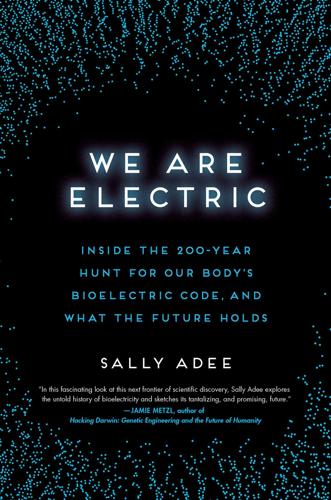
We Are Electric: Inside the 200-Year Hunt for Our Body's Bioelectric Code, and What the Future Holds
by
Sally Adee
Published 27 Feb 2023
This tacit assumption that each field should “stay in their lane” has been putting limitations both on biology and scientific advancement for decades. What we need is a new framework to bring the body’s different electrical parameters under one roof and study them coherently, together. Call it the electrome. The identification of the genome and microbiome proved crucial steps to understanding the full complexity of biology, but some scientists think it’s now time to plot the outlines of the “electrome”: the electrical dimensions and properties of cells, the tissues they collaborate to form, and the electrical forces that are turning out to be involved in every aspect of life.
…
Burr’s individual ideas seem to have been broadly right—but in his book published in 1974, he also tied these experiments into a bigger hypothesis. He posited that the day biology investigates forces instead of only studying particles, it will undergo a conceptual leap to rival the importance of splitting the atom for physics. But there’s a final question. What then? When we learned about the microbiome, we learned that we could improve it by eating kimchi and lots of greens. Learning about the electrome isn’t going to yield similar self-help just yet. Hacking our memories or overclocking ourselves into infinite productivity is still quite a way off, and I hope my book has explained sufficiently why that’s the case.
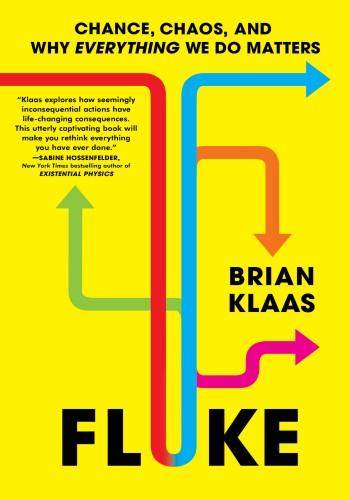
Fluke: Chance, Chaos, and Why Everything We Do Matters
by
Brian Klaas
Published 23 Jan 2024
The best estimates suggest we have roughly 1.3 bacterial cells inside us for every human cell. As the biologist Merlin Sheldrake put it, “There are more bacteria in your gut than stars in our galaxy.” Fresh evidence is emerging that viruses affect our biological clocks, parasites alter our thoughts, and our microbiome can cause mood disorders.I Scientifically, we have never been singular, though that has been impossible to know until quite recently. The individualist mindset, of independent, authoritative control over a tamable world, makes less sense if we know that our thoughts are partly influenced by the tiny, invisible organisms that live within us.
…
D., 73 Jansen, Clara Magdalen, 7–9 Jarrett, Keith, 62 jazz, improvisation in, 253 jewel beetles, 78 Jobs, Steve, 164 Jordan, Gabriele, 69 Kafka, Franz, 140 Kantu people (Borneo), randomized farming process of, 257–58 Karikó, Katalin, 261 Kay, John, 118, 120 Keats, John, 262 Kimura, Motoo, 16–17, 18, 61 King, Martin Luther, Jr., 21 King, Mervyn, 114, 118, 120 Klaas, Paul F., 7, 8 kludges (“good enough” solutions), 60–61 Knight, Frank, 113 Kokura (Japan), spared from atomic bombing, 3–4, 7, 10–11 “Kokura’s luck,” 4, 5, 184 weather forecasting and, 24 Krakauer, David, 213 Kuhn, Thomas, 172–73 Kyoto, spared from atomic bombing, 1–3, 4, 7, 124 Langer, Susanne, 77 Laplace, Pierre-Simon, 22–24, 107 Laplace’s demon, 23–24, 25, 26, 107, 227 Leibniz, Gottfried Wilhelm, 174 leisure-time invention, 262 Lenski, Richard, 51–55 Lévy walks, 260 Lewis, Michael, 259 Lightman, Alan, 253 Lincoln, Abraham, 69, 139, 166, 168, 171, 179, 214 Lisbon earthquake (1755), 77 local versus global maximum, 256, 259 lock-in events, 190–92, 203, 216 locust swarms, 81–84, 87, 91, 97 London Underground/Tube strike (2014), 61–62 Long-Term Evolution Experiment (LTEE), 52–53, 56 Lorenz, Edward Norton, 24–26, 123, 178 Losos, Jonathan, 50 Lott, Joseph, 181–83, 184, 188, 250 lotteries, 45 lottery of earth, 148, 153, 156, 158, 189 luck, 42, 43–44 Luther, Martin, 95 machine learning, 100, 108, 217 Madagascar, 40–42, 132–33 magnitude bias, 76 mammals: rise of, 58 vision of, 68–69 Manhattan Project, 3 many-worlds interpretation, 111, 229 Mao Zedong, 97, 252 Margulis, Lynn, 39–40n marine creatures, random motions of, 260 market analysis, 75–76 marmokrebs (marbled crayfish), 40–42, 45 Marx, Karl, 77, 164 Mastroianni, Adam, 210 mathematics, 17, 22–23, 24, 88 multiarmed bandit problem, 256 pervasiveness of mathematical relationships, 212 probability theory as branch of, 108 “mathiness,” 213 McCartney, Paul, 62 McNamara fallacy, 212n Melody (red heifer in Israel), 129–31, 135, 141 Méré, Chevalier de, 107 Merina people, of Madagascar, 133 meritocracy, 43, 44 Metamorphosis (Kafka), 140 meteorology, 24, 178 microbiome, 35 Middle East, dictatorships in, 206–7 Milo, Daniel S., 60 Misérables, Les (Hugo), 96 mistakes, 44, 51 Mitchell, Corporal Barton W., 167–69 Mitchell, Edgar, 29 mitochondrion, 39–40 Miyako Hotel (Kyoto, Japan), 1, 3 Moken people, of Andaman Islands, 137–38 Moneyball (Lewis), 259 Montesquieu, 151 Monty Python and the Holy Grail (film), 85 Morris, Damien, 45 MS-DOS operating system, 66 Mubarak, Hosni, 206 Muir, John, 264 multiarmed bandit problem, 256 multiple discovery, 172 multiple worlds/universes, 51–57 Murray, John, 176 music, experimental invention of, 62 mutations, genetic, 15, 17, 232, 257 as copying mistakes in DNA, 53 marmokrebs and, 41 multiple, 55 randomness of, 48–49 timing of, 184 myths, 11, 12, 30, 196 Nagasaki, atomic bombing of, 2–4, 5 Nair, Rukmini Bhaya, 136 Napoléon I, 163, 164 narrative bias, 136, 140 narrative fallacy, 44 Native American origin stories, 46 natural selection, 49, 57–58, 66–67, 176, 177.

Growth: From Microorganisms to Megacities
by
Vaclav Smil
Published 23 Sep 2019
These are prokaryotic organisms without a cell nucleus and without such specialized membrane-enclosed organelles as mitochondria. Most of them are microscopic but many species have much larger cells and some can form astonishingly large assemblages. Depending on the species involved and on the setting, the rapid growth of single-celled organisms may be highly desirable (a healthy human microbiome is as essential for our survival as any key body organ) or lethal. Risks arise from such diverse phenomena as the eruptions and diffusion of pathogens—be they infectious diseases affecting humans or animals, or viral, bacterial and fungal infestations of plants—or from runaway growth of marine algae.
…
Perhaps most intriguingly, Beard and Blaser (2002) have suggested that the human microbial environment played a substantial role in determining the increase of average human height during the 20th century. Its change has included both exogenous and indigenous biota (now the much-researched human microbiome), and particularly microbial transmission of Helicobacter pylori in childhood. The recent slowdown of this secular increase (especially among better-off population groups) indicates that we have become increasingly specific pathogen-free. We do not have as much historical information on changing body weights as we do on growth in height.
…
In terms of macroscopic components, complex machines are easily as “species-rich” as complex ecosystems: the average Toyota car has 30,000 parts, Boeing 737 (the smallest plane of the 700 series) has about 400,000 parts (excluding wiring, bolts, and rivets), the new Boeing 787 has 2.3 million, and Boeing 747–8 has 6 million parts (Boeing 2013). Of course, the functioning of living systems (be they rain forests or human bodies) depends on assemblages of microbial species (microbiomes), and the numbers of bacteria, archaea, and microscopic fungi in a unit mass of forest will be vastly larger than the total of the smallest functional components in a unit mass of even the most complicated machine. And, obviously, there can be no true comparison between biomass, the mass of living (and, in wood, dead) cells that form the bodies of organisms, and the mass of metals, composite materials, plastics, and glass that form the bodies of complex machines.

This Will Make You Smarter: 150 New Scientific Concepts to Improve Your Thinking
by
John Brockman
Published 14 Feb 2012
That means that most of the planet’s living metabolism is microbial. When James Lovelock was trying to figure out where the gases come from that make the Earth’s atmosphere such an artifact of life (the Gaia hypothesis), it was microbiologist Lynn Margulis who had the answer for him. Microbes run our atmosphere. They also run much of our body. The human microbiome in our gut, mouth, skin, and elsewhere, harbors three thousand kinds of bacteria with 3 million distinct genes. (Our own cells struggle by on only eighteen thousand genes or so.) New research is showing that our microbes-on-board drive our immune systems and important parts of our digestion. Microbial evolution, which has been going on for more than 3.6 billion years, is profoundly different from what we think of as standard Darwinian evolution, where genes have to pass down generations to work slowly through the selection filter.
…
The map of the human genome and of the diploid genomes of individuals; the map of our geographic spread; the map of the Neanderthal genome—these are new tools to address the age-old issues of human unity and diversity. Reading the life code of DNA does not stop there; it places humans in the vast and colorful mosaic of earthly life. “Otherness” is seen in a new light. Our microbiomes—the trillions of microbes on and in each of us, and essential to our physiology, become part of our selves. Astronomy and space science are intensifying the search for life on other planets—from Mars and the outer reaches of the solar system to Earth-like planets and super-Earths orbiting other stars.
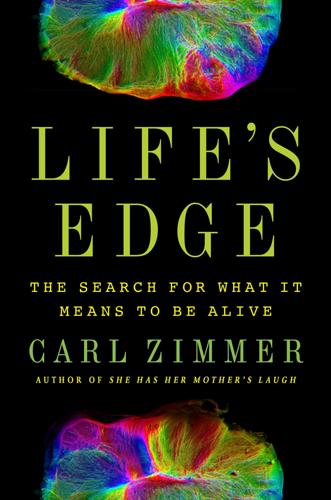
Life's Edge: The Search for What It Means to Be Alive
by
Carl Zimmer
Published 9 Mar 2021
They rival predators in their slaughter, whether they are killing off a coral reef or wiping out Pseudomonas in a lung. Viruses also have peaceful relationships with many of their hosts. Our healthy bodies are home to trillions of viruses collectively known as a virome. Most of them infect the trillions of bacteria, fungi, and other single-celled members of our microbiome. Some studies suggest that the human virome keeps our microbiome in balance, contributing to our own well-being. The earth has a virome of its own, one that acts as a geochemical force. Each time you blink an eye, 10 billion trillion phages in the ocean infect marine bacteria. Many of them kill their microbial hosts, dumping about three gigatons of organic carbon into the water every year, stimulating the growth of new life.
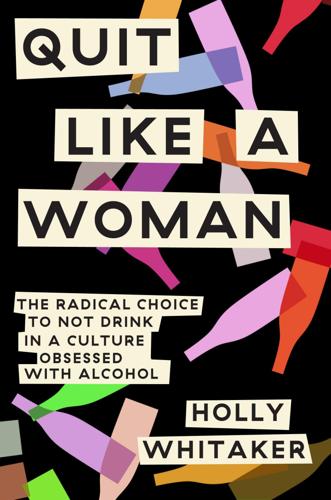
Quit Like a Woman: The Radical Choice to Not Drink in a Culture Obsessed With Alcohol
by
Holly Glenn Whitaker
Published 9 Jan 2020
Alcohol also depletes us of zinc and vitamin A, two antioxidants vital for the skin and regeneration of new cells. All told, between these things and every other item previously mentioned, there’s no way in hell alcohol is keeping you looking or feeling younger. If anything, the consumption of alcohol undermines every single thing you’re doing to preserve your youth. 11. Destroys microbiome. Your gut is home to trillions of bacteria that help you digest and absorb nutrients from your food, regulate your immune system, and even determine how happy you are. You need a rich and diverse array of bacteria to populate a healthy gut. Alcohol causes dysbiosis, a skewed ratio of good and bad bacteria, because it kills good gut bacteria, allowing the bad kind to flourish.
…
Mind Body Green, n.d., https://www.mindbodygreen.com/articles/is-drinking-alcohol-bad-for-hormone-balance. 34breast cancer alone: “Alcohol and Cancer Risk,” NIH National Cancer Institute, n.d., https://www.cancer.gov/about-cancer/causes-prevention/risk/alcohol/alcohol-fact-sheet; IARC Monographs on the Identification of Carcinogenic Hazards to Humans, World Health Organization International Agency for Research on Cancer Monograph 96 (2018): 418–86, https://monographs.iarc.fr/wp-content/uploads/2018/06/mono96-6B-06.pdf. 35risk of breast cancer: “Drinking Alcohol,” Breastcancer. org, https://www.breastcancer.org/risk/factors/alcohol. 35mouth and throat, esophagus: Peter Russell, “Drinking Alcohol Linked to 7 Types of Cancer,” WebMD, July 22, 2016, https://www.webmd.com/cancer/news/20160722/alcohol-seven-types-cancer#1. 35Causes premature aging: Jodi Sawyer, “How Fast Can Alcohol Age You?” DoctorOz.com, n.d., https://www.doctoroz.com/blog/jodi-sawyer-rn/how-fast-can-alcohol-age-you. 35Destroys the microbiome: “Single Episode of Binge Drinking Linked to Gut Leakage and Immune System Effects,” National Institutes of Health, May 14, 2014, https://www.nih.gov/news-events/news-releases/single-episode-binge-drinking-linked-gut-leakage-immune-system-effects; D. Coyle, “8 Surprising Things That Harm Your Gut Bacteria,” Healthline, June 19, 2017, https://www.healthline.com/nutrition/8-things-that-harm-gut-bacteria. 37Trump Fatigue Syndrome: Lee Drutman, “How to Combat Trump Fatigue Syndrome,” Vox, May 17, 2017, https://www.vox.com/polyarchy/2017/3/7/14844120/how-to-fight-trump-fatigue-syndrome. 37“extremely anxious”: “Managing Stress Related to Political Change,” American Psychological Association, February 2017, https://www.apa.org/helpcenter/stress-political-change. 37“very or somewhat significant”: J.
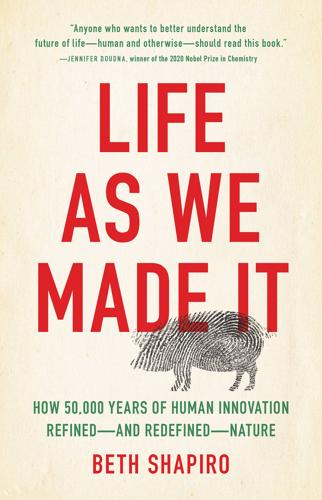
Life as We Made It: How 50,000 Years of Human Innovation Refined--And Redefined--Nature
by
Beth Shapiro
Published 15 Dec 2021
There are a ton of reasons why long-extinct species are difficult to resurrect, ranging from technical hurdles that need to be overcome to ethical concerns about manipulating species to ecological challenges associated with releasing de-extinct species into a habitat from which they have been absent for perhaps tens of thousands of years. While some technical obstacles, like how to edit the germ line in birds or how to transfer a developing elephant embryo to a captive mom, might be overcome, others, like how to reinvent the gut microbiome of an extinct woolly rhinoceros or how to find a surrogate mom for a Steller’s sea cow, are unlikely to be solved. Let’s consider mammoths. I know of three research groups currently working toward bringing mammoths back to life. Two of these, one led by Hwang Woo-suk from South Korea’s Sooam Biotech Research Foundation and another led by Akira Iritani from Kindai University in Japan, want to resurrect mammoths by cloning—the process that most famously resulted in the birth of Dolly the sheep.
…
But our twin friends are not interchangeable. Their different experiences, stresses, diets, and environments shape two entirely different people. Would that baby mammoth, exposed to an elephant’s prenatal developmental environment, raised by elephants, fed elephant foods, and hosting an elephant’s gut microbiome, act like a mammoth, or would it act like an elephant? Of course, none of this matters if the end goal is to create an elephant with a few mammoth-like traits, which perhaps is what we want to do. But if we’re looking to create a mammoth, we need to re-create everything about the mammoth’s environment from conception until death.
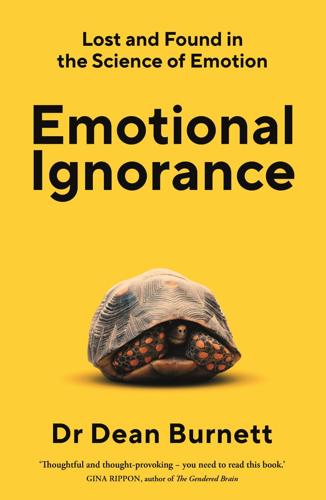
Emotional Ignorance: Lost and Found in the Science of Emotion
by
Dean Burnett
Published 10 Jan 2023
Rather than just a long wobbly tube that food passes through, the digestive system is incredibly sophisticated, with a suite of specific hormones,36 a dedicated branch of the nervous system (the enteric nervous system, which is so complex it’s often dubbed ‘the second brain’37), and trillions38 of diverse bacteria forming the gut microbiome. Seriously, the digestive system could challenge the brain for the title of ‘most influential organ’.# Given all that, it’s unsurprising that the digestive system seemingly wields considerable influence over brain function and mental health, thanks to what scientists have termed the ‘gut–brain axis’,39 something providing a new frontier in health and wellbeing research, offering new avenues for treatments for conditions such as depression.40 Far from being a meaningless cliché, it seems that science itself is ‘following your gut’.
…
absence of emotions: DB’s imagined scenario 1, 2, 3; negative consequences of 1; in science fiction 1, 2, 3, 4 acting work: actor/character relationship 1; emotional labour 1 action representation network (brain) 1 adolescence and early adulthood: brain development 1; crushes 1, 2; intense emotions 1; nightmare frequency 1, 2; safe exposure to negative emotions 1, 2; social media use 1 see also infancy and childhood affect: definition and components 1; versus basic emotions 1 airport security, facial recognition technology 1 altruism 1, 2 amygdala (brain region): and dreaming 1; and emotional regulation 1, 2; and emotions processing 1, 2, 3, 4, 5, 6, 7, 8, 9; gender differences 1; influence of testosterone 1; and memory formation 1; as part of olfactory system 1 AND model of nightmare production 1 anger: as ‘basic’ emotion 1, 2; and colour red 1, 2; DB’s anger during grief 1, 2, 3; facial expression of 1, 2; as ‘masculine’ 1(fn); and motivation 1, 2 see also negative emotions angular gyrus (brain region) 1, 2 anosmia (inability to smell) 1 anterior cingulate cortex (brain region) 1, 2, 3, 4 anterior olfactory nucleus (brain region) 1 anxiety: caused by work 1; performance anxiety 1; social anxiety 1, 2, 3; and status 1; vagus nerve stimulation treatment 1 see also negative emotions; stress apatheia (ultimate goal of Stoicism) 1 appraisal theory 1, 2 approach-attachment behaviour 1 approach versus avoid motivation 1, 2 arguments with romantic partner 1 arousal (component of affect) 1, 2, 3 asexuality 1 @AstroKatie (Katherine Mack) 1 attachment during early childhood 1, 2 see also parent emotional bond attention restoration, and colour green 1 auditory cortex (brain region) 1, 2(fn) auditory processing 1, 2, 3, 4, 5(fn) autism 1, 2 automated voices and announcements, annoyance caused by 1 avatar therapy 1 avoid versus approach motivation 1, 2 babies in the womb, playing music to 1, 2 baby-parent emotional bond 1, 2, 3 see also attachment during early childhood Bain, Alexander 1 Baron-Cohen, Simon 1 Barrett, Lisa Feldman 1, 2 basal ganglia (brain region) 1 basic emotions theory 1, 2, 3, 4 BDSM (sexual practice) 1, 2 belief perseverance 1 Bell, Charles 1, 2 bias: confirmation bias 1, 2, 3; fading affect bias 1, 2, 3; ingroup versus outgroup bias 1; negativity bias 1, 2 Blackmore, Chris 1, 2, 3 blinking, by cartoon characters 1 blood sugar, effect on emotions 1 blue colour, associations and effects 1, 2, 3 body, emotions experienced in see physiology-emotion connection body language: communicating emotion 1, 2, 3, 4; mimicry 1; missing from communication technologies 1 brain: body’s influence on 1; competing resource demands 1, 2, 3; development 1; distinguishing what is real/not real 1, 2; emotions as conscious or subconscious processes 1; gender differences (beliefs and experimental studies) 1; influence of oestrogen and testosterone 1; left brain/right brain facts and myths 1, 2, 3(fn), 4(fn); lobotomies 1; mirror neurons 1, 2, 3, 4; nervous and endocrine system regulation 1; neurotransmitters 1, 2, 3, 4, 5, 6; reward pathway and system 1, 2, 3, 4; somatic marker hypothesis 1; spindle cells 1; synapses 1, 2; triune model 1, 2 see also cognition (thinking); learning (of information); memory(ies) brain, functional regions: action representation 1; auditory processing 1, 2, 3, 4, 5(fn); cognition 1, 2, 3, 4; disgust 1; emotional regulation 1, 2; emotions (overview) 1, 2, 3; fear 1; imagination 1; intention processing 1; language processing 1; love 1, 2; lust 1, 2; memories 1, 2, 3, 4, 5; motivation 1, 2; olfactory processing 1, 2; visual processing 1, 2, 3 see also specific brain regions brain scans, limitations for studying emotions 1 brainstem 1, 2, 3, 4, 5 breastfeeding 1, 2 Broca’s area (brain) 1 Brown, Thomas 1, 2 Buddhism 1 bullying online 1 burnout 1, 2 Bushman, B.J. 1 bystander effect 1 cancer awareness, role of news and media 1 canned laughter, annoyance caused by 1, 2 categories and types of emotion: basic emotions (theory) 1, 2, 3, 4; identified by James McCosh 1 see also identifying and defining ‘emotions’ cats and other pets, emotional attachment to 1 caudate nucleus (brain region) 1 celebrity endorsements 1, 2, 3, 4 cerebellum (brain region) 1, 2, 3 childbirth, role of oxytocin 1 childhood see infancy and childhood chilli, enjoyment of pain caused by 1 cigarette smoke, DB’s memories and associations 1, 2 cognition-emotion relationship see emotion-cognition relationship cognition (thinking): brain regions associated with 1, 2, 3, 4; effect of love on 1; executive control 1, 2, 3; ‘flow’ state 1; and intrusive thoughts 1; and motivation 1, 2, 3, 4, 5; and social relationships 1, 2 see also learning (of information) cognitive dissonance 1 colours: cultural associations 1; in DB’s friend’s home 1, 2; emotional response to 1; and visual processing 1, 2, 3 communicating and sharing emotions: machine detection of emotions 1, 2; nonverbal information 1, 2, 3; online versus in-person 1, 2; at work 1, 2, 3, 4, 5 see also emotional contagion; empathy; facial expressions and emotions communication technologies see phone calls; social media and online communication; therapeutic applications of technologies; video calls confirmation bias 1, 2, 3 conformity 1, 2, 3, 4 consciousness, evolution of 1 consolidation of memories 1, 2, 3, 4 conspiracy theories 1, 2, 3, 4, 5 see also deception; misinformation and ‘fake news’ constructed emotions theory 1, 2 corpus callosum (brain region) 1 cortex/neocortex (brain region) (in general) 1 see also specific regions of the cortex cortisol 1 cross-race effect 1 crushes, in adolescence 1, 2 crying: DB’s (in)ability to cry 1, 2, 3, 4, 5, 6; gender differences 1; induced by TV and films 1; types and functions of tears 1 cuteness and cute aggression 1 cyberbullying 1 dancing 1 Darwin, Charles 1, 2 deception: automated voices and announcements 1; response to 1, 2; self-deception 1 see also manipulation of emotions; misinformation and ‘fake news’ defining ‘emotions’ 1, 2, 3, 4 deindividuation and ‘mob mentality’ 1 depression: caused by work 1, 2; gender differences 1; and gut microbiome 1; and memory 1; post-natal depression 1, 2; vagus nerve stimulation treatment 1 Diana, Princess of Wales, impact of death 1 digestive system, influence of 1, 2 disgust: as ‘basic’ emotion 1, 2; brain region associated with 1; and colour green 1; facial expression of 1, 2; and horror 1; and memory 1; and suppressed motivation 1 see also negative emotions doctors, emotional aspects of work 1 dopamine 1 drama therapy 1 dreams and nightmares: AND model 1; bizarre nature of 1, 2; DB’s bad dreams 1, 2, 3; due to COVID-19 pandemic 1, 2; and emotion processing 1; Freud’s interpretations 1; and memory consolidation 1; and mental health 1; post-traumatic 1; prevalence of nightmares 1; recurring 1; threat simulation theory 1 Dunbar’s number (of social relationships) 1 dysgranular field (brain region) 1 dysphoria 1 see also depression e-learning, motivation in 1 earworms 1 Ekman, Paul 1, 2, 3, 4 Eleri, Carys 1 embarrassment 1, 2, 3, 4, 5, 6, 7 see also negative emotions emojis and emoticons 1 emotion-cognition relationship: appraisal theory 1, 2; in attention and focus 1, 2, 3, 4; belief perseverance 1; cognitive dissonance 1; competition for brain’s resources 1, 2; confirmation bias 1, 2, 3; distinction recognised by Stoics 1; in effect of emotions experienced 1; in empathy 1; in ‘flow’ state 1; interrelatedness (in general) 1, 2, 3, 4; in learning and information processing 1, 2, 3; in love 1; motivated reasoning 1; in motivation 1, 2, 3; negativity bias 1, 2; role of imagination 1; shared evolutionary origin 1; in stage fright 1 emotion-memory relationship: appraisal theory 1, 2; emotions triggered by memories 1, 2, 3, 4; fading affect bias 1, 2, 3; happy memories being more detailed 1; for implicit memories 1; later emotions changing memories 1, 2, 3; longevity and potency of emotional memories 1, 2, 3, 4, 5, 6; in memory consolidation 1, 2; in PTSD 1, 2, 3, 4, 5; role of nightmares 1; suppressing emotional memories 1 emotional contagion: dangers of ‘mob mentality’ 1; versus empathy 1; evolutionary importance 1; from groups of people 1, 2, 3; from music 1, 2, 3; neurological mechanism for 1; from social media 1 emotional detachment/suppression at work 1, 2, 3, 4 emotional manipulation see manipulation of emotions emotional processing 1, 2 emotional regulation, brain regions responsible for 1, 2 emotional relationships: attachment during early childhood 1, 2; friendships 1, 2; one-sided see parasocial (one-sided) relationships; parent-baby emotional bond 1, 2, 3; role of neurotransmitters 1, 2; romantic see romantic relationships; see also social relationships emotions: causing change 1; as conscious/subconscious processes 1; historical study of 1; identifying and defining 1, 2, 3, 4; language of 1, 2 see also categories and types of emotion; communicating and sharing emotions; emotion relationship; emotion relationship; negative emotions; physiology connection; positive emotions; specific emotions empathy: and autism 1, 2; in babies 1; and body language mimicry 1; versus emotional contagion 1; evolutionary importance 1, 2, 3; influence of own emotions on 1; as ingrained 1, 2; ingroup versus outgroup bias 1; versus mentalising (theory of mind) 1; neurological mechanism for 1, 2, 3, 4; and physical pain 1; in romantic relationships 1; as selfish/unselfish 1 endocannabinoids 1 endocrine system 1 endorphins 1, 2 envy 1, 2 see also negative emotions episodic memories 1, 2, 3 evaluative conditioning 1 excitation transfer theory 1 executive control 1, 2, 3 see also cognition (thinking) existential dread, as a motivator 1 explicit memories 1 extrinsic versus intrinsic motivation 1 Facebook: DB’s use of 1, 2; research into emotional manipulation 1, 2, 3 see also social media and online communication faces, seeing in inanimate objects 1 facial colour changes 1 facial expressions and emotions: in artificial/CGI faces (uncanny valley) 1; automated emotion recognition 1; in cartoon characters (blinking) 1; cross-cultural similarities and differences 1, 2; difficulties distinguishing between emotions without context 1, 2, 3; early writings on 1; Ekman’s work 1, 2, 3, 4; ‘invisible’ emotions 1; involuntary nature of expressions 1, 2, 3, 4; online curation of emotions portrayed 1 facial paralysis, and empathy 1 facial recognition, cross-race effect 1 facial recognition technology 1 fading affect bias 1, 2, 3 ‘fake news’ see misinformation and ‘fake news’ fandom 1, 2 see also parasocial (one relationships fear: as ‘basic’ emotion 1, 2; brain region associated with 1; enjoyment of 1, 2; facial expression and colour 1, 2; as first emotion 1; of flying 1; and horror 1; and imagination 1; and motivation 1, 2, 3; in PTSD 1; smell of (in sweat) 1 see also negative emotions films and TV causing negative emotions 1, 2, 3, 4 Firth-Godbehere, Richard 1, 2, 3, 4, 5 flat Earth conspiracy theory 1, 2 ‘flow’ state 1 flying, fear of 1 football shirts, red colour’s competitive advantage 1 Freud, Sigmund 1, 2 friendships 1, 2 see also emotional relationships; social relationships frosty atmospheres, emotional contagion 1, 2 funerals: crying at 1; of DB’s father 1, 2, 3, 4, 5; emotional contagion at 1, 2; live streaming 1, 2 gender differences: adolescent crushes 1(fn); attitudes towards infidelity 1; in brains (beliefs and experimental studies) 1; in brains (DB’s impossible experiment) 1; in emotional regulation and expression 1, 2, 3, 4, 5, 6; ‘maternal instinct’ 1; mental health problems 1; other physiological differences 1; societal influences 1 gender discrimination 1, 2, 3 goal distraction 1 green colour, associations and effects 1, 2, 3 grief: DB’s acceptance of emotions 1; DB’s anger 1, 2, 3; DB’s attempts to disguise grief 1; DB’s emotional confusion 1, 2, 3; DB’s (in)ability to cry 1, 2, 3, 4, 5, 6; DB’s motivation and productivity 1, 2; DB’s need to talk after funeral 1; at death of Princess Diana 1; emotional processing 1, 2; shared grieving 1; stages of 1 see also negative emotions guilt 1 see also negative emotions habituation 1, 2 ‘hangry’ behaviour 1 happiness 1 hippocampus (brain region): and dreaming 1; and emotional regulation 1; and emotions processing 1, 2, 3; and imagination 1; and memory 1, 2, 3, 4, 5; and navigation 1 Holmes and Rahe stress scale 1, 2 Holmes, Sherlock (analogy for action representation) 1 hormones: cortisol 1; digestive 1, 2; effect of tears on 1; influence on the brain (and emotions) 1; oestrogen 1, 2; oxytocin 1, 2, 3, 4, 5, 6; testosterone 1, 2, 3; vasopressin 1, 2, 3 see also endocrine system horror (emotion) 1 horror movies 1, 2, 3 hypothalamus (brain region) 1, 2, 3 hysteria 1 Icke, David 1 identification, in parasocial relationships 1 identifying and defining ‘emotions’ 1, 2, 3, 4 imaginary friends 1 imagination and mental imagery 1, 2 imitation of observed actions 1 implicit memories 1 impression management 1, 2, 3, 4, 5 infancy and childhood: attachment with primary caregiver 1, 2; breastfeeding 1, 2; DB’s memories of 1, 2; emotional experiences 1; empathy in babies 1; imaginary friends 1; importance of sense of smell 1; learning from media characters 1; nightmare frequency 1, 2; oxytocin in newborns 1; parent-baby emotional bond 1, 2, 3 see also adolescence and early adulthood inferior frontal cortex (brain region) 1, 2 inferior parietal cortex (brain region) 1 infidelity, emotional versus sexual 1 insular cortex (insula) (brain region) 1, 2, 3, 4 intelligence, and brain anatomy 1 intention processing 1 intrinsic versus extrinsic motivation 1 intrusive thoughts 1 Izard, Carroll E. 1 jealousy 1 Kübler-Ross, Elizabeth 1 language of emotions 1, 2 language processing 1 learning (of information): from media characters 1; motivation 1, 2; from other people 1, 2; processing demands and information prioritisation 1, 2; from senses 1 LeDoux, Joseph 1 left brain/right brain facts and myths 1, 2, 3(fn), 4(fn) limbic system (brain region) 1, 2, 3, 4 lobotomies 1 Lomas, Tim 1 London taxi drivers, brain study 1 losing oneself in a book/film 1 love: brain regions associated with 1, 2; demands on the brain 1; effect on cognition 1; for family and friends 1, 2(fn); role of dopamine 1; romantic love 1, 2, 3 see also romantic relationships lust and sexual attraction: asexuality 1; brain regions associated with 1, 2; and romantic relationships 1, 2; Stoics’ rejection of 1, 2; suppression of 1 Mack, Katherine (@AstroKatie) 1 mammal brain (region) 1, 2, 3, 4 manipulation of emotions: by authorities 1; for marketing 1, 2, 3, 4, 5; response to 1; by social media 1; by traditional news and media 1, 2, 3, 4 marketing 1, 2, 3, 4, 5 McCosh, James 1 medical work, emotional aspects 1 memory(ies): brain regions associated with 1, 2, 3, 4, 5; changeable nature of 1, 2, 3, 4, 5, 6, 7; connections with objects 1, 2, 3, 4; consolidation 1, 2, 3, 4; DB’s memories of early childhood 1, 2; DB’s memories of his father 1, 2, 3, 4, 5, 6; episodic memories 1, 2, 3; explicit memories 1; fading affect bias 1, 2, 3; forgetting memories 1; and imagination 1; implicit memories 1; and music 1; procedural memories 1; reminiscence bump 1; retroactive memory enhancement 1; semantic memories 1; and sleep 1; and smell(s) 1, 2, 3, 4; suppression of 1; as synapses 1, 2; working memory 1; Zeigarnik effect 1 see also emotion relationship mental health/illness: and social media 1; and status 1; therapeutic applications of technologies 1 see also anxiety; depression; PTSD; schizophrenia mental imagery and imagination 1, 2 mentalising (theory of mind) 1, 2 mirror neurons 1, 2, 3, 4 mirroring body language 1 misinformation and ‘fake news’: about COVID-19 pandemic 1, 2; David Icke’s space lizards 1; flat Earth theory 1, 2; and social media/internet 1, 2, 3, 4; susceptibility to 1 see also deception ‘mob mentality’ (deindividuation) 1 Moebius syndrome (facial paralysis) 1 monkey experiments, mirror neurons 1 Morgan, Matt 1 motivated reasoning 1 motivation: approach-attachment behaviour 1; approach versus avoid motivation 1, 2; brain regions associated with 1, 2; and cognition 1, 2, 3, 4, 5; DB’s experiences during grief 1, 2; and emotions 1, 2, 3, 4, 5, 6; intrinsic versus extrinsic motivation 1; and novelty 1, 2, 3, 4 motivational salience 1 music: dancing 1; DB’s emotional response to 1, 2, 3, 4; differentiating between voice and instruments 1; earworms 1; emotional contagion from 1, 2, 3; emotional response to 1, 2; evolutionary significance 1, 2; and memory 1 musical expectancy 1, 2 navigation, role of hippocampus 1 negative emotions: and attention/focus 1, 2, 3, 4, 5; and creativity 1; emotion processing 1, 2; feeling good whilst experiencing 1, 2, 3; induced by TV and films 1, 2, 3, 4; and intrusive thoughts 1; and memory 1, 2, 3; as more impactful than positive emotions 1; negativity bias 1, 2; and novelty 1; and performance 1 see also specific emotions negativity bias 1, 2 nervous systems: enteric (‘second brain’) 1; parasympathetic 1, 2, 3; regulation by brain 1; somatic and autonomic 1; sympathetic 1, 2, 3 neurotransmitters 1, 2, 3, 4, 5, 6 news and media (traditional): credibility 1, 2, 3, 4; emotional content 1, 2, 3, 4; precursors to 1 see also conspiracy theories; misinformation and ‘fake news’; social media and online communication nightmares see dreams and nightmares noises, emotional response to 1, 2, 3 see also music novelty 1, 2, 3, 4, 5 objects, and memories 1, 2, 3, 4 oestrogen 1, 2 olfactory bulb and cortex (brain region) 1, 2, 3 olfactory system 1, 2, 3, 4 one-sided relationships see parasocial (one-sided) relationships online communication see social media and online communication online learning, motivation in 1 orbitofrontal cortex (brain region) 1, 2 oxytocin 1, 2, 3, 4, 5, 6 pain (physical): and empathy 1; enjoyment of 1, 2 paracingulate sulcus (brain region) 1 parasocial (one-sided) relationships: adolescent crushes 1, 2; benefits 1, 2; ending the relationship 1; with fictional characters 1, 2, 3, 4; identification with the object 1; with imaginary friends 1; losing oneself in a narrative 1; meeting the object 1; negative aspects 1; neurological mechanisms 1; with people you haven’t met 1, 2, 3, 4, 5 parasympathetic nervous system 1, 2, 3 Parch (TV drama), actor’s experiences 1 pareidolia 1 parent-baby emotional bond 1, 2, 3 see also attachment during early childhood ‘passions’ 1, 2, 3 pathos 1 performance anxiety (stage fright) 1 personality, influence of early experiences 1, 2 phone calls: DB’s last call to father 1; lack of nonverbal emotional cues 1; walking around during 1 physiology-emotion connection: body influencing emotion 1; emotion influencing the body 1; somatic marker hypothesis 1 see also crying Pickle (DB’s cat) 1 Pixar movies 1, 2(fn), 3 positive emotions: and attention/focus 1, 2; and memory 1, 2 see also specific emotions ‘Positive Lexicography’ project 1 post-natal depression 1, 2 posterior parietal cortex (brain region) 1, 2 prefrontal cortex (brain region): cognitive functions 1, 2, 3; and emotional regulation 1, 2; and emotions processing 1, 2; and imagination 1; influence of testosterone 1; and memory 1; and mentalising (theory of mind) 1; and motivation 1, 2 pride 1 procedural memories 1 processing (negative) emotions 1, 2 Proust, Marcel, In Search of Lost Time 1 psycho-emotional tears 1, 2 PTSD (post-traumatic stress disorder) 1, 2, 3, 4, 5 racism: cross-race effect 1; and oxytocin 1 rage see anger red colour, associations and effects 1, 2, 3 relationships see emotional relationships religious perspectives on emotions 1 reminiscence bump 1 reptile brain (region) 1 ‘resting bitch face’ 1 retroactive memory enhancement 1 reward, and motivation 1 reward pathways of brain 1, 2, 3, 4 Ridley, Rosalind 1 Rippon, Gina 1, 2, 3 romantic relationships: adolescent crushes as preparation for 1; attitudes towards infidelity 1; disagreements and disputes 1; emotional connection between partners 1, 2; empathy versus problem ‘fixing’ in 1; long-term relationships 1, 2; love in 1, 2, 3; negative emotions in 1; online versus in-person 1; and own identity 1, 2; physical attraction in 1, 2; role of oxytocin 1; stress associated with losing partner 1, 2; trumpeting on social media 1 see also emotional relationships sadness: as ‘basic’ emotion 1; and colour blue 1, 2; enjoyment of 1, 2, 3; facial expression of 1 schadenfreude 1, 2 schizophrenia 1 scientific method 1, 2 scientists: motivations 1, 2, 3; popular portrayal as lacking emotion 1 self-deception 1 semantic memories 1 Sesame Street (TV) show, learning from 1 sex differences see gender differences sexism see gender discrimination sexual activity, BDSM 1, 2 sexual attraction see lust and sexual attraction sharing emotions see communicating and sharing emotions Simpsons, The (TV show), blinking in 1(fn) Singer, Tania 1 sleep 1, 2, 3 see also dreams and nightmares smell(s): anosmia (inability to smell) 1; DB’s memories of cigarette smoke 1, 2; and emotions 1, 2; evolutionary importance 1, 2, 3; and memory 1, 2, 3, 4; olfactory system 1, 2, 3, 4 social anxiety 1, 2, 3 social media and online communication: adolescents 1; adults/older people 1; emojis and emoticons 1; and emotional contagion 1; impression management 1, 2, 3, 4, 5; lack of nonverbal emotional cues 1, 2; live streaming funerals 1, 2; machine detection of emotions 1; negative aspects 1, 2, 3, 4, 5; online versus in-person emotions and personae 1; positive aspects 1, 2; versus real-world interactions, cognitive demands 1; and reward 1, 2, 3; and self-deception 1; and self-validation 1, 2, 3; and status 1, 2 see also conspiracy theories; Facebook; misinformation and ‘fake news’; news and media (traditional); video calls social relationships: cognitive load associated with 1, 2; Dunbar’s number 1; friendships 1, 2; one-sided see parasocial (one-sided) relationships; see also emotional relationships somatic marker hypothesis 1 spicy food, enjoyment of pain caused by 1 spindle cells 1 Spiner, Brent 1 sports kit, competitive advantage of wearing red 1 SPOT (Screening of Passengers by Observation Techniques) programme 1 stage fright 1 stalkers 1 Star Trek: The Next Generation (TV series): Data actor’s experience of fans 1; Data’s inability to choose ice-cream flavour 1 Star Trek (TV series): Stoicism of Vulcans 1, 2; universal use of English language 1 Starbucks (branding) 1 status: and emotions 1; and social media 1, 2; subjective status and mental health 1 Stoics and Stoicism 1, 2 stress: benefits of green environments for 1; caused by uncertainty 1; caused by work 1, 2; coping mechanisms 1; cortisol 1; Holmes and Rahe stress scale 1, 2; PTSD 1, 2, 3, 4, 5; and status 1; Yerkes-Dodson curve 1 see also anxiety; negative emotions striatum (brain region) 1 study of emotions (historical) 1 suicide 1, 2 superior temporal cortex (brain region) 1, 2, 3, 4 suppression of emotions: during disagreements with romantic partner 1; in learning and decision making (as impossible) 1; at work 1, 2, 3, 4 supramarginal gyrus (brain region) 1 surprise 1, 2 sympathetic nervous system 1, 2, 3 synapses (neuron connections) 1, 2 taxi drivers, brain study 1 tears, types and functions of 1 teenage years see adolescence and early adulthood temporal lobe (brain region) 1, 2 testosterone 1, 2, 3 thalamus (brain region) 1, 2, 3 theories of emotions see basic emotions theory; constructed emotions theory theory of mind (mentalising) 1, 2 thinking see cognition (thinking) threat simulation theory 1 transportation phenomenon 1 triune brain model 1, 2 TV and films causing negative emotions 1, 2, 3, 4 types of emotion see categories and types of emotion uncanny valley 1 uncertainty, unpleasant nature of 1 vagus nerve 1 valence (component of affect) 1, 2 vasopressin 1, 2, 3 video calls: DB’s call with friends after father’s funeral 1; lack of nonverbal emotional cues 1 virtual reality (VR) 1 visual cortex (brain region) 1, 2 visual processing 1, 2, 3, 4, 5, 6 see also colours voice characteristics, and communicating emotion 1 volcano/cupcake scenario (competing motivations) 1 wine tasting and appreciation 1 work and workplaces: communicating the wrong emotions at work 1; DB’s job embalming cadavers 1, 2, 3(fn); emotional aspects of medical work 1; emotional detachment/suppression 1, 2, 3, 4; emotional labour of acting work 1; mental health problems caused by 1, 2, 3, 4, 5, 6; performance appraisals 1, 2; wellbeing initiatives 1, 2 working memory 1 yawning, as contagious 1 Yerkes-Dodson curve 1 Zeigarnik effect (tendency to forget completed tasks) 1 ‘zone,’ state of being in 1 Zoom calls see video calls About the Author Dean Burnett is a neuroscientist, blogger, sometimes-comedian and author.
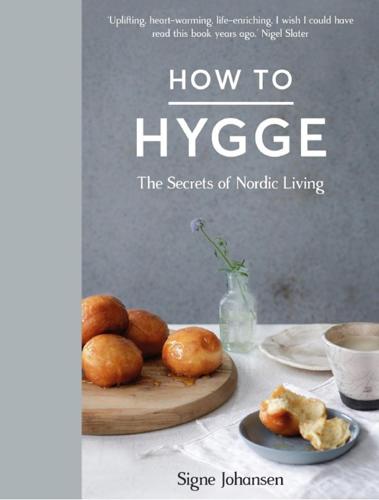
How to Hygge: The Secrets of Nordic Living
by
Signe Johansen
Published 19 Oct 2016
You might be thinking, ‘But a little bit of dirt is good for you!’ Yes, getting your hands dirty when potting plants is good for you, as is the daily exposure we have to other human beings—there are lots of useful ways to boost your immune system. I’m well versed in the literature on good bacteria and the science of the human microbiome, but if you want to have an authentically Nordic home of hygge then the mantra ‘cleanliness is next to godliness’ really is essential, and that means floors which can be properly cleaned with soap and water. ‘But I love the feel of carpet on my feet’ is another answer I get when I raise the issue of how much we loathe carpets.
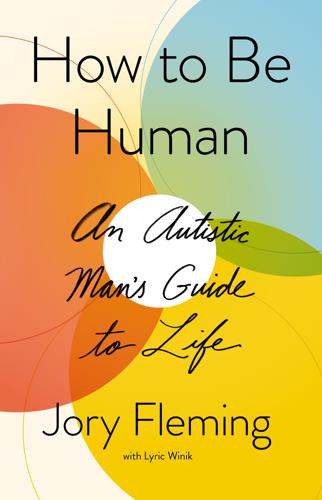
How to Be Human: An Autistic Man's Guide to Life
by
Jory Fleming
Published 19 Apr 2021
(Interestingly, numerous medical researchers are now focused on the relationship between bacteria in the human gut, digestive issues, and autism, including the direct link between the intestinal system and the brain via the vagus nerve. This nerve transmits signals between the gut and the brain stem at the nearly supersonic rate of 100 milliseconds—far less time than it takes us to swallow or take a breath. In fact, medical science is finding possible new links between the gut microbiome and other diseases, such as Parkinson’s, as well as an array of mental health issues and additional brain anomalies.) Perhaps, then, it will come as no surprise that Jory opts to explain himself by beginning with the concept of a neurotypical versus an autistic “menu”: Jory Fleming on Jory Fleming: JORY: I don’t exactly introduce myself as “Hi, I’m autistic Jory.

Blockchain: Blueprint for a New Economy
by
Melanie Swan
Published 22 Jan 2014
Blockchain technology, in the form of a universal model for record keeping and data storage and access (a secure, decentralized, pseudonymous file structure for data stored and accessed in the cloud) could be the technology that is needed to move into the next phase of industrialized genomic sequencing. This applies to genomic sequencing generally as an endeavor, irrespective of the personal data rights access issue. Sequencing all humans is just one dimension of sequencing demand; there is also the sequencing of all plants, animals, crops, viruses, bacteria, disease-strain pathogens, microbiomes, cancer genomes, proteomes, and so on, to name a few use cases. There is a scale production and efficiency argument for blockchain-based transnational genomic services. To move to large-scale sequencing as a “universal human society,” the scope and scale of sequencing and corresponding information processing workloads suggests not just transnationality, but more important, heavy integration with the cloud (genomic data is too big for current forms of local storage and manipulation), and the blockchain delivers both transnationality and the cloud.
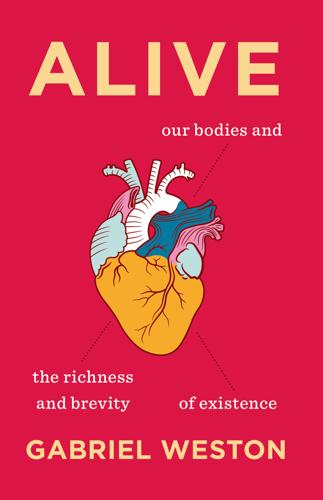
Alive
by
Gabriel Weston
Published 15 Aug 2025
In the second month, nerve endings begin to develop, followed by the first tufting of hair and nails. Pigmentation gets going at around four months, and sweat glands a few weeks after that. Even after birth, a baby’s skin is like gossamer: it contains little water, the network of blood vessels is rudimentary, and the concentration of melanin low. With an immature microbiome and a less acidic pH than that of an adult, baby skin is particularly susceptible to infection. With so little of its armamentarium up and running, what is there to insulate a baby’s tender skin from the harshness of the outside world? The answer is human touch. Science plainly shows the benefit to newborn infants of early skin-to-skin contact, sometimes known as kangaroo mother care.

Daring to Rest
by
Karen Brody
Clean Out Your Gut Many people with lots of mental body impurities and imbalances experience constipation, diarrhea, or general stomach upset. They also tend to have weight issues, sleep disorders, and self-worth issues. Many studies are suggesting that gut microbes are related to mood, sleep, and weight and that improving your microbiome will help issues in these areas.3 Each person’s situation is unique, but addressing this critical area of gut health is often part of the solution to these problems. If you’ve ever considered doing a gut cleanse, days 16 through 20 would be a wonderful time for one, including enemas and colonics.
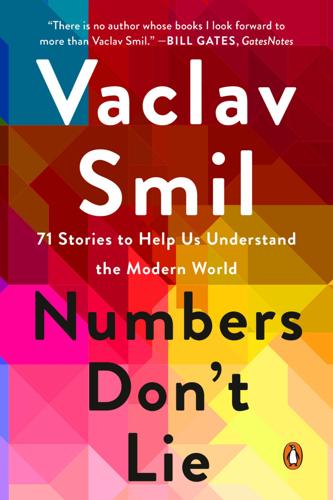
Numbers Don't Lie: 71 Stories to Help Us Understand the Modern World
by
Vaclav Smil
Published 4 May 2021
Today’s miniature drones weigh as little as 5 grams, versus a fully loaded Airbus 380 which weighs 570 tons—a difference of eight orders of magnitude. And our designs have a key functional advantage: they can work and survive pretty much on their own, unlike our bodies (and those of all animals), which depend on a well-functioning microbiome—there are at least as many bacterial cells in our guts as there are cells in our organs. That’s life for you. Planet of the cows For years I have tried to imagine how Earth would appear to a comprehensive and discerning probe dispatched by wonderfully sapient extraterrestrials. Of course, the probe would immediately conclude, after counting all organisms, that most individuals are either microscopic (bacteria, archaea, protists, fungi, algae) or very small (insects), but also that their aggregate weight dominates the planetary biomass.

WTF?: What's the Future and Why It's Up to Us
by
Tim O'Reilly
Published 9 Oct 2017
When we imagine an artificial intelligence, we assume it will have an individual self, an individual consciousness, just like us. What if, instead, an AI was more like a multicellular organism, an evolution beyond our single-celled selves? What’s more, what if we were not even the cells of such an organism, but its microbiome, the vast ecology of microorganisms that inhabits our bodies? This notion is at best a metaphor, but I believe it is a useful one. As the Internet speeds up the connection between human minds, as our collective knowledge, memory, and sensations are shared and stored in digital form, we are weaving a new kind of technology-mediated superorganism, a global brain consisting of all connected humans.
…
The fact that the intelligence of these systems is interdependent with the intelligence of the community of humans that makes it up is an echo of the way that we ourselves function. Each of us is a vast nation of trillions of differentiated cells, only some of which share our own DNA, while far more are immigrants, the vast microbiome of microorganisms that colonize our guts, our skin, our circulatory systems. There are far more microorganisms in our bodies than there are human cells, not invaders but a functioning part of the whole. Without the microorganisms we host, we could not digest our food or turn it into useful energy.

The Code Breaker: Jennifer Doudna, Gene Editing, and the Future of the Human Race
by
Walter Isaacson
Published 9 Mar 2021
But he was not cut out for a hierarchical organization, so he quit to pursue the freedom of being a biohacker. Before getting into CRISPR, Zayner tried a variety of synthetic biology experiments, including on himself. To treat his gastrointestinal problems, he performed a fecal transplant (don’t ask) to transform his gut’s microbiome. He did the procedure in a hotel room with two filmmakers documenting the scene, and (in case you really do want to know how it works) it became a short documentary called Gut Hack that can be found online.2 Zayner now runs from his garage an online biohacking supply store, The ODIN, which creates and sells “kits and tools that allow anyone to make unique and usable organisms at home or in a lab.”
…
Home testing kits could become the platform, operating system, and form factor that will allow us to weave the wonders of molecular biology more into our daily lives. Developers and entrepreneurs may someday be able to use CRISPR-based home testing kits as platforms on which to build a variety of biomedical apps: virus detection, disease diagnosis, cancer screening, nutritional analyses, microbiome assessments, and genetic tests. “We can get people in their homes to check if they have the flu or just a cold,” says Zhang. “If their kids have a sore throat, they can determine if it’s strep throat.” In the process, it might give us all a deeper appreciation for how molecular biology works. The inner workings of molecules may remain, for most people, as mysterious as those of microchips, but at least all of us will be a bit more aware of the beauty and power of both.
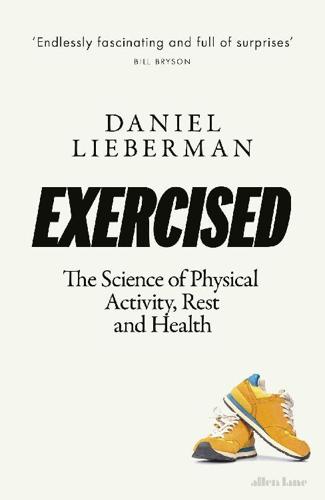
Exercised: The Science of Physical Activity, Rest and Health
by
Daniel Lieberman
Published 2 Sep 2020
A lovely book filled with beautiful photographs is Peterson, D., Baalow, R., and Cox, J. (2013), Hadzabe: By the Light of a Million Fires (Dar es Salaam, Tanzania: Mkuki na Nyota). 12 Schnorr, S. L., et al. (2014), Gut microbiome of the Hadza hunter-gatherers, Nature Communications 5:3654; Rampelli, S., et al. (2015), Metagenome sequencing of the Hadza hunter-gatherer gut microbiota, Current Biology 25:1682–93; Turroni, S., et al. (2016), Fecal metabolome of the Hadza hunter-gatherers: A host-microbiome integrative view, Scientific Reports 6:32826. 13 Lake Eyasi is a seasonal salt lake that dries up during the long, hot dry season. A few farmers of the Iraqw tribe live near the top of the lake, and the other denizens of the area are the Datoga, who primarily survive by herding goats and cows.
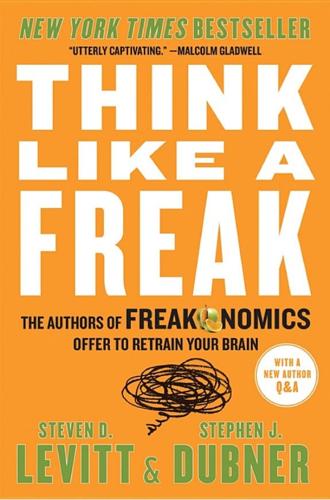
Think Like a Freak
by
Steven D. Levitt
and
Stephen J. Dubner
Published 11 May 2014
Brandt, “Fecal Microbiota Transplantation: Past, Present and Future,” Current Opinion in Gastroenterology 29, no. 1 (January 2013); “Jonathan Eisen: Meet Your Microbes,” TEDMED Talk, Washington, D.C., April 2012; Borody and Khoruts, “Fecal Microbiota Transplantation and Emerging Applications,” Nature Reviews Gastroenterology & Hepatology 9, no. 2 (2011); Khoruts et al., “Changes in the Composition of the Human Fecal Microbiome After Bacteriotherapy for Recurrent Clostridium Difficile–Associated Diarrhea,” Journal of Clinical Gastroenterology 44, no. 5 (May/June 2010); Borody et al., “Bacteriotherapy Using Fecal Flora: Toying with Human Motions,” Journal of Clinical Gastroenterology 38, no. 6 (July 2004). / 85 Looks like chocolate milk: That is according to Josbert Keller, a gastroenterologist at the HagaZiekenhuis hospital in the Hague, an author of “Duodenal Infusion of Donor Feces for Recurrent Clostridium difficile,” New England Journal of Medicine 368 (2013):407–415; see also Denise Grady, “When Pills Fail, This, er, Option Provides a Cure,” New York Times, January 16, 2013. / 85 Colitis “previously an incurable disease”: See Borody and Jordana Campbell, “Fecal Microbiota Transplantation: Techniques, Applications, and Issues,” Gastroenterology Clinics of North America 41 (2012); and Borody, Eloise F.
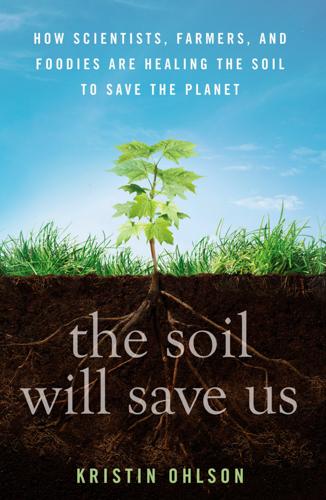
The Soil Will Save Us
by
Kristin Ohlson
Published 14 Oct 2014
Salvador RJ. “Food Choices: Modernity and the Responsibility of Eaters.” GreenFireTimes.com, December 31, 2012. http://greenfiretimes.com/2012/12/food-choices/#.UlQzuhbR2JU [inactive]. Samsel A, and Seneff S. “Glyphosate’s Suppression of the Cytochrome P450 Enzymes and Amino Acid Biosynthesis by the Gut Microbiome: Pathways to Modern Diseases.” Entropy 15(4):1416–1463, 2013. Tegtmeier EM and Duffy MD, “External Costs of Agricultural Production in the United States,” International Journal of Agricultural Sustainability, Vol. 1, No. 1, 2004. CHAPTER 7 Clancy K. Greener Pastures: How Grass-Fed Beef and Milk Contribute to Healthy Eating.
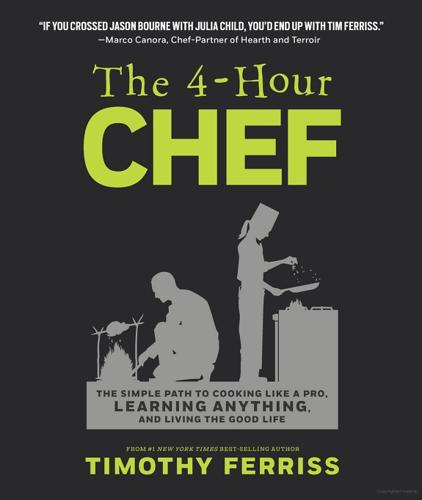
The 4-Hour Chef: The Simple Path to Cooking Like a Pro, Learning Anything, and Living the Good Life
by
Timothy Ferriss
Published 1 Jan 2012
Unlike most store-bought sauerkraut, which is pasteurized and devoid of bacteria (unless the label says “raw” or “naturally fermented” and is found in the refrigerated section), our homemade version will be loaded with, for lack of a better term, “good” bacteria.11 There are an estimated 10 times more bacterial cells in your body than human cells: 100 trillion of them to 10 trillion of you. These 100 trillion stowaways have been nicknamed the “microbiome.” The two primary strains of bacteria so far identified that influence fat absorption are Bacteroidetes and Firmicutes. Lean people have more Bacteroidetes and fewer Firmicutes; obese people have more Firmicutes and fewer Bacteroidetes. As obese people lose weight, the ratio of bacteria in their guts shifts to favor Bacteroidetes. Given that a strong cycle of antibiotics can leave your microbiome off-kilter for up to four years, I view sauerkraut as a smart investment in immune function and fat-burning capabilities.

Blueprint: The Evolutionary Origins of a Good Society
by
Nicholas A. Christakis
Published 26 Mar 2019
Nowadays, he spends most of his time in the Human Nature Lab, where his team explores a broad set of ideas, including understanding the evolutionary, genetic, and physiological bases of friendship; encouraging villages in the developing world to adopt new public health practices (working in locations in Honduras, India, and Uganda); mapping social networks in settings around the world; arranging people into online groups so that they behave better (such as being more cooperative and more truthful); developing artificial intelligence that helps humans address challenges in collective action; exploring the effect of social interactions on the human microbiome; and more. When he is not in the lab, he teaches at Yale University. Also by Nicholas A. Christakis Connected: The Surprising Power of Our Social Networks and How They Shape Our Lives Death Foretold: Prophecy and Prognosis in Medical Care Resounding Praise for Blueprint “The diversity of our cultures and personal identities masks the fact that we are one.
…
Fredericksen et al., “Three-Dimensional Visualization and a Deep-Learning Model Reveal Complex Fungal Parasite Networks in Behaviorally Manipulated Ants,” PNAS: Proceedings of the National Academy of Sciences 114 (2017): 12590–12595. 28. D. P. Hughes, T. Wappler, and C. C. Labandeira, “Ancient Death-Grip Leaf Scars Reveal Ant-Fungal Parasitism,” Biology Letters 7 (2011): 67–70. 29. T. R. Sampson and S. K. Mazmanian, “Control of Brain Development, Function, and Behavior by the Microbiome,” Cell Host and Microbe 17 (2015): 565–576. 30. A. D. Blackwell et al., “Helminth Infection, Fecundity, and Age of First Pregnancy in Women,” Science 350 (2015): 970–972. 31. A. Y. Panchin, A. I. Tuzhikov, and Y. V. Panchin, “Midichlorians—the Biomeme Hypothesis: Is There a Microbial Component to Religious Rituals?

Whiplash: How to Survive Our Faster Future
by
Joi Ito
and
Jeff Howe
Published 6 Dec 2016
Casey, “Linked-In, Sun Microsystems Founders Lead Big Bet on Bitcoin Innovation,” Moneybeat blog, Wall Street Journal, November 17, 2014, http://blogs.wsj.com/moneybeat/2014/11/17/linked-in-sun-microsystems-founders-lead-big-bet-on-bitcoin-innovation/. 46 “Enabling Blockchain Innovations with Pegged Sidechains,” r/Bitcoin, Reddit, http://www.reddit.com/r/Bitcoin/comments/2k070h/enabling_blockchain_innovations_with_pegged/clhak9c. 47 Timothy Leary, “The Cyber-Punk: The Individual as Reality Pilot,” Mississippi Review 16, no. 2/3 (1988). 48 T.F. Peterson, Nightwork (Cambridge, MA.: The MIT Press, 2011), https://mitpress.mit.edu/books/nightwork. 49 While the science on the human microbiome, which includes gut bacteria, is still evolving, there’s intriguing evidence that our bacteria have a strong influence not only on our health, but also on our behavior. See, for example, Charles Schmidt, “Mental Health: Thinking from the Gut,” Nature 518, no. 7540 (February 26, 2015): S12–15, doi:10.1038/518S13a.; Peter Andrey Smith, “Can the Bacteria in Your Gut Explain Your Mood?
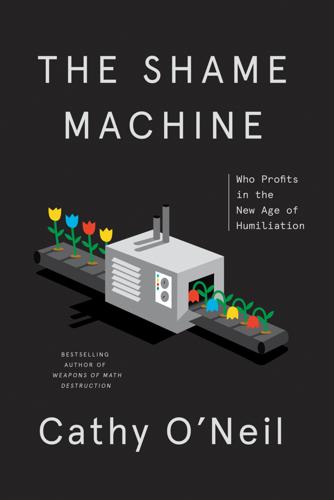
The Shame Machine: Who Profits in the New Age of Humiliation
by
Cathy O'Neil
Published 15 Mar 2022
Gunter argues that women risk damaging themselves by applying chemicals to the vulva, and that the safest approach is to stick with water. Jocelyn J. Fitzgerald, a surgeon and professor at the University of Pittsburgh Medical Center’s Magee-Womens Hospital, notes that the OMV! campaign creates a brilliant self-sustaining shame market. “Using their products while your vagina is perfectly fine will destroy your microbiome, give you real Bacterial Vaginosis, and prompt you to buy more Vagisil,” she tweets. “Don’t fall for it girls,” she adds. “Your vagina is fine.” * * * For most of human history, beauty was not something people achieved but instead a gift of the gods. Consider the Greek myth of Helen of Troy.
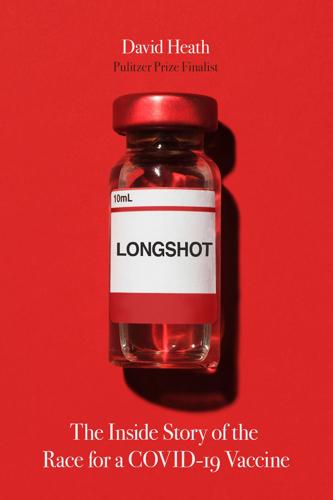
Longshot
by
David Heath
Published 18 Jan 2022
He searched for classes at MIT that would help him use his scientific training to evaluate the potential of startup companies. His philosophy, developed over time, was to find companies that, instead of making incremental change, were transformational. At about the same time, he was considering whether to invest in a microbiome startup involved in researching fecal transplants to cure a severe bacterial infection. Afeyan has a big personality and a big ego. Ultimately it would be his decision as to whether Flagship would invest in Rossi’s idea. It wasn’t an immediate decision. It would take months. Luigi Warren was gone before Cell Stem Cell decided to accept the paper.

The End of Pain: How Nutrition and Diet Can Fight Chronic Inflammatory Disease
by
Jacqueline Lagace
Published 7 Mar 2014
Hyper-permeability of intestinal mucosa Studies have shown that a person’s tendency to develop type 1 diabetes or another autoimmune disease is usually linked to an abnormally permeable intestinal barrier,31 which is due to the alteration of tight junctions located between the intestinal mucosa’s epithelial cells.32 The increased permeability of the intestinal mucosa leaves the intestinal immune system more exposed to foreign antigens,33 which in turn encourages the development of type 1 diabetes. 5 8 > t h e e n d o f pa i n Intestinal immunity The third element that plays a key role in the development of type 1 diabetes is intestinal immunity. We know that 80 percent of immune cells reside within the intestinal wall. A well-balanced microbiome (intestinal flora) favors the development and the activation of a normal immune system. For example, the immune systems of children who are born by natural means and breastfed are better able to protect them from autoimmune diseases and allergies. Biopsies on children with type 1 diabetes show an abnormal activation in the system of cytokines in the lamina propria, the site where immune cells reside below the intestinal epithelium.34 In individuals suffering from type 1 diabetes, there have been more reports of an aberrant response to food, which is shown in an increased immune response towards wheat and cow’s milk, which can favor inflammation of the intestines.35 This type of reaction is based on the same general principles described above for the abnormal immune response to α-gliadin in celiac disease.

The Buddha and the Badass: The Secret Spiritual Art of Succeeding at Work
by
Vishen Lakhiani
Published 14 Sep 2020
When I was part of the Innovation Board for the XPRIZE Foundation, I got to know many of America’s foremost visionaries and billionaires—from Peter Diamandis to Anousheh Ansari to Naveen Jain. Here is what they drilled into me: The BIGGER the vision, the EASIER it gets. Let me explain how Naveen Jain trained me on this. Naveen has founded multiple billion-dollar companies. And when we met first met, he had just created Viome, the gut microbiome testing company that is revolutionizing medicine. While scaling Viome to a $500 million valuation in two years he was also selected to receive $2.7 BILLION from NASA to send robots to the moon via Moon Express, another one of his companies. His prior company Infospace was first to realize the power of mobile phones and achieved market cap of over $35 billion.

The Strange Order of Things: The Biological Roots of Culture
by
Antonio Damasio
Published 6 Feb 2018
Wall, “Cross-Excitation in Dorsal Root Ganglia of Nerve-Injured and Intact Rats,” Journal of Neurophysiology 64, no. 6 (1990): 1733–46; Eva Sykova, “Glia and Volume Transmission During Physiological and Pathological States,” Journal of Neural Transmission 112, no. 1 (2005): 137–47. 25. Emeran Mayer, The Mind-Gut Connection: How the Hidden Conversation Within Our Bodies Impacts Our Mood, Our Choices, and Our Overall Health (New York: HarperCollins, 2016). 26. Jane A. Foster and Karen-Anne McVey Neufeld, “Gut-Brain Axis: How the Microbiome Influences Anxiety and Depression,” Trends in Neurosciences 36, no. 5 (2013): 305–12; Mark Lyte and John F. Cryan, eds., Microbial Endocrinology: The Microbiota-Gut-Brain Axis in Health and Disease (New York: Springer, 2014); Mayer, Mind-Gut Connection. 27. Doe-Young Kim and Michael Camilleri, “Serotonin: A Mediator of the Brain-Gut Connection,” American Journal of Gastroenterology 95, no. 10 (2000): 2698. 28.

Skin in the Game: Hidden Asymmetries in Daily Life
by
Nassim Nicholas Taleb
Published 20 Feb 2018
Third, we invoked the principle of simplicity, which was called antiscience. Why don’t we give these people rice and vitamins separately? After all, we don’t have genetically modified coffee that has milk with it. Fourth, we were able to show that GMOs brought a bevy of hidden risk to the environment, because of the higher use of pesticide, which kills the microbiome (that is, the bacteria and other life in the soil). I realized soon after that, owing to the minority rule, there was no point continuing. As I said in Book 3, GMOs lost simply because a minority of intelligent and intransigent people stood against them. THE COMPENSATION Simply, the minute one is judged by others rather than by reality, things become warped as follows.
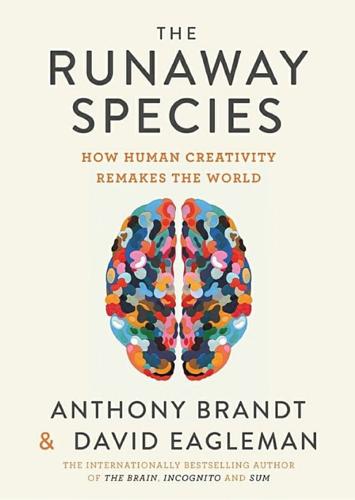
The Runaway Species: How Human Creativity Remakes the World
by
David Eagleman
and
Anthony Brandt
Published 30 Sep 2017
But the Vest doesn’t stop there: it can also be used to feed data about the state of a plane to pilots, the state of the International Space Station to astronauts, the state of an artificial leg to amputees, the invisible states of a person’s health (such as blood pressure and the health of one’s microbiome), or the machinations of a factory. It can hook directly to the internet to feed Twitter or stock-market data to the user in real time. It can be used to sense robots at a distance, including, one day, on the moon. The Vest can also feed in new data streams such as infrared or ultraviolet. Which of these uses will find matches in the market?
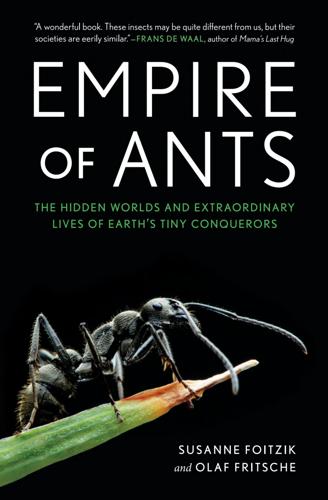
Empire of Ants: The Hidden Worlds and Extraordinary Lives of Earth's Tiny Conquerors
by
Susanne Foitzik
and
Olaf Fritsche
Published 5 Apr 2021
Extensive exchange of fungal cultivars between sympatric species of fungus-growing ants. Molecular Ecology, 11, 191–95. Marti, H. E. et al. (2015). Foundress queen mortality and early colony growth of the leafcutter ant, Atta texana (Formicidae, Hymenoptera). Insectes Sociaux, 62, 357–63. Meirelles, L. A. et al. (2016). Bacterial microbiomes from vertically transmitted fungal inocula of the leaf-cutting ant Atta texana. Environmental Microbiology Reports, 8, 630–40. colonies of leafcutter ants boast workers of different sizes with different tasks Burd, M. (2000). Body size effects on locomotion and load carriage in the highly polymorphic leaf-cutting ants Atta colombica and Atta cephalotes.
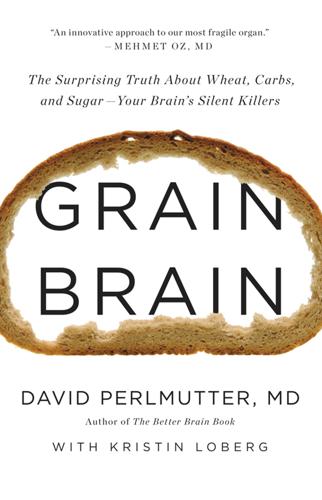
Grain Brain: The Surprising Truth About Wheat, Carbs, and Sugar--Your Brain's Silent Killers
by
David Perlmutter
and
Kristin Loberg
Published 17 Sep 2013
Bravo, et al., “Ingestion of Lactobacillus Strain Regulates Emotional Behavior and Central GABA Receptor Expression in a Mouse Via the Vagus Nerve,” Proceedings of the National Academy of Sciences 108, no. 138 (September 20, 2011): 16050–55. 10. A. C. Bested, et al., “Intestinal Microbiota, Probiotics and Mental Health: From Metchnikoff to Modern Advances: Part I—Autointoxication Revisited,” Gut Pathogens 5, no. 1 (March 18, 2013): 5. See also Parts II and III of the same report. 11. J. F. Cryan and S. M. O’Mahony, “The Microbiome-Gut-Brain Axis: From Bowel to Behavior,” Neurogastroenterology and Motility 23, no. 3 (March 2011): 187–92. 12. Michael Gershon, MD, The Second Brain: The Scientific Basis of Gut Instinct and a Groundbreaking New Understanding of Nervous Disorders of the Stomach and Intestines (New York: Harper, 1998). 13.
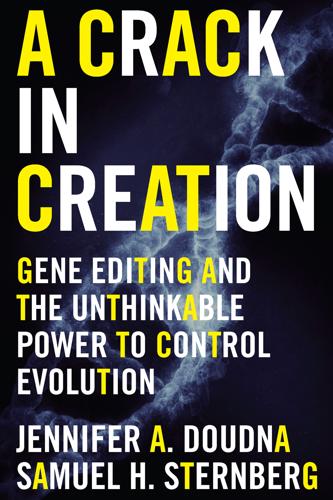
A Crack in Creation: Gene Editing and the Unthinkable Power to Control Evolution
by
Jennifer A. Doudna
and
Samuel H. Sternberg
Published 15 Mar 2017
There’s also no way to guarantee that this incredibly powerful tool won’t wind up in the hands of people who have no compunction about using gene drives to cause harm—and who may, indeed, be attracted to them for exactly that purpose. The ETC Group, a biotech watchdog organization, worries that gene drives—what they call “gene bombs”—could be militarized and weaponized to target the human microbiome or major food sources. But as frightening as gene drives could be, we might find it impossible to justify keeping them locked away in the lab. As Austin Burt wrote, “Clearly, the technology described here is not to be used lightly. Given the suffering caused by some species, neither is it obviously one to be ignored.”
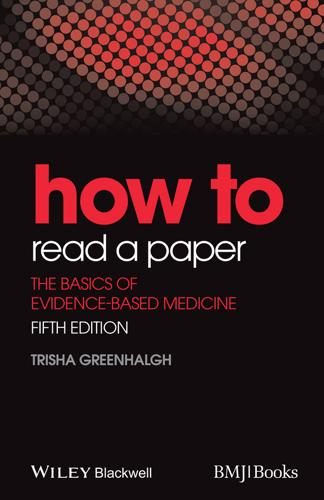
How to Read a Paper: The Basics of Evidence-Based Medicine
by
Trisha Greenhalgh
Published 18 Nov 2010
But the withdrawal rate from the trial was high, partly because when participants found a medication that worked, they just wanted to keep taking it rather than swap to the alternative! But despite its conceptual elegance and a distant promise of linking to the ‘personalised medicine’ paradigm in which every patient will have their tests and treatment options individualised to their particular genome, physiome, microbiome, and so on, the n of 1 trial has not caught on widely in either research or clinical practice. A review article by Lillie and colleagues [27] suggests why. Such trials are labour intensive to carry out, requiring a high degree of individual personalisation and large amounts of data for every participant.
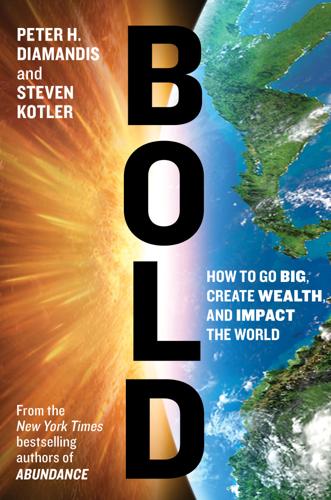
Bold: How to Go Big, Create Wealth and Impact the World
by
Peter H. Diamandis
and
Steven Kotler
Published 3 Feb 2015
“That’s not all,” continues Hessel. “It can have tooth-polishing nanoparticles designed to continue cleaning long after you’ve stopped brushing. It can be designed to detect infection or cancer or diabetes, turning different colors in the presence of each, or to release custom-designed probiotics that balance your microbiome. It can do all of these things. And that’s just the first thing you do in the morning.” To many, synthetic biology still sounds like science fiction, but what is transforming it into science fact is the same force driving all the other exponential technologies—Moore’s law. Because DNA is nothing more than a four-letter code, when genetics went digital, it was transformed into an information science and thus hopped on the exponential expressway.

Origin Story: A Big History of Everything
by
David Christian
Published 21 May 2018
Today, prokaryotes still dominate the biosphere. On and within your body, there are probably more prokaryotic cells than cells with your own DNA. But we ignore them (until they give us a stomachache or cold) because they are so much smaller than our own cells. This vast shadow world that we share with prokaryotes is known as the microbiome. Until recently, it was tempting to think that the history of single-celled organisms was boring, so we could happily skip the first three billion years of the biosphere’s history. Today we are learning that we can’t make sense of the biosphere’s recent history without understanding the much longer era of little life.
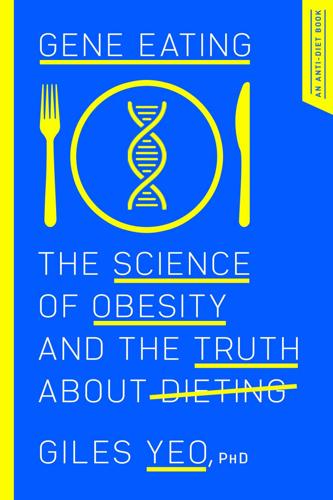
Gene Eating: The Science of Obesity and the Truth About Dieting
by
Giles Yeo
Published 3 Jun 2019
Are there diets out there, however, which do get you to become healthier without necessarily getting you to lose weight? It was the end of November in 2016, and I was in Cordoba, Spain, to speak at a conference called ‘New Frontiers in Obesity Research’. As you might imagine, it was just the kind of thing that floated my boat. There were symposia on adipocyte (fat cell) biology, the brain and obesity, the microbiome and obesity and new drug targets in obesity. And even though (or maybe given that) it was an obesity meeting, the food was excellent. We had a wonderful ‘Tapas Night’, where the highlight for me was a fabulous dish made with Iberico pork, which comes from a traditional breed of Spanish pig that has been raised on acorns.

When It All Burns: Fighting Fire in a Transformed World
by
Jordan Thomas
Published 27 May 2025
“Maybe they just like to play.” The truth was, no one really knew the details of how the forest was responding to our fire. A scientist from Australia was measuring the soil to learn how fire affected the microbial life beneath our feet. A pair of NASA researchers lugged around a machine to document the microbiome of the smoke. A PhD student was tracking how spores in oak leaves responded to the flames. An ornithologist was trying to understand how smoke affected the respiratory systems of birds. A geographer was using a drone to track plant regrowth. Our seat at the edge of this fire was a seat at the edge of the scientific unknown.
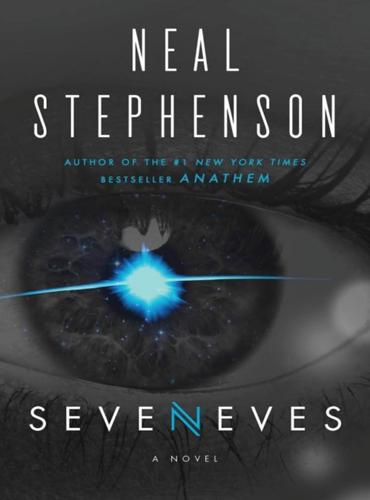
Seveneves
by
Neal Stephenson
Published 19 May 2015
It had not been a rhetorical question. He was awaiting orders. Beled Tomov looked at him too. “How is she?” Ty asked. “Pulse, respiration okay?” “I think it is the usual,” Beled said with a nod. Meaning that abrupt hormone shifts in Kath’s system were giving her something akin to morning sickness. Her microbiome—the ecosystem of bacteria that lived in her gut and on her skin—had been thrown into disarray, and she was being colonized by any old germs, including ones from the Diggers that had never been exposed to a Moiran body. “Can you put her on your back or something?” Beled nodded and dropped to one knee.
…
As soon as it happened she went into what I’m guessing is a classic POTESH.” This was military jargon for post-traumatic epigenetic shift. “That is confirmed,” said Hope, who seemed to have finished an initial scan of Kath’s vital signs. “Higher metabolism and hyperacute senses are observable. Her microbiome is a mess; I’m tuning it up with probiotic supplements that’ll be a better fit with her new phenotype. Suggested by the nausea are big hormone shifts. Possibly predictive of some future . . .” “Testosterone poisoning?” Ty suggested, finishing Hope’s thought. Hope responded with a diffident nod of the head.

Imaginable: How to See the Future Coming and Feel Ready for Anything―Even Things That Seem Impossible Today
by
Jane McGonigal
Published 22 Mar 2022
,” Bulletin of the Atomic Scientists, February 8, 2021, https://thebulletin.org/2021/02/why-is-america-getting-a-new-100-billion-nuclear-weapon/; Kingston Reif, “CBO: Nuclear Arsenal to Cost $1.2 Trillion,” Arms Control Association, December 2017, https://www.armscontrol.org/act/2017-12/news/cbo-nuclear-arsenal-cost-12-trillion. 7 Terence Babwah et al., “Exercise Prescriptions Given by GPs to Sedentary Patients Attending Chronic Disease Clinics in Health Centres—the Effect of a Very Brief Intervention to Change Exercise Behavior,” Journal of Family Medicine and Primary Care 7, no. 6 (November 2018): 1446–51, https://doi.org/10.4103/jfmpc.jfmpc_84_18; Falk Müller-Riemenschneider et al., “Long-Term Effectiveness of Interventions Promoting Physical Activity: A Systematic Review,” Preventive Medicine 47, no. 4 (October 2008): 354–68, https://doi.org/10.1016/j.ypmed.2008.07.006. 8 Scott H. Kollins et al., “A Novel Digital Intervention for Actively Reducing Severity of Paediatric ADHD (STARS-ADHD): A Randomised Controlled Trial,” Lancet Digital Health 2, no. 4 (April 2020): e168–78, https://doi.org/10.1016/S2589-7500(20)30017-0. 9 Sujata Gupta, “Microbiome: Puppy Power,” Nature 543 (March 30, 2017): S48–S49, https://doi.org/10.1038/543S48a. 10 Genevieve F. Dunton and Margaret Schneider, “Perceived Barriers to Walking for Physical Activity,” Preventing Chronic Disease 3, no. 4 (October 2006), https://www.ncbi.nlm.nih.gov/pmc/articles/PMC1779280/; Kristen A.

Nine Pints: A Journey Through the Money, Medicine, and Mysteries of Blood
by
Rose George
Published 22 Oct 2018
All this adds up to a perfect set of conditions for bacteria to thrive and this is desirable: of the thirty-nine trillion bacteria we’re now thought to carry (or perhaps they carry us), most are harmless.32 Even Staphylococcus aureus lives in the vaginas of 8–14 percent of women without causing harm.33 Our vaginal microbiome is useful and protective. But when certain conditions prevail, toxic strains of staph can flourish, particularly the toxic strain TSST-1, which in 1978 was first linked to what the pediatrician James Todd named “toxic shock syndrome” (TSS) after encountering a disturbingly virulent chain of infection in seven young children.34 I remember TSS, along with the punishing drought of 1976 and Duran Duran, as having a starring role during my teen years, because I knew it meant I should be scared of tampons.
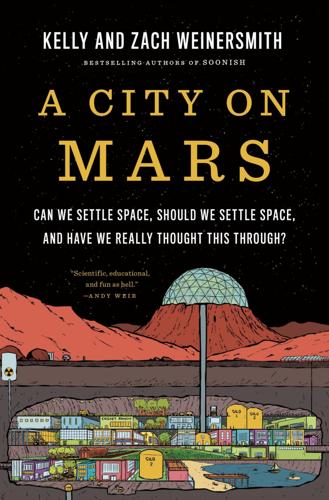
A City on Mars: Can We Settle Space, Should We Settle Space, and Have We Really Thought This Through?
by
Kelly Weinersmith
and
Zach Weinersmith
Published 6 Nov 2023
Not only is it harder to test, but if humans do have major reproductive issues off-world, it’ll be extremely hard to know why. Suppose tomorrow you had a Martian settlement and observed a rate of developmental abnormality that was three times normal. Where do you point the finger? Maybe it’s the altered gravity or maybe it’s the radiation. Maybe it’s the radiation but only in concert with an altered microbiome and the stress of trying to survive in a hostile environment. Maybe it’s some ultra-low-concentration SMAC gas nobody’s paying enough attention to. And if you’re talking about a child conceived and born in space, you also have to think about time—did the problem arise in the parents’ gametes, in utero, sometime after birth, or what?

A Half-Built Garden
by
Ruthanna Emrys
Published 25 Jul 2022
Greenery peeked somberly from rooftops, but even the trees at street level seemed too small, too immaculate. This was a habitat, as Cytosine had pointed out. And I doubted they had Cytosine’s careful science of ecological niches. Nor had the aisland’s designers had access to the various biolibraries from which the watersheds still labored to restore decimated microbiomes and insect populations, all the things that made leafy canopies thrive. I thought of the night-blooming garden, combining flowers from a dozen ecosystems. “Who founded Zealand, originally?” Asterion was a more recent merger, I vaguely recalled, the result of some alliance among former billionaire lineages.
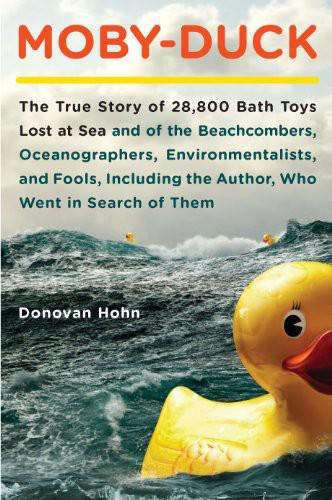
Moby-Duck: The True Story of 28,800 Bath Toys Lost at Sea and of the Beachcombers, Oceanographers, Environmentalists, and Fools, Including the Author, Who Went in Search of Them
by
Donovan Hohn
Published 1 Jan 2010
When he boarded the Louis in Resolute, he’d brought with him, in addition to Erin Freeland-Ballantyne, a number of supernumeraries whom he referred to as VIPs—luminaries of oceanography, all dressed, like him, in matching fleece cardigan vests onto which was embroidered the logo of this expedition—the C30 project, Carmack had called it, for Canada’s Three Oceans. His idea for the second leg of our voyage was to turn the Louis into a kind of icebreaking, traveling oceanographic lyceum. During the lectures the VIPs delivered, I learned many interesting facts—for instance, that in the “microbiome” of the human body, only a portion of our cells, genetically speaking, are human in origin. The rest are bacterial. (While learning this, I found myself looking down, examining my midriff, into which, in the main mess, I’d recently deposited some potatoes, carrots, and buttery cod. The cloth between the buttons of my quick-dry adventure shirt was puckering over the waistband of my quick-dry adventure pants in an unflattering way, and I tried to smooth the puckers flat.)
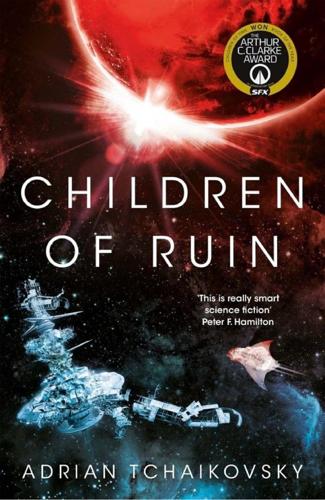
Children of Ruin
by
Adrian Tchaikovsky
Published 13 May 2019
He sends the drone over the plateau’s edge, looking down on a vast expanse of red desert, disfigured by technicolour lakes like violent acne where some life or inorganic process stains the water angry rainbow colours. He sees stretches of mottling where some lifeform turns its darkness to drink the waning sunlight, and other regions of brown and rust-orange and even green, actual green, that tell of other life – little microbiomes around a meagre resource that lets some alien thing claw life out of the interior of the hot, dusty planet’s single continent. He sees another city. It is ten times larger than the mere hamlet near their crash site; another grid, or perhaps an expansion, a larger map that contains within it a copy of the smaller.
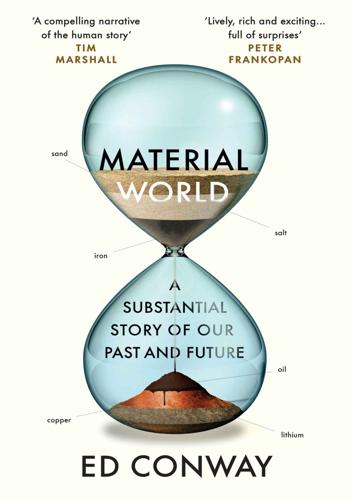
Material World: A Substantial Story of Our Past and Future
by
Ed Conway
Published 15 Jun 2023
Even so, it is hard to envisage no damage whatsoever, and each new study provides more causes for caution: a recent one found that actually these seemingly inert nodules in the Clarion-Clipperton Zone provide a habitat for half the larger species in the area. The deeper issue is that we know so little about these aquatic ecosystems that even the most stringent environmental safeguards will almost certainly miss something. Perhaps it will be sediment disturbance, perhaps noise pollution or changing the microbiome beneath the seafloor – one way or another, humankind’s intervention is bound to cause ecological reverberations. Back in Jamaica, the ISA has been drawing up those environmental rules – how close one can mine to an active black smoker, what to do when you encounter marine life, etc. – but some have questioned whether this sleepy organisation in its quiet building is equipped to manage the process.
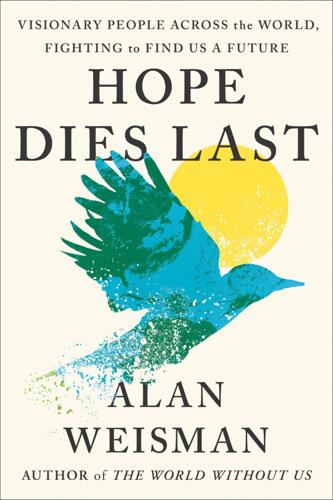
Hope Dies Last: Visionary People Across the World, Fighting to Find Us a Future
by
Alan Weisman
Published 21 Apr 2025
Today, their kernels are second only to rice in providing our species with calories. Wild teosinte still thrives in Mexico’s stony highlands, in balance with naturally occurring nitrogen produced by local soil microbes. But mass cultivation of improved strains of corn, wheat, and rice worldwide have created a nutrient need far greater than the soil microbiome can provide. “We outpaced evolution,” mused Temme. The way humans had strong-armed nature with the Haber-Bosch process had allowed 8 billion of us to be alive at the same time, but had also chemically undermined air, water, and soil—along with the weather. In addition to the CO2 that Haber-Bosch spews, because farmers overapply synthetic fertilizer to cover losses from runoff or evaporation, the excess nitrates feed soil microbes that belch potent nitrous oxide.
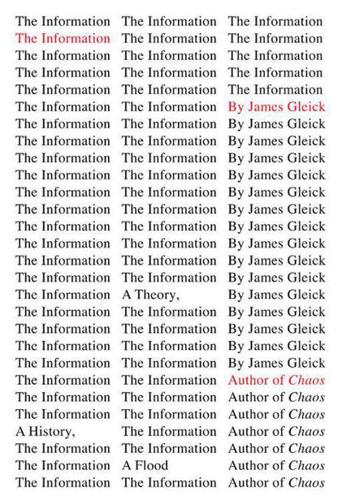
The Information: A History, a Theory, a Flood
by
James Gleick
Published 1 Mar 2011
The gene-centered perspective has helped biologists appreciate that the genes composing the human genome are only a fraction of the genes carried around in any one person, because humans (like other species) host an entire ecosystem of microbes—bacteria, especially, from our skin to our digestive systems. Our “microbiomes” help us digest food and fight disease, all the while evolving fast and flexibly in service of their own interests. All these genes engage in a grand process of mutual co-evolution—competing with one another, and with their alternative alleles, in nature’s vast gene pool, but no longer competing on their own.
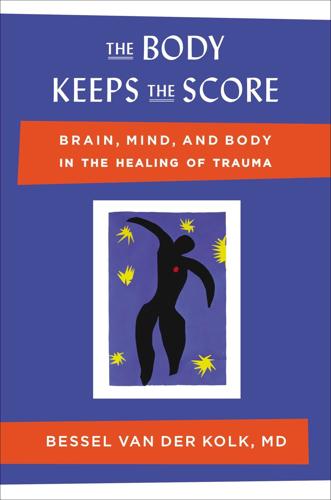
The Body Keeps the Score: Brain, Mind, and Body in the Healing of Trauma
by
Bessel van Der Kolk M. D.
Published 7 Sep 2015
In 2010 Thomas Insel, director of the National Institute of Mental Health, published an article in Scientific American entitled “Faulty Circuits,” in which he called for a return to understanding mind and brain in terms of the rhythms and patterns of electrical communication: “Brain regions that function together to carry out normal (and abnormal) mental operations can be thought of as analogous to electrical circuits—the latest research shows that the malfunctioning of entire circuits may underlie many mental disorders.”34 Three years later Insel announced that NIMH was “re-orienting its research away from DSM categories”35 and focusing instead on “disorders of the human connectome.”36 As explained by Francis Collins, director of the National Institutes of Health (of which NIMH is a part), “The connectome refers to the exquisitely interconnected network of neurons (nerve cells) in your brain. Like the genome, the microbiome, and other exciting ‘ome’ fields, the effort to map the connectome and decipher the electrical signals that zap through it to generate your thoughts, feelings, and behaviors has become possible through development of powerful new tools and technologies.”37 The connectome is now being mapped in detail under the auspices of NIMH.
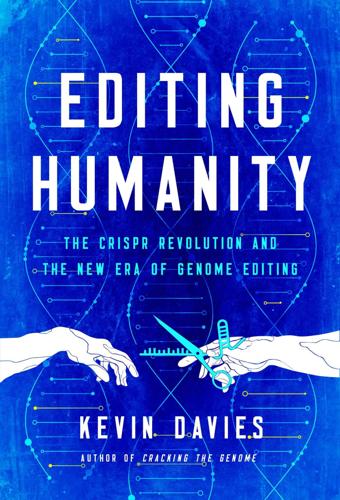
Editing Humanity: The CRISPR Revolution and the New Era of Genome Editing
by
Kevin Davies
Published 5 Oct 2020
In 2013, Kim Seed and colleagues at Tufts University made a remarkable discovery: a phage that has pilfered CRISPR repeats from bacteria—like a hostage grabbing an assailant’s weapon—and turned it on the host cell.7 Banfield’s team has also discovered so-called jumbo phages—phages with giant genomes larger than some bacteria, blurring the boundary between life and death—lurking in the gut microbiome of people in Bangladesh with a non-Western diet. The CRISPR machinery not only helps the viruses evade the bacterial defense mechanisms but may also thwart competing viruses.8 It would actually be several years before the two women, both leading large groups with different research interests and areas of expertise, managed to collaborate on a research paper, but Banfield had piqued Doudna’s interest.

The Singularity Is Nearer: When We Merge with AI
by
Ray Kurzweil
Published 25 Jun 2024
A major drawback of human trials is that (depending on the type of drug and the stage of the trial) they involve only about a dozen to a few thousand subjects.[27] This means that in any given group of subjects, few of them—if any—are statistically likely to react to the drug in exactly the way your body would. Many factors can affect how well a pharmaceutical works for you, such as genetics, diet, lifestyle, hormone balance, microbiome, disease subtype, other drugs you’re taking, and other diseases you may have. If no one in the clinical trials matches you along all those dimensions, it might be the case that even though a drug is good for the average person, it’s bad for you. Today a trial might result in an average 15 percent improvement in a certain condition for 3,000 people.
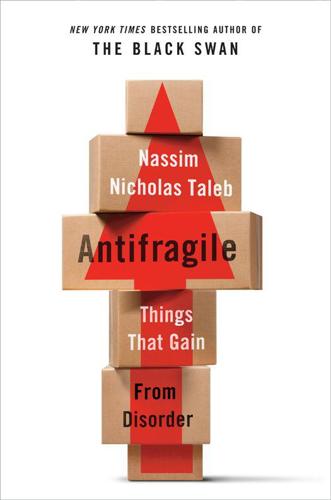
Antifragile: Things That Gain From Disorder
by
Nassim Nicholas Taleb
Published 27 Nov 2012
Gray, John, 2011, The Immortalization Commission: Science and the Strange Quest to Cheat Death. Allen Lane. Greenwood, R., and R. Suddaby, 2006, “The Case of Disappearing Firms: Death or Deliverance?” Journal of Organizational Behavior 27(1): 101–108. Grice, E. A., and J. A. Segre, 2011, “The Skin Microbiome.” Nature Reviews Microbiology 9(4): 244–253. Griffith, S. C., I.P.F. Owens, and K. A. Thuman, 2002, “Extrapair Paternity in Birds: A Review of Interspecific Variation and Adaptive Function.” Molecular Ecology 11: 2195–212. Grob, Gerald N., 2002, The Deadly Truth: A History of Disease in America.

Never Bet Against Occam: Mast Cell Activation Disease and the Modern Epidemics of Chronic Illness and Medical Complexity
by
Lawrence B. Afrin M. D.
,
Kendra Neilsen Myles
and
Kristi Posival
Published 15 Jan 2016
Typically caused by chronic oral infection, I’ve seen this as a symptom in some MCAS patients that “magically goes away” once the underlying problem (i.e., the MCAS) gets diagnosed and once effective (though, as usual, individualized) mast-cell-directed treatment is found. Get the underlying problem under control and then the immune system will start working better and get rid of chronic bacteria and fungi that shouldn’t be in our microbiome. Hashimoto's thyroiditis “Hash´-ih-moh´-tohz thy-roid-īt-is.” Hashimoto’s is an autoimmune disease in which the immune system attacks and largely destroys the thyroid gland (usually first by erroneously manufacturing an antibody against one part of the thyroid gland or another, and then the rest of the immune system follows the antibody’s lead and further attacks the gland), causing hypothyroidism.

Big Data and the Welfare State: How the Information Revolution Threatens Social Solidarity
by
Torben Iversen
and
Philipp Rehm
Published 18 May 2022
One of the sources of data is independent laboratories, which have greatly proliferated over time, and these data can be combined with other health data to produce detailed profiles of individual health parameters with enormous predictive power. The promise of “personalized medicine” is based on such individual information, and former US President Obama’s Precision Medicine Initiative reads like an impassioned call for more data on people’s underlying health risks – “including their genome sequence, microbiome composition, health history, lifestyle, and diet.” As AI crunches the numbers, unexpected predictors of health and mortality may turn up as well. For example, it turns out that mortality outlook can be informed by charitable giving and pet ownership (Balasubramanian, Chester, and Milinkovich 2020, 6) or floor of the residence (Panczak et al. 2013).
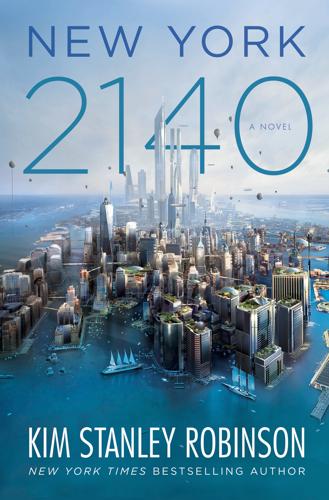
New York 2140
by
Kim Stanley Robinson
Published 14 Mar 2017
But they were able to get through most of them, and city crews were out in force working on the cleanup. There was a dank vegetable jungly smell in the air, and many people on the water were wearing white face masks. Mr. Hexter snorted at this. “Little do they know they’re depriving themselves of needed nutrients and helpful microbiome teammates.” They found that the most common arboreal survivors of the wind’s onslaught had been potted trees, which had presumably been knocked on their sides and remained prone through the storm, and now only had to be lifted upright to restore some green to the scene. They looked battered but unbowed; they were like the city itself, Mr.
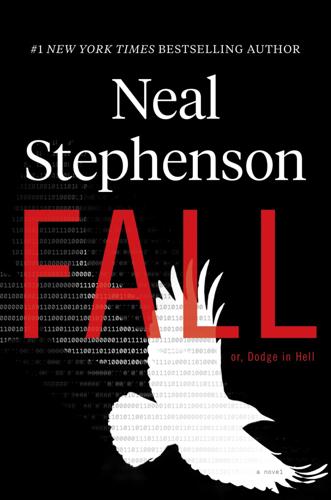
Fall; Or, Dodge in Hell
by
Neal Stephenson
Published 3 Jun 2019
Between the scientists from the Waterhouse/Forthrast camp and those who worked for El, there was vociferous agreement that the word “brain” needed to be banned from learned discourse, or put in scare quotes. They had to move beyond the practice of chopping off the heads of the deceased and throwing away the rest. Henceforward every client would be scanned in toto, heads to toes, and efforts would be made to collect data about their microbiome and any other non-neurological phenomena that would be overlooked by an ion-beam scanning system that only cared about neurons. “I beg your pardon,” C-plus said. “You have clients. Some of them are no longer among the living. You have been subjecting their remains to the most advanced protocols available.”

Artificial Intelligence: A Modern Approach
by
Stuart Russell
and
Peter Norvig
Published 14 Jul 2019
Each of the lexical categories ends in ... to indicate that there are other words in the category. For nouns, names, verbs, adjectives, and adverbs, it is infeasible even in principle to list all the words. Not only are there tens of thousands of members in each class, but new ones—like humblebrag or microbiome—are being added constantly. These five categories are called open classes. Pronouns, relative pronouns, articles, prepositions, and conjunctions are called closed classes; they have a small number of words (a dozen or so), and change over the course of centuries, not months. For example, “thee” and “thou” were commonly used pronouns in the 17th century, were on the decline in the 19th century, and are seen today only in poetry and some regional dialects.